I love wearing sunglasses. One of the main reasons I changed to contact lenses years and years ago was that I wanted to wear sunglasses. My eyes are quite light sensitive. It doesn't take much for me to squint and feel overwhelmed with light. Plus, there is no denying it: sunglasses just look cool.
Another reason I love sunglasses is that they make the world look so much better. The warm golden shade that everything gets when you look through your sunglasses is beautiful. When I post-process my photos I very often make them warmer in order to make the landscape look more like it does through sunglasses. People who don't wear sunglasses probably wonder what on earth I'm doing. Well, that's what I'm doing.
But perhaps my most important reason I have for wearing sunglasses is that they protect my eyes from dust and sand. Like I mentioned, I wear contact lenses. Rigid Gas Permeable Contact Lenses, the kind you wear for 1-2 years before replacing them. As everyone knows who uses this type of contact lenses, getting something in your eye while wearing them is just a teeny tad more desirable than stepping on LEGO's with bare feet (nothing beats that). It hurts so much you want to rip your eyeball out.
The problem I have with sunglasses is two-fold: 1) I break them, and 2) I lose them. This year alone I broke or lost an average of one pair per month so far. This often happens while I'm out taking pictures. When I stop to set up my camera to shoot an image, I take my sunglasses off. You can't look into your viewfinder wearing sunglasses. And since I need both hands to adjust the settings and tripod, I stick the sunglasses in a pocket. Then I forget about them and move along. Then when I remember them and want to put them back on, they are no longer in my pocket. Even if I backtrack and try to find them, I never do.
Because I lose so many sunglasses, I can't invest in the more expensive brands. I have always just bought the cheapest ones I could find at the grocery store or at gas stations. This leads to the second problem: breaking them. Cheap sunglasses are not even worth the cheap price they are sold for. They break just from being put on my big head a few times, or from being dropped on the ground, even if the ground is soft.
A few weeks ago the final straw broke the camel's back. I was out on a little photo trip on my bicycle. After only about 15 minutes, I stopped to check Google Maps on my cell phone. I took my brand new, cheap pair of sunglasses off so I could see the screen. Of course, I then dropped them on the forest path... and one of the lenses fell out. I managed to put it back in, but it was only a matter of time. Before I reached my destination deep in the woods, the lens fell out again, and this time it was impossible to reattach. The frame was broken.
Now, this particular day was one of the windiest days of the season. Dust and sand was whirling around in the air. It wasn't long before some of it got in my unprotected eye. It was painful as hell, but I braved through it and did my photo shooting of an area I'd been wanting to go to for months. However, heading home though the forest turned into a nightmare. First the chain fell off my bike, and I had to put it back on using only one eye. Then I got something in my other eye. I was blinded and in horrible pain. At one point I stopped and found my little spare contact lens suction cup that I always carry around for emergencies like this, only I'd never attempted to take out a contact lens in the middle of the forest before. I had about a 75% chance of dropping the contact lens on the path, which would have sealed its fate, but miraculously I managed to get it wiped off a little bit with my finger and put it back in my eye. It didn't help a whole lot. My eye was already red and swollen. But it was enough to get me the rest of the way home where, in a - for me - rare fit of rage, I hurled my broken pair of sunglasses on the table and swore I'd never buy cheap crap like that again.
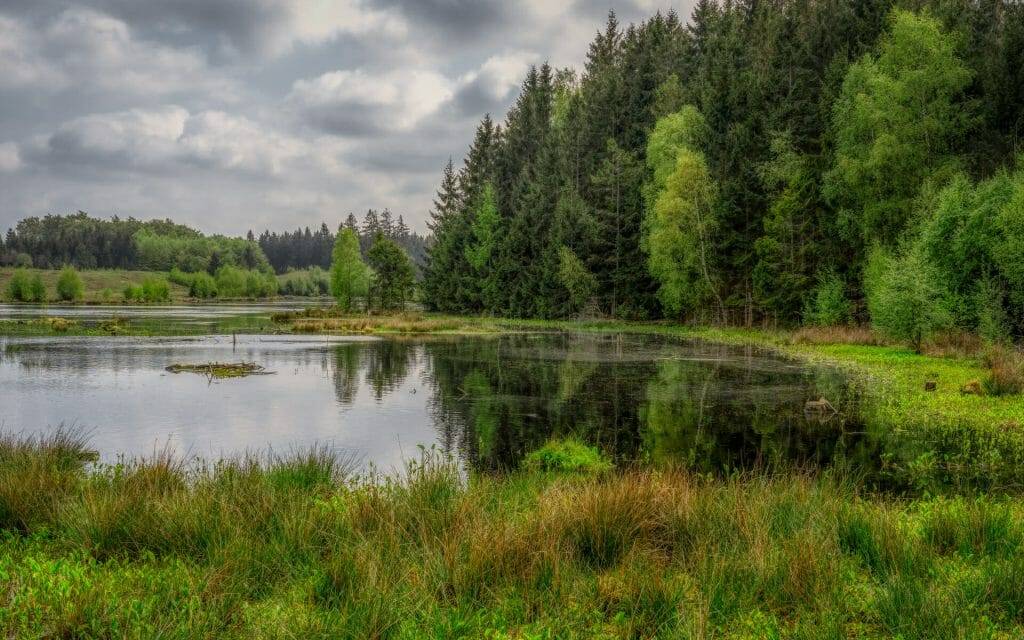
I managed to capture this image on my ill-fated excursion. While I'm pretty happy with it, my images from that day, like my general fortune, left a bit to be desired.
As a consequence I went online to see if I could find some sunglasses that didn't cost a fortune and were better quality than what the grocery stores have to offer. My search was a success. Excited to have found a solution to at least one of my problems, I ordered four pairs - some with a reading area, some for driving during the day, some for driving at night, and some for riding my bike.
When they arrived after only a couple of days, they did indeed seem like they were quite a bit sturdier than my usual sunglasses, which means I may have solved the problem of always breaking my sunglasses. As for the losing my sunglasses part, well, I did already lose two of the four pairs in the 1½ months that have passed since I bought them, so there is some work left to be done in that department. But I am now working tirelessly to find a solution to it. Most recently, I got a little case that I can attach to my belt. If I can get used to putting my sunglasses in that case while I take photos out in the woods - and zip the zipper - there is a chance I can reduce my consumption of sunglasses by a significant number. We shall see.
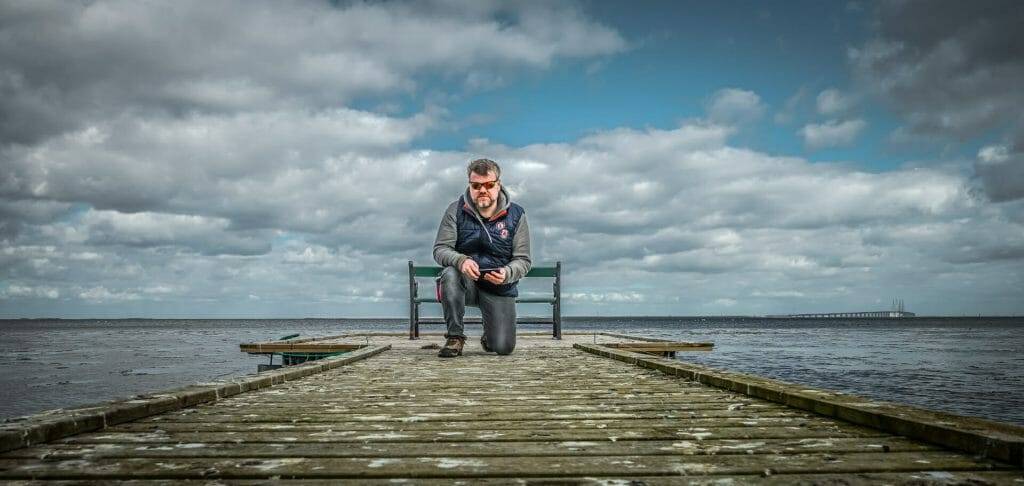
Perhaps my favorite picture of myself wearing sunglasses. It's a few years old, so the sunglasses on my head are long gone... probably lost in a forest somewhere, where they will remain until the end of time.
Warm summer afternoon/evening. Man, I struggled finding good compositions and good light, but still had a nice time. The photography part was saved by my trusty, old favorite tree (bottom) that I took so many pictures of in the past. This one ranks in the top 2. I have started to experiment a little with over-exposing the sky and background.
The first image below isn't too bad either. The baby tree in the foreground has potential due to its random position in the middle of a straight path between two rows of bigger trees, so I think I will return to the spot with better light and fall leaves.
A beautiful midsummer evening in my new favorite part of the local forest. I started out with some low-sun-through-the-leaves shots, which turned out quite well. I then moved on to my real objective: Røde Dam, a forest lake I discovered this past winter and where I've been wanting to go for a sunset shoot ever since. I was happy with the result, although I may return for more when fall arrives. Obviously, the sun won't be in such a favorable position, but I hope it won't matter too much. At least the mosquitos won't be quite so bad. They were brutal on this evening. On top of that, on my way home on my bicycle, I was surprised by a rain shower.
Remember this image?
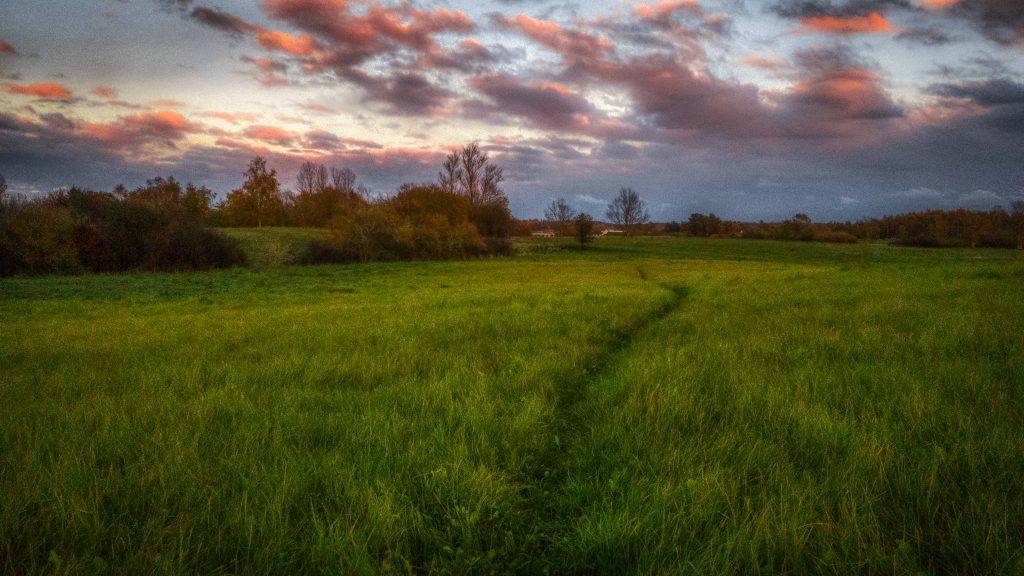
Probably not, but I posted it in the fall after roaming one of my favorite local areas, a piece of beautiful open land with tall grass, scattered trees, bushes and ponds. I have seen rabbits there, and herons. I have walked it in a foot of mud and snow and when the ground split in zig-zag cracks due to drought.
That's all over now. Today it looks like this:
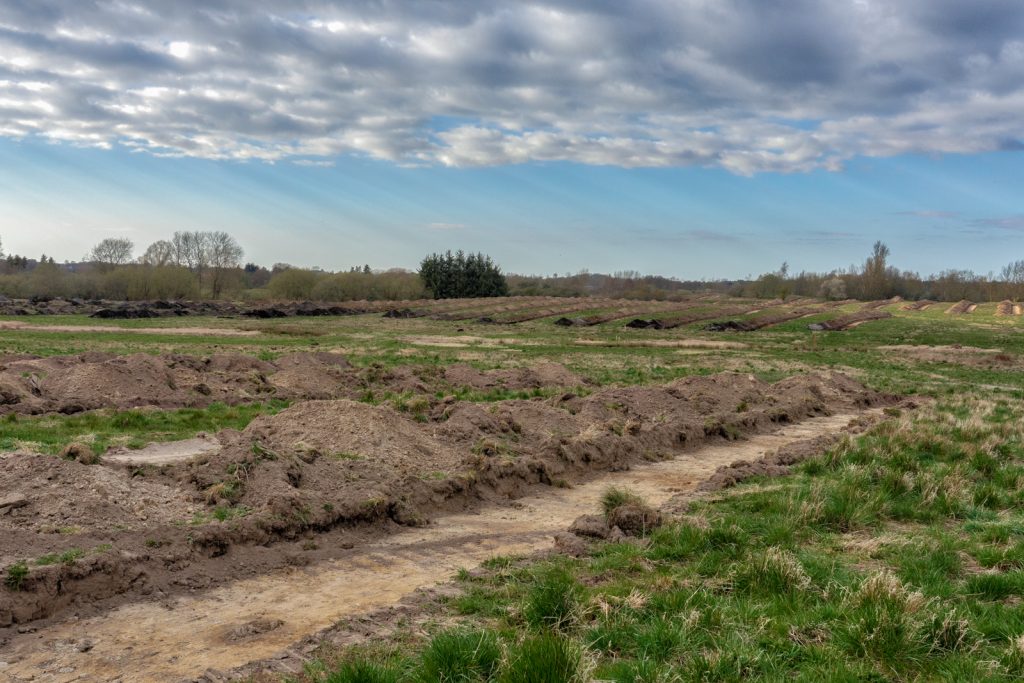
The land is now torn apart by hundreds of dirt piles and ditches like these. Progress is coming. In a year's time this will be a new part of the city, a new residential area for families with children. The rabbits and herons will be displaced and die. The rare piece of open, non-cultivated land will be but a memory.
I just realized all this the other day as I happily walked out there to see if I could put a new spin on this familiar territory with my camera. Sure, I'd seen that they were building a few houses near the road, but I never knew they were about to cover the entire 10 hectares in pavement, bricks, and hedges.
The sight of the destruction of this beautiful area almost made me nauseous. But it wasn't long before this new realization turned into an opportunity. Making my way across and around the newly dug ditches had led me close to the old farm house that struts in the middle of the area. I had always steered in a long circle around the farm house as I didn't want to get yelled at by whoever inhabited the place. Despite the lack of fences and crops, the land I was walking on may very well have been theirs.
But now, having ended up almost in their backyard, something seemed off about the place. I saw broken windows. I saw weeds everywhere. I saw junk randomly tossed on the ground. Holy cow, the the whole thing was abandoned!
Now, if you are not a photographer yourself, you don't know that the word "abandoned" is sweet music in any photographer's ears. Few things are as photogenic as abandoned locations that have been taken over by nature. There is just something about the contrast between human activity and the unrelenting nature that makes for good images.
Fearing a wrecking crew might show up at any minute to level the house, I unfolded my tripod and got to work. This could very well be my only chance to document the old buildings and the soul whose presence I could sense so clearly.
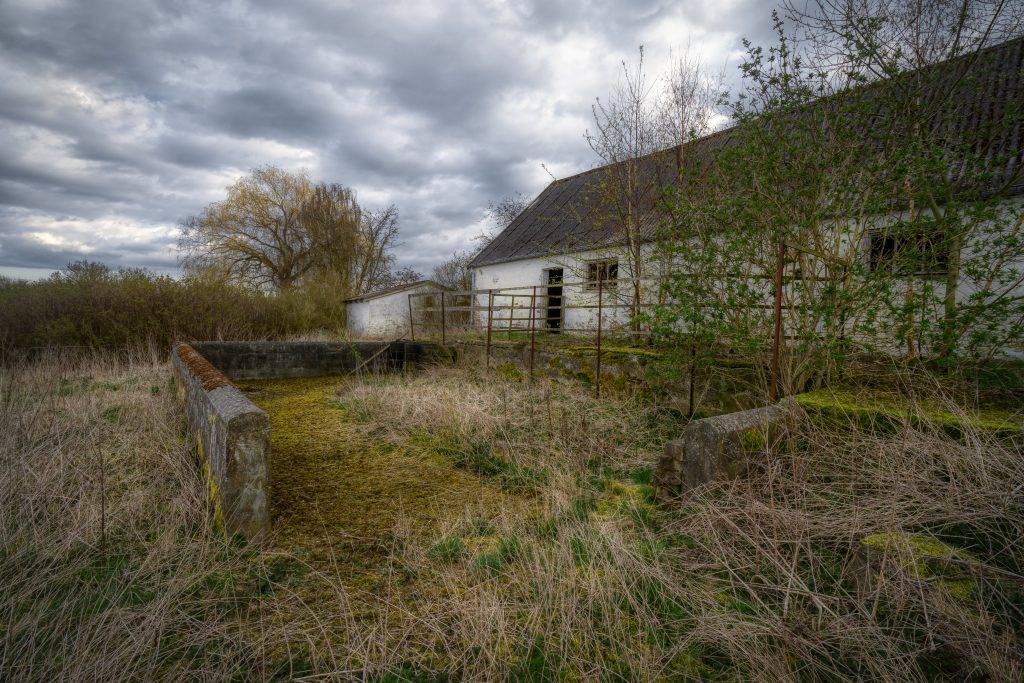
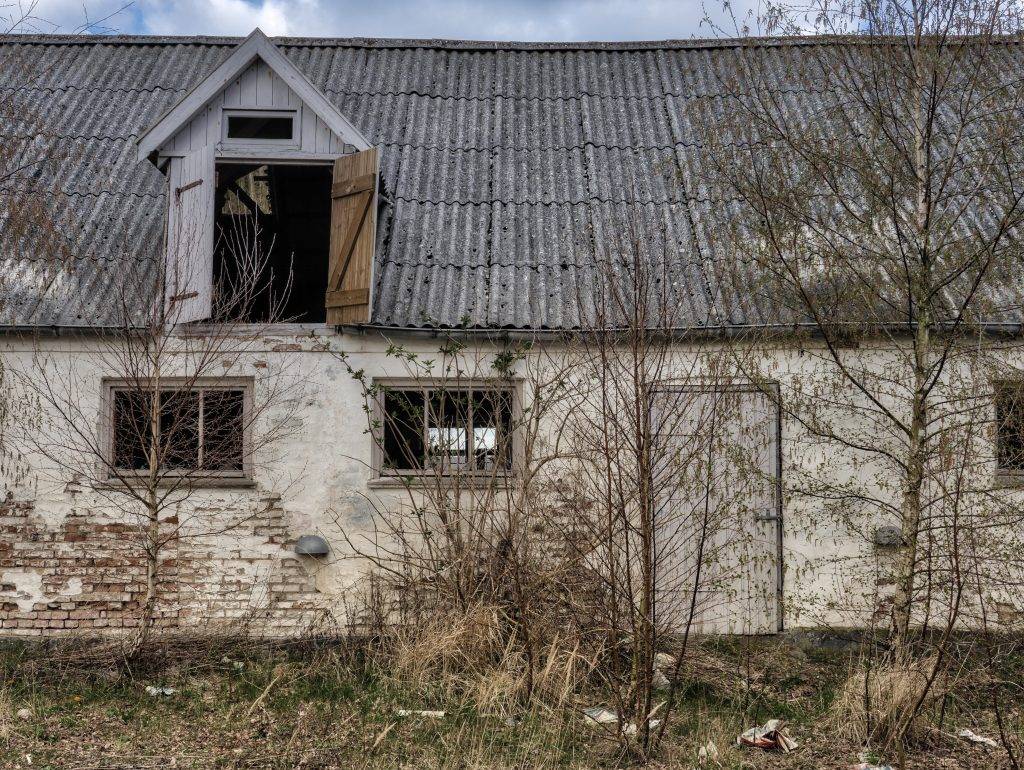
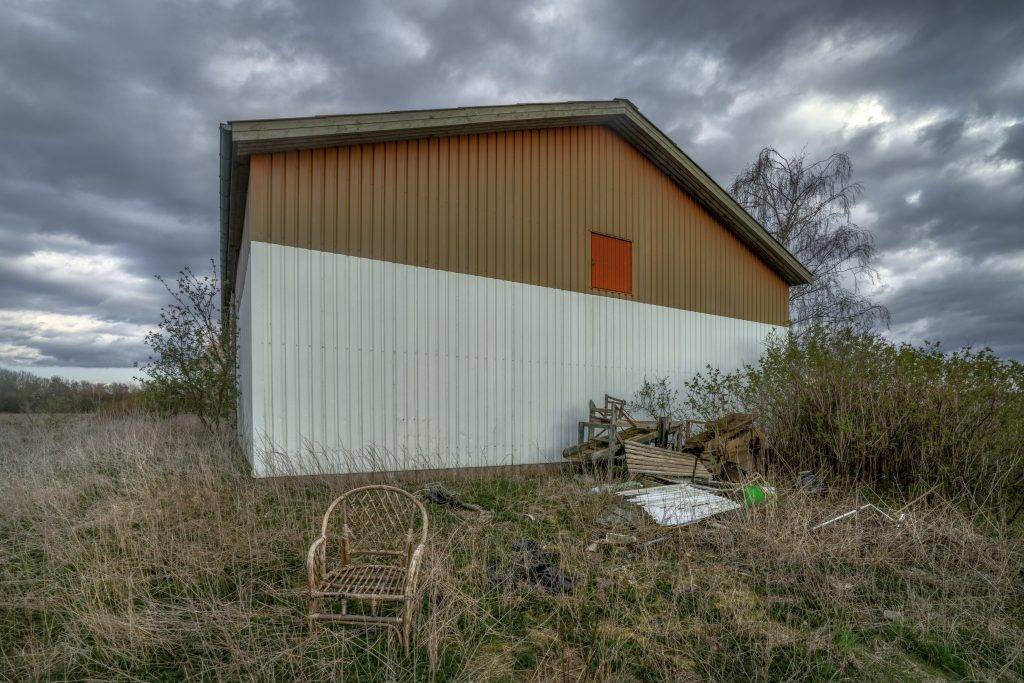
As I circled the house, it became more and more obvious that the farm had been in a state of abandonment and decay for years, possibly a decade or more. The walls were crumpling, trees were growing too close to the buildings. The inside of the stable showed no signs of animals having been present in ages.
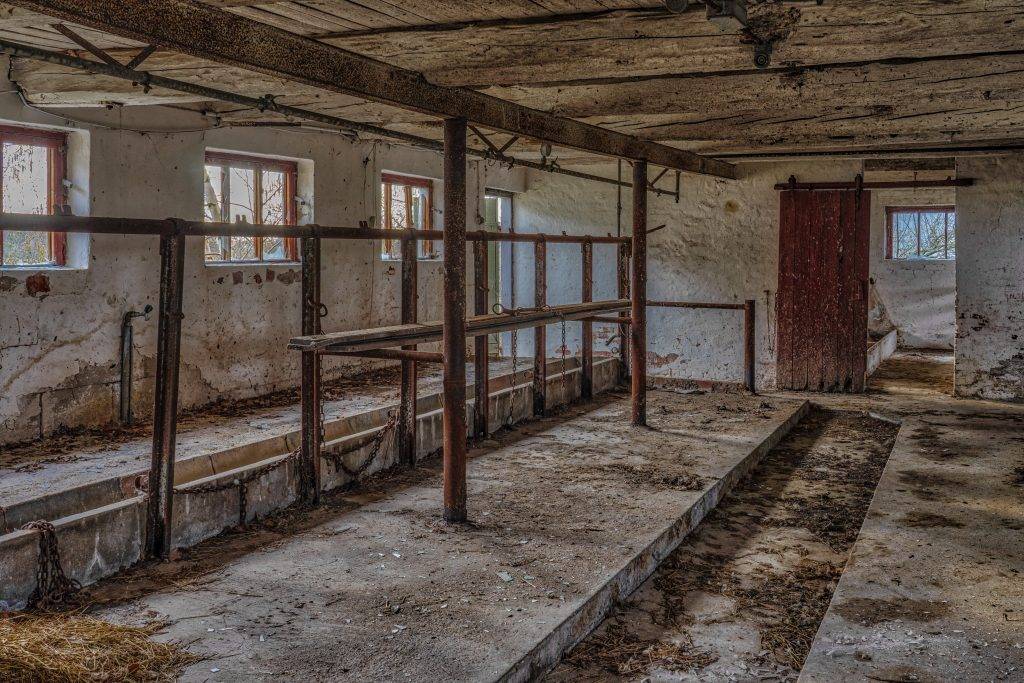
One time, however, I stopped in my tracks. A tricycle - the kind that old people use - was parked in the front yard. Was someone here after all? But no, at closer inspection I could see that there was no air in the tires. It had been sitting there since whoever lived in the house left for the last time.
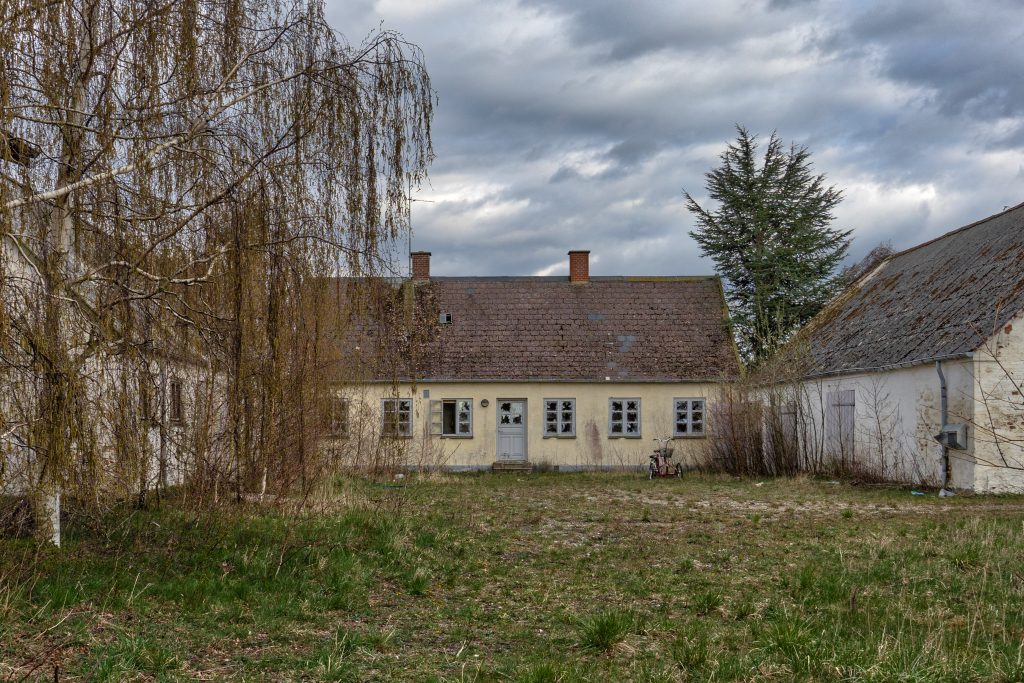
Maybe it was the tricycle, or maybe it was entering the below little backyard that suddenly made me envision life as it may have played out when it still existed here, and what led to its demise. Children running around, eventually growing older, moving away, uninterested in carrying on this farm that may have been in the family for generations. The old farmer and his wife, working the fields and livestock, until one day one of them dropped and could no longer work, leaving the other one lost and with no choice but to move into a retirement home for whatever time was left.
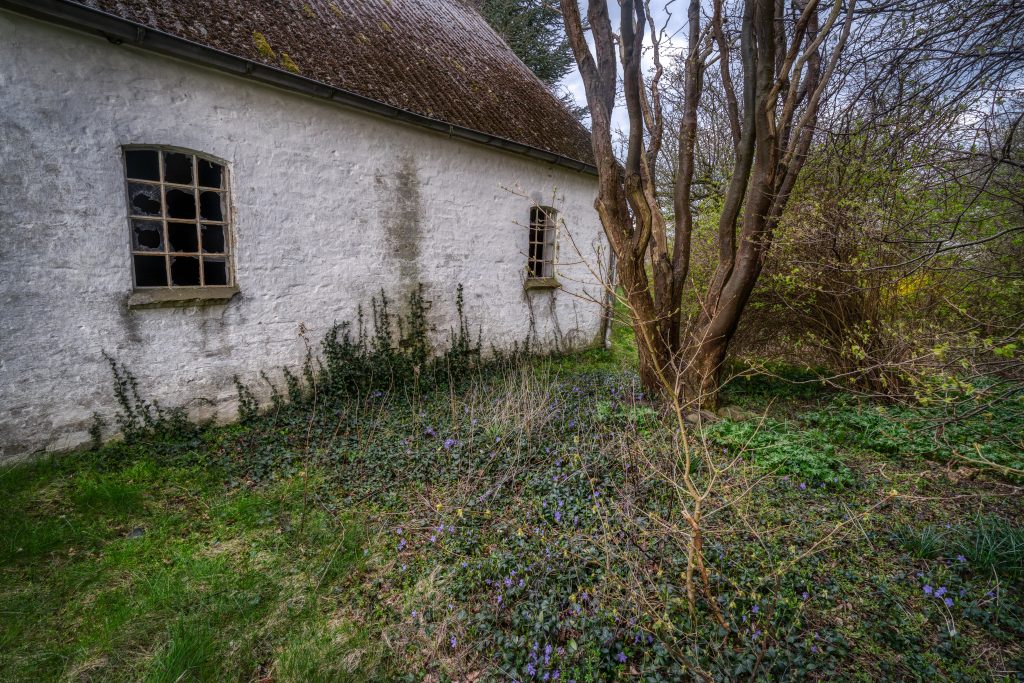
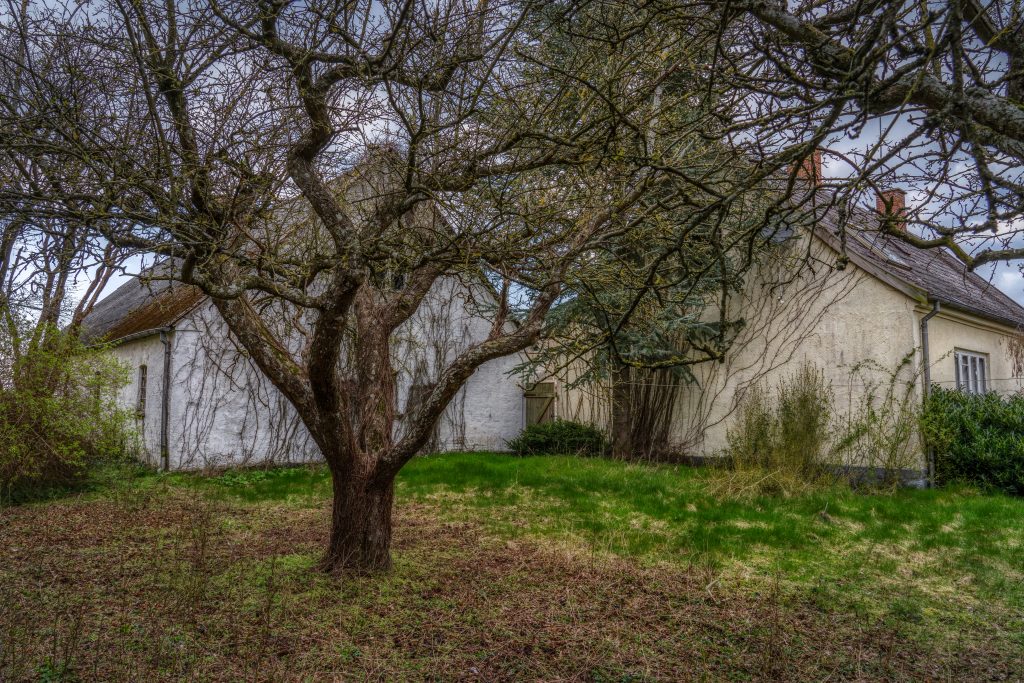
The sun was starting to set, and it was time for me to leave my new discovery behind. As I walked home, the passage of time felt more present than ever before. In less than a week I turn 50 years old. If the speed with which the last 20 years have gone by is any indication - and I fear that it is - the time when whatever traces I'm leaving behind start to fade is in sight. It may not be in shape of a farm, but it will probably be in the shape of what I have created on websites such as this one. And all these images, and thousands more, that no one has ever seen and no one ever will.
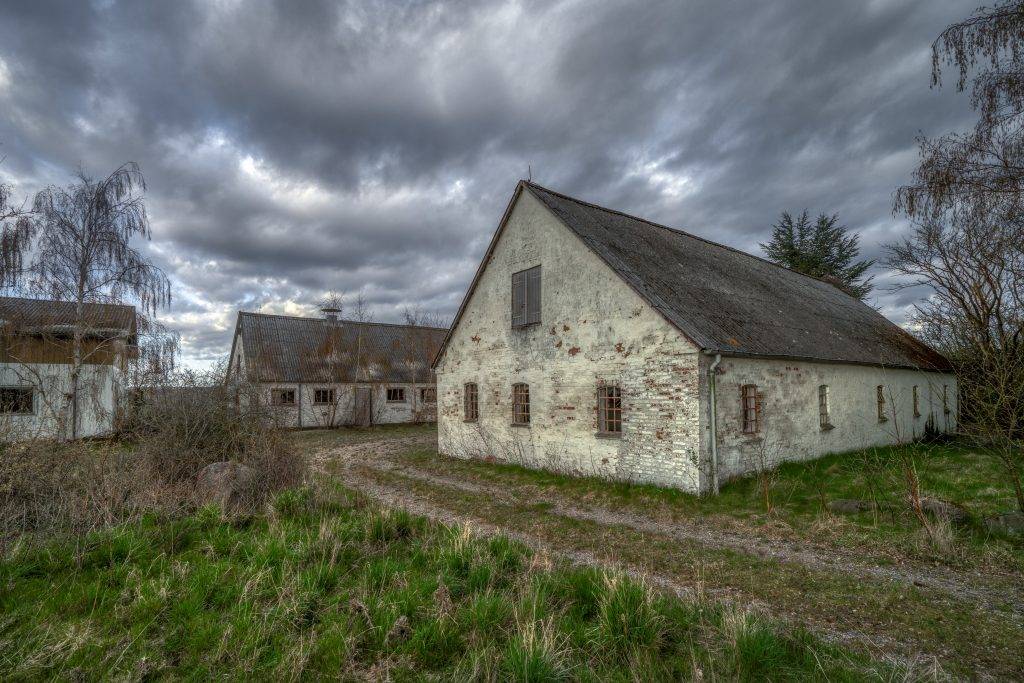
But that's okay. When I got home and told my wife what I had experienced, she said something to the effect of, "Before our house was built, this area was someone else's untouched ground, and they were probably pretty unhappy that new houses were being built."
Her words stuck in my mind. The world is constantly changing. Generations follow generations, and the current generations have no say about the future. We have to accept that the world is only on loan to us. And we just have to make the best of it while we can.
The old farm house will probably be torn down one of these days. The new neighborhood will rise from the ground. I will find new places to shoot my images that few people will ever see. And one day when I'm gone, a server will be turned off and the images, too, will be gone forever.
But somewhere in the world, another middle-aged, overweight amateur photographer will leave his house and go out to shoot his pictures.
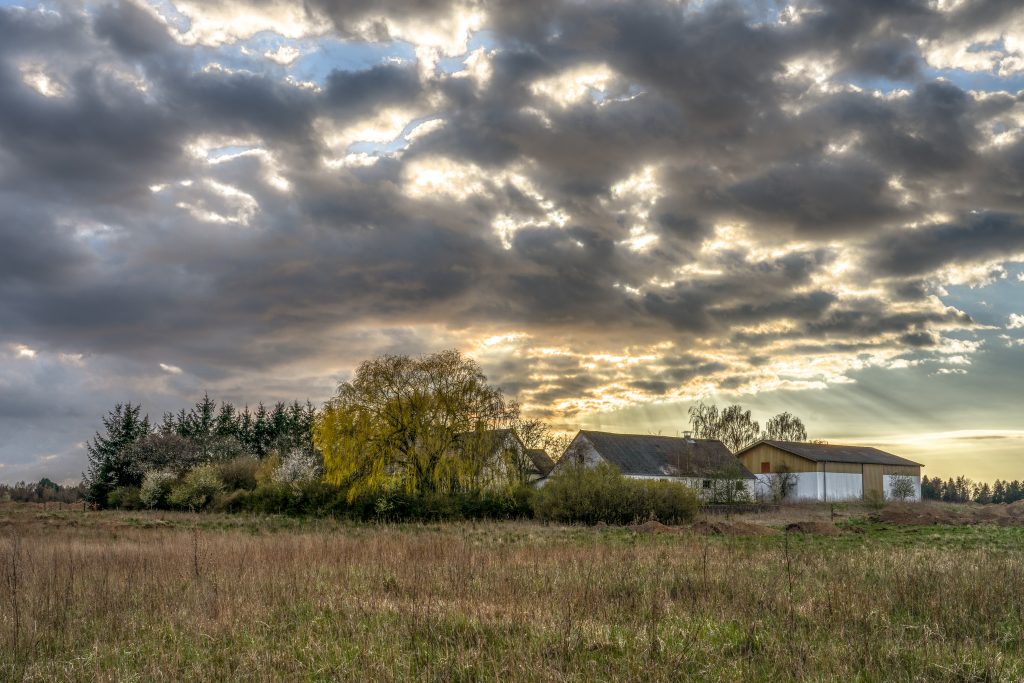
The statement in this post's headline is one that I hear quite often when I show my pictures to people, whether it's family or friends.
Usually, I quickly switch to something else on my phone or computer, or whatever I was using to present my pictures on, and change the subject. Because I know what the next part of their sentence is going to be, if there is one: "but it doesn't look like the real forest/street/beach/sky".
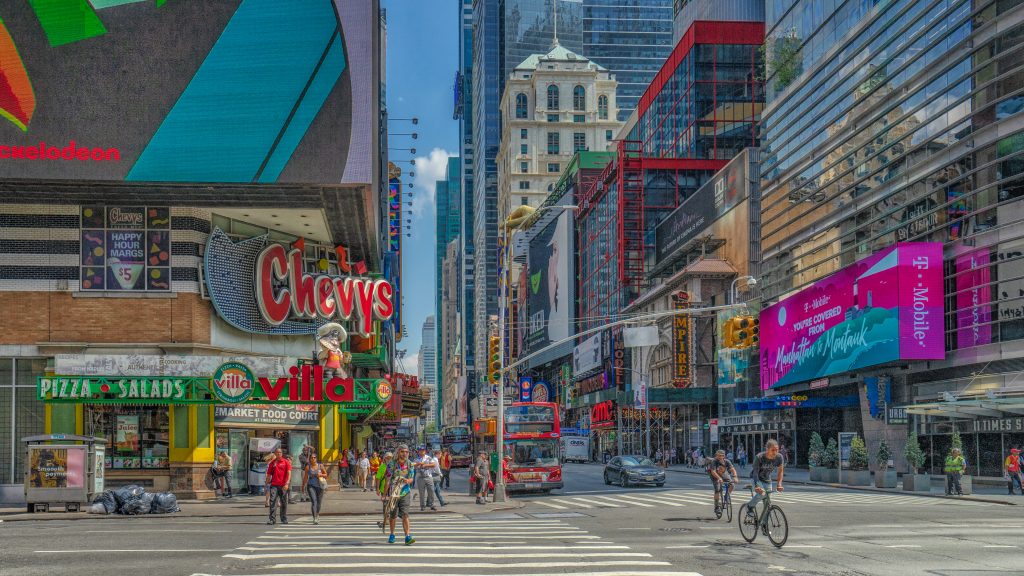
It's never a good thing for an artist to have to explain their art to the viewer. If they don't get it, they don't get it. Not everybody has the same taste. You can't please everyone. Yada yada, yada.... But I can't help feeling that they are missing the point. My objective when creating an image is not for it to exactly resemble what I saw with my eyes, it is for it to resemble what I felt in my heart and soul... and to have the viewer feel that too. If you are not open to letting yourself be emotionally affected, but only look at whether or not it matches what you perceive as "reality", it's your loss.
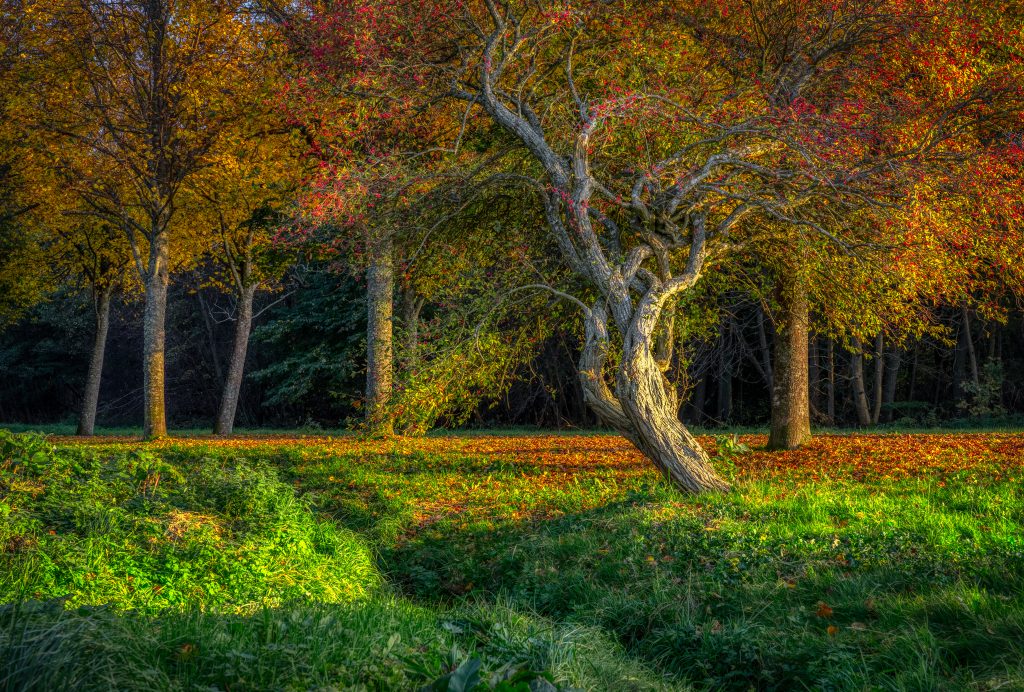
The thing is, if I look at a picture that exactly resembles what I saw with my eyes, it will not affect me in the same way it did when I was in the situation. Why? Because it's a picture! It's not reality. Reality has so much going for it that it becomes an uneven match against an image on a screen or on a wall. Reality has size, it has three dimensions, it has movement, it has sounds and smells, it has the viewer being in the middle of it.
So, in order to compensate for those deficiencies, an image must have something else that reality didn't have, and that's where in some cases additional colors can be a tool. It could also be to add some romantic blur, or make the clouds a little more dramatic than they really were. For instance, if, in the situation, the "scene" felt dramatic, but the image doesn't show it due to its single-dimensional and single-sense qualities, there is nothing wrong with emphasizing the things in the image that at least point in the right direction, such as making clouds grayer and more defined than perhaps they actually were.
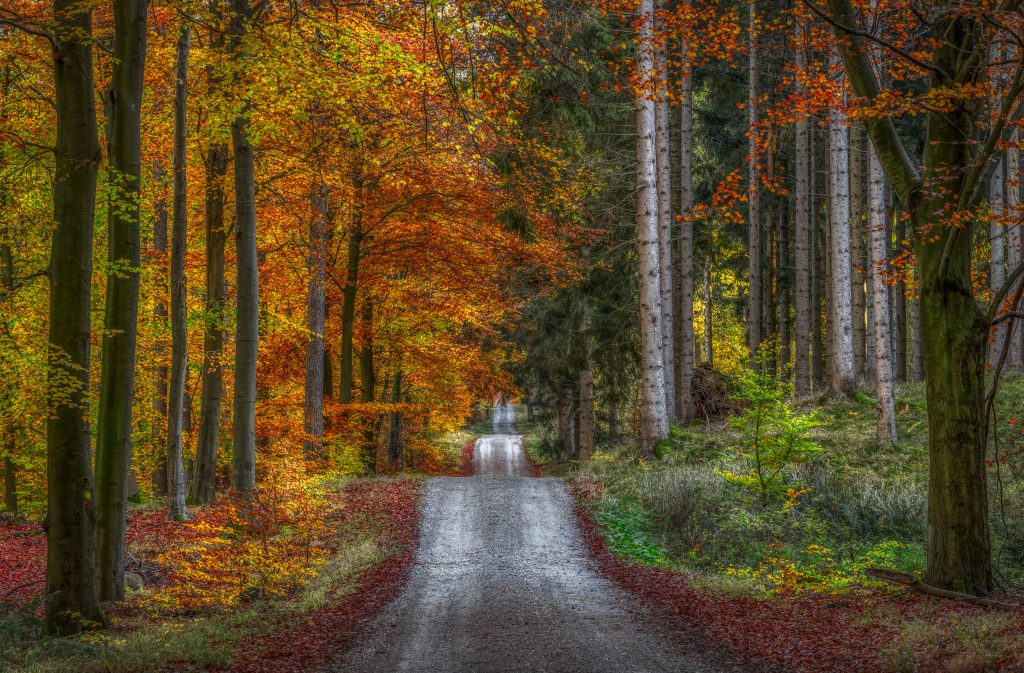
Another point I would like to make is that I actually want to question the so-called reality that many people seem to subscribe to. It seems to me that some people think that an unedited photo, per definition, is closer to reality than one that has been edited. The truth is that one is the camera's interpretation of reality and the other is a human being's interpretation of reality. Do you really think that the camera's interpretation is always more accurate than the human being's who took the picture? Maybe neither one can be completely accurate, but in that case, I will usually find the human being's interpretation more interesting. Of course, a human being can completely ruin a picture with too heavy-handed editing, and I'm sure I have been guilty of that too in the past. Some would say I still am, but I choose to believe that, as I have become more and more conscious of what I want to achieve, it doesn't happen quite as often.
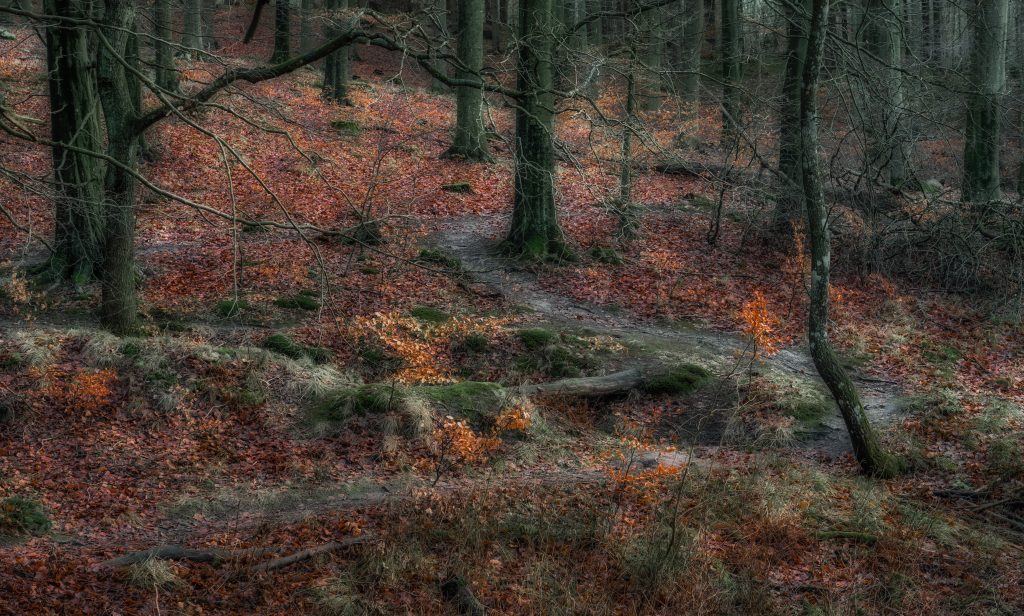
When all is said and done, I can't rule out that I'm just not very good at conveying what I want to convey with my images and that the "but-it-doesn't-look-like-reality"-segment of the population is right. Or that, realistic or not, the same people would totally get the image if I was just better at editing. But I also have received enough awards and love on places like Viewbug and GuruShots that I feel fairly confident that I'm not completely hopeless at what I'm doing.
In the end, I do with my images what I feel is right and what brings up the same feelings in me that I had in the situation. Whether it brings up any - or the right - feelings in anyone else is another matter. All I can do is try and hope that what I do strikes a chord with you.
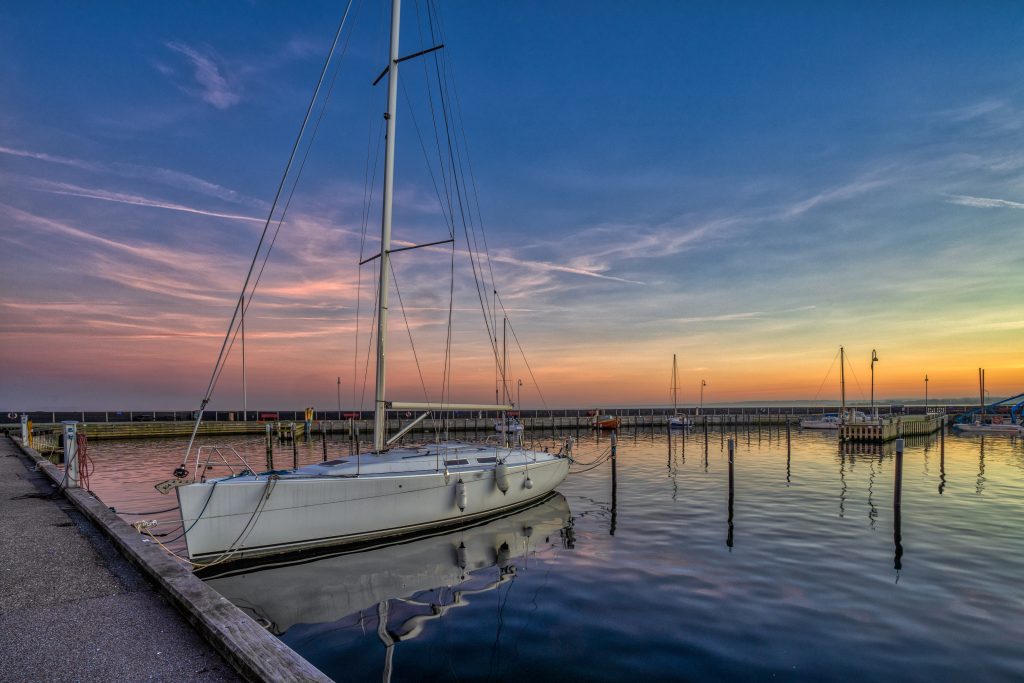
I read somewhere that if you want readers for your photography blog, you need to offer tutorials and practical advice. I haven't done much of that, because as an amateur who struggles with even the most basic skills, I really haven't felt qualified to tell anyone anything about how to go about their photography.
Besides, I have an ambiguous feeling about photography tutorials. Photography is basically "seeing" and then, with your camera, managing to distill what you see into an image. I can't help you with the first part. You have to do your own seeing. If you go into a forest and don't see anything, then forest photography is just not for you. I'm not sure I can help you with the second part either - the distilling. I'm not very conscious about it myself. It just happens, not least in the post-processing phase where I try to emphasize what it was I saw in the situation.
I won't go into the post-processing here, as it would make this post too long. This is all about what you should and should not do while you are out there in the woods with your camera.
But despite my reservations, as the self-proclaimed Denmark's Number One Forest Photographer, it is only fair that I dip my toe into this new territory and offer my completely professionally unfounded, homespun, possibly dangerous, dos and don'ts of forest photography, in no particular order. Yay!
1. Get off the path. You find the best compositions by leaving the path and finding the untouched spots where no one has gone before, let alone with a camera. Sure, your feet will get wet, you will be stung by nettles, but it's worth it.
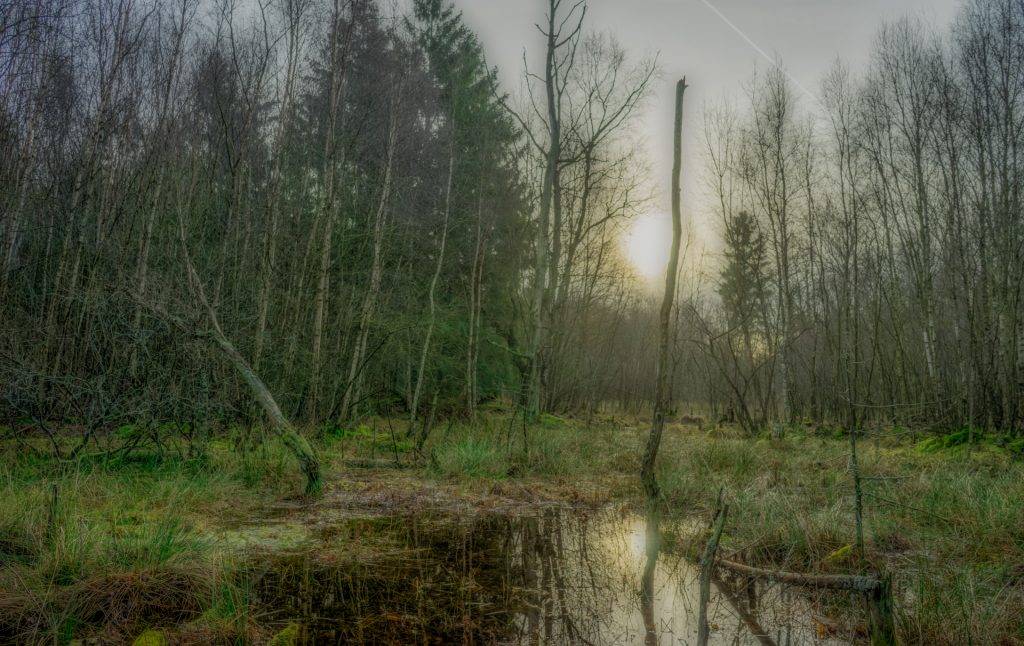
2. If you get off the path, don't wear shorts. Wet feet and nettle stings may be worth it, but being infected by a wood tick could very well not be worth it. And yes, I've tried it and I was fine, but I may just have been lucky.
Don't get eaten by a bear either, if you live in a country with bears.
3. Look for the patterns in your surroundings and then capture what breaks the pattern. Like in the below image, the fallen tree is what makes this image interesting, but it's only interesting because all the other trees constitute a whole.
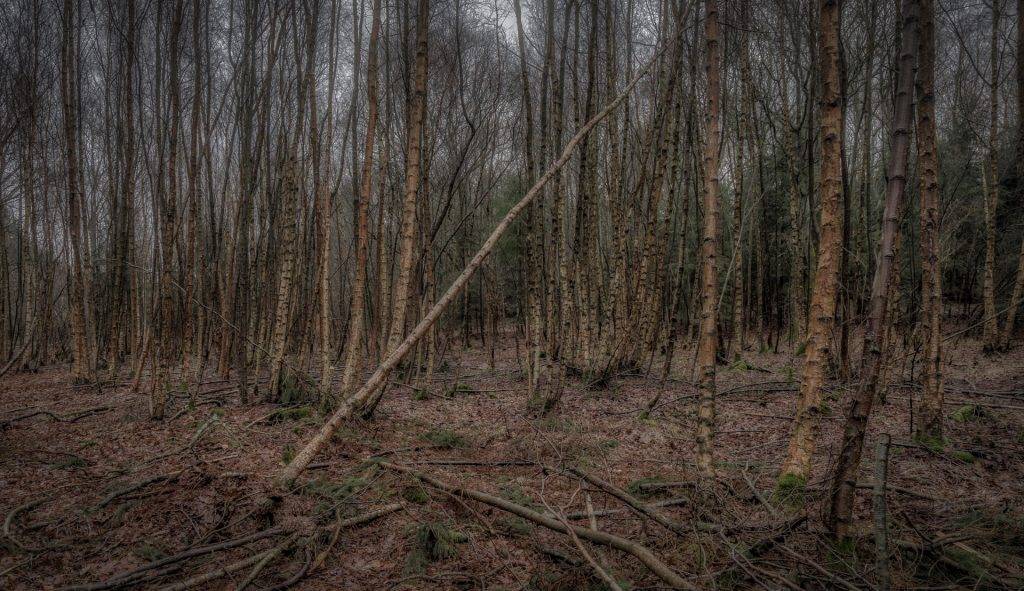
4. Days with clear blue sky are perfect for forest photography. Why? Because that means you will have lots of sunbeams coming through hitting the leaves and trees in gorgeous ways. Besides, clear blue sky doesn't work too well for outside-the-forest landscape photography, so spend those clear days in the woods instead.
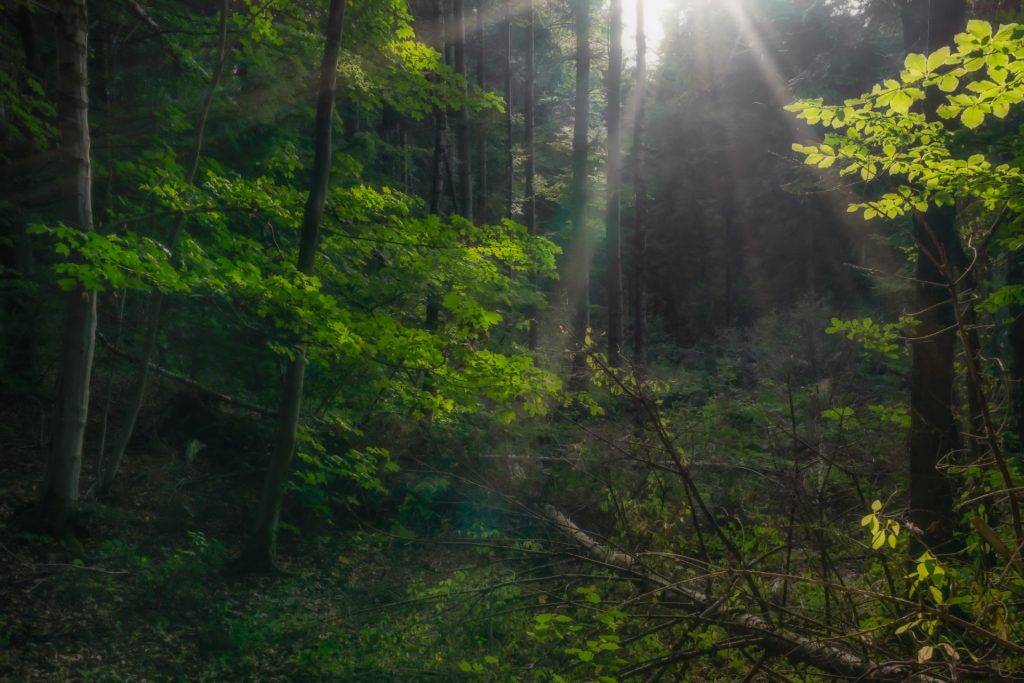
5. Compositions are everywhere! As you walk through the forest, look to your side, look behind you, and look up. The compositions are all around you if you pay attention. I call this one, "The Man in the Tree".
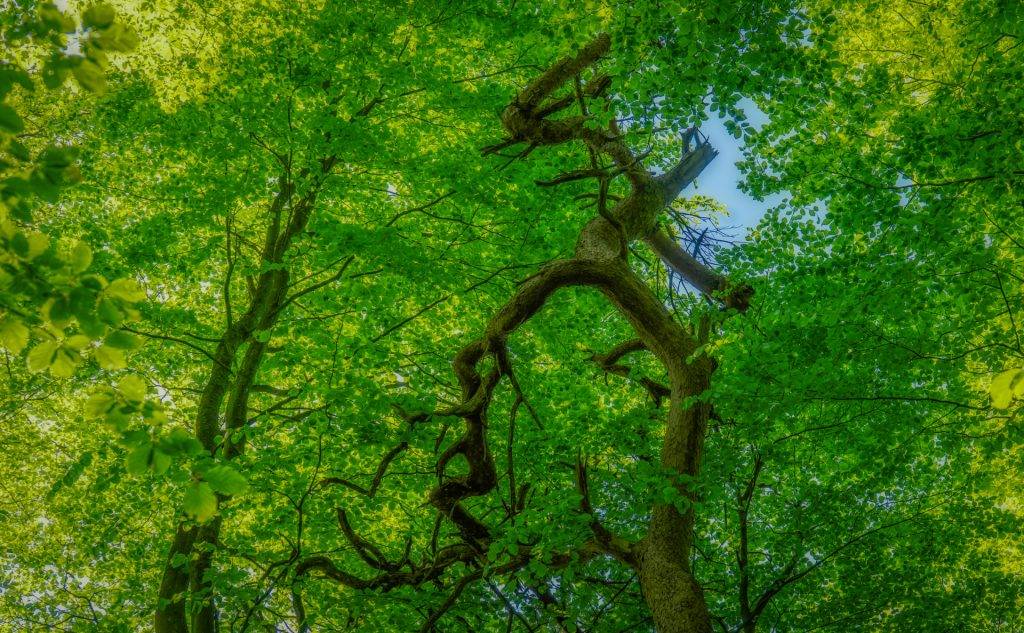
6. There is no bad season for forest photography. They say fall is the best season with the leaves turning orange, yellow, and sometimes even purple, and sure, that may be true, but even in the most dreary, yucky, muddy, gray part of winter, forests have lots to offer. Make a virtue of necessity and capture the dreariness, the yuckiness, the grayness. And notice how completely different the exact same location looks during different seasons.
[ics-comparison-slider id=1]
7. Long exposure photography is good for many things, but be careful when using it in the forest. The least bit of wind in the leaves will make your images blurry at slower shutter speeds. Of course, I can't give you a minimum shutter speed to go by. It depends on how strong the wind is and how much movement in the leaves. Just be aware of it.
8. Use a tripod. Even though I just stated that long-exposures in the forest can be a problem, you are often caught in the dilemma between using a low ISO to avoid noise in the shady parts and keeping exposure times down enough to avoid blur in the leaves. Forests are by definition relatively dark places, and as a result, don't expect to be able to use really fast shutter speeds either. Handheld photography may be possible on bright days in the forest, but usually the result is noticeably better when you use a tripod. Besides, because forests form a pretty good windshield, there will be days that are completely still where exposures of several seconds will come out just fine.
9. As you leave the path, try to make your way downhill. Eventually you will come across water in the shape of little creeks or tiny forest lakes. Water = reflections, reflections = good.
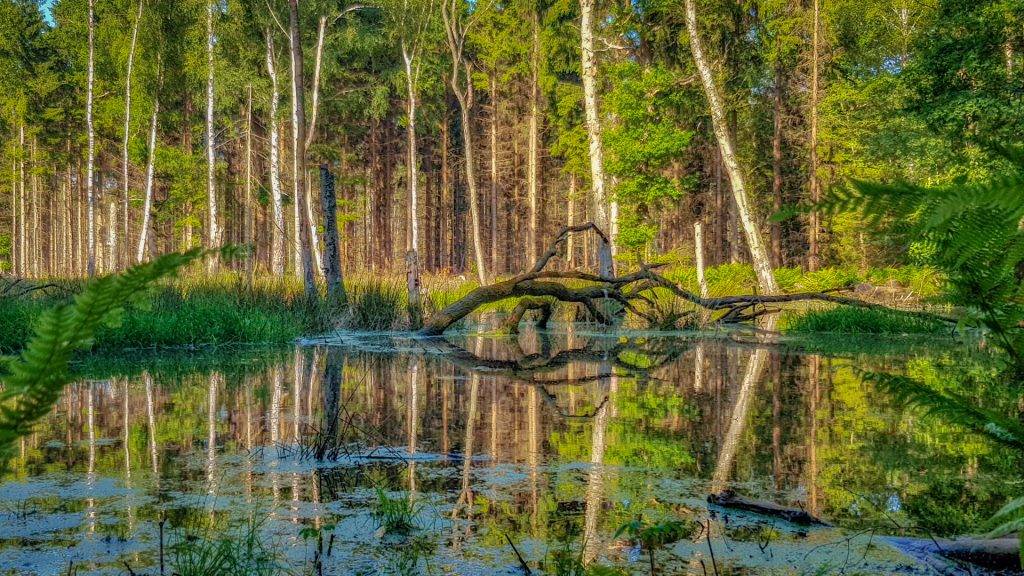
10. A tree is not just a tree. The forest consists of tons of trees, and sure, most of them are rather indistinct and non-photogenic. But keep your eyes open and you will see exceptionally beautiful trees that just stand out among all the others. Grab them.
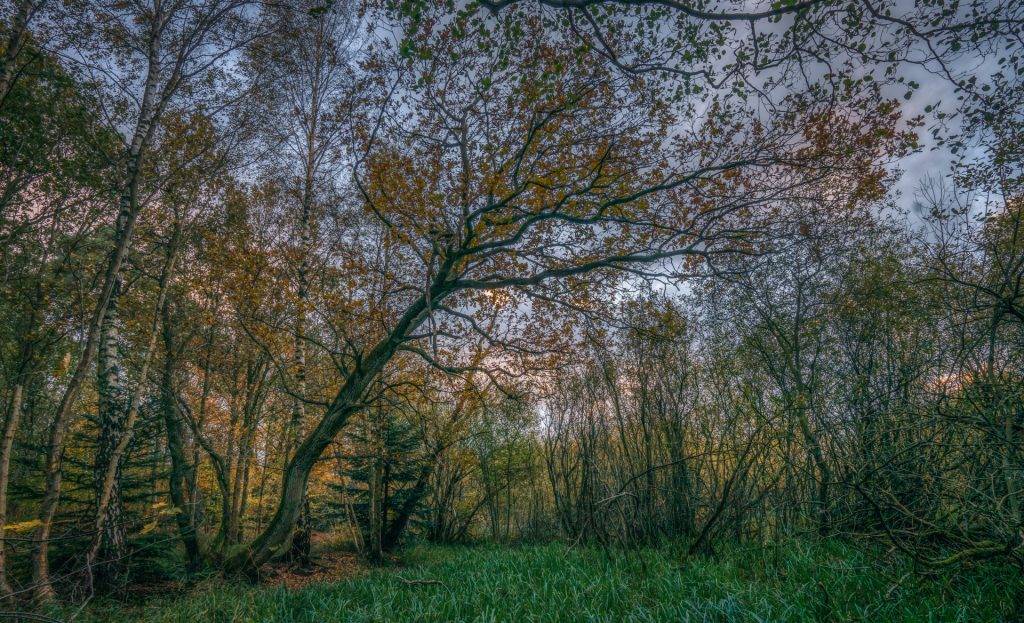
11. Some trees are worth more dead than alive! For some reason gray, leafless and lifeless trees make for great photography subjects. This image is the only one not from Denmark, but from Idaho. I called it "The Ghost".
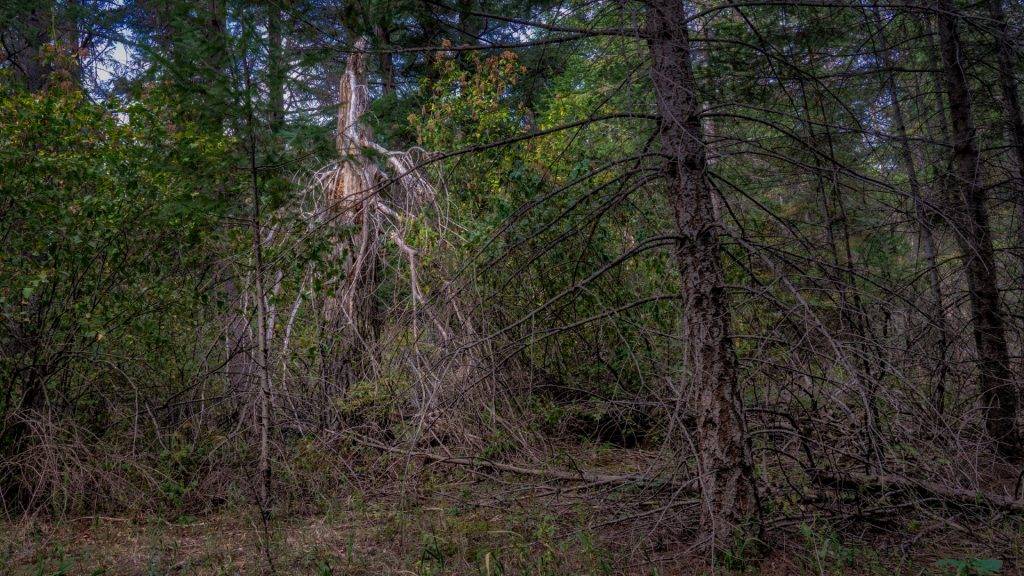
12. You don't have to go deep into a forest to find the best compositions. The edge of the forest, or an edge to a clearing or a lake in the forest, are gold in forest photography. That's where the light is at its best and where you can find interesting contrasts and focus points.
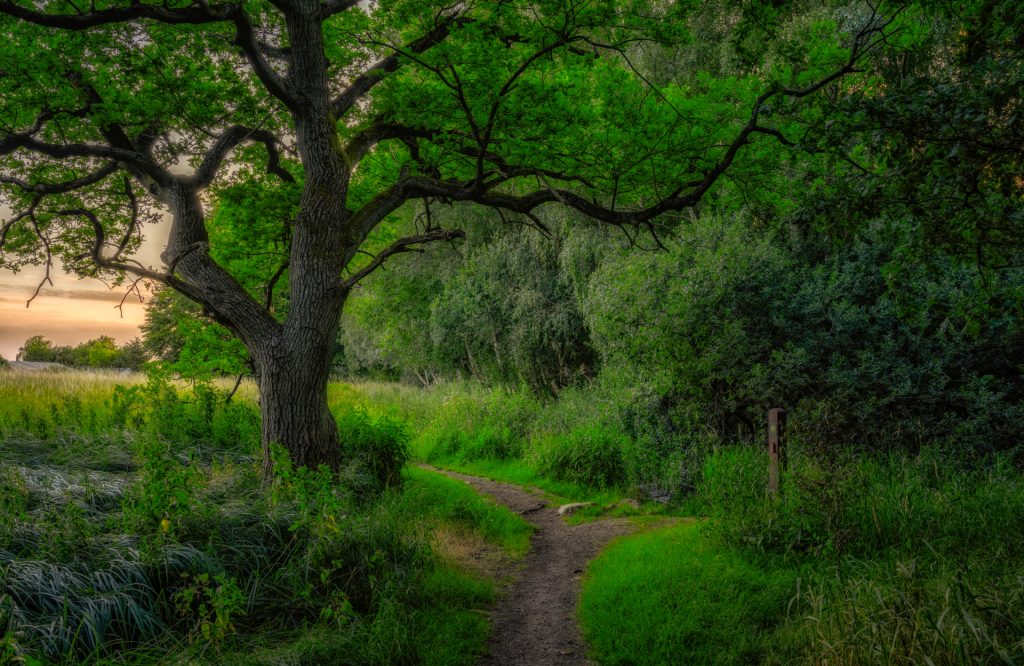
So those were my best tips for forest photography. Since I mostly operate in Danish deciduous forests, I can't guarantee things work quite the same way in other types of forest in other parts of the world. What I'm certain goes for all forests is that they provide an endless array of opportunities for photographers if you keep your eyes open and are not afraid of straying from the beaten path.
Me? I forget my camera. Sure, it was just a quick walk in the local area, so no big deal. Still, when I'd set up my tripod at the nice spot I'd just found, where a low sun was lighting up the landscape in amazing saturated colors, and looked into my bag that contained my lenses but no camera, I felt like the dumbest photographer on the planet. The camera must still be sitting at home on the dining table where I had put it down after checking the SD card and battery...
Well, there was nothing to do other than to fold up my tripod and zip my backpack. And to grab my trusty Samsung Galaxy Note 8 cell phone whose camera is more than adequate for situations like this. I decided to take the opportunity to test the pro-settings of the camera that allow you to shoot in RAW and control the camera manually, much like you would with a DSLR. I've never really bothered doing that since I usually have a much better RAW camera on me.
So here is the scene that lay before me. How pretty is that?! While the sharpness of the image is certainly nowhere near what I can achieve with my Sony A7II, at first glance you really can't tell that this is a cell phone image.

One of the things that you can do with Note 8's RAW camera - or Pro camera as it's called - is to control the basic settings that you know so well from your DSLR camera, such as exposure, aperture, and ISO. That's a huge advantage. Most daylight images - and even images such as these that were taken close to sunset - will have parts or all of the sky blown out if you rely on the phone's automatic settings. In these pictures I was able to optimize the exposure to the sky and then brighten the bottom part of the image in post-processing, just like I do with my regular camera.
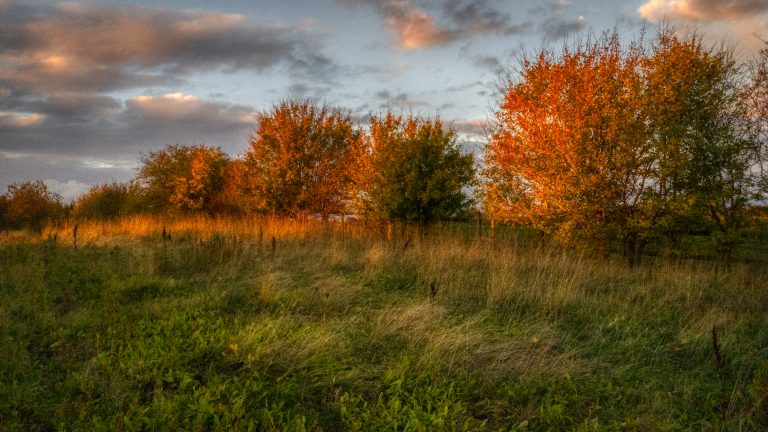
The few times I previously have used the Pro-mode of the phone camera, I have let all the settings be up to the phone. That's not recommendable. Especially in low light surroundings. Then the phone will put the ISO to a ridiculous level that completely drowns your image in noise. For these images I set ISO to 400. I didn't touch the aperture setting. Apparently that means the phone sets it to a whopping f/1.7, which resulted in shutter speed times at no less than 1/1000 seconds.
So while I'm generally very happy with the result, if you compared them with similar images taken with my Sony on a tripod, it would be an uneven fight. Even in post-processing, it seemed like the phone's RAW format wasn't quite as generous as that of my Sony when it came to revealing details in the shadows and letting itself be molded the way I wanted it.
But again, I simply can't complain. The image quality along with the beautiful light that descended on the area on this particular evening, make these photos rank among my favorites of the season.
Below are a few more examples from an afternoon that started with me wanting to hit myself with my own tripod for forgetting my camera, but ended as a pleasant surprise and some really nice images.
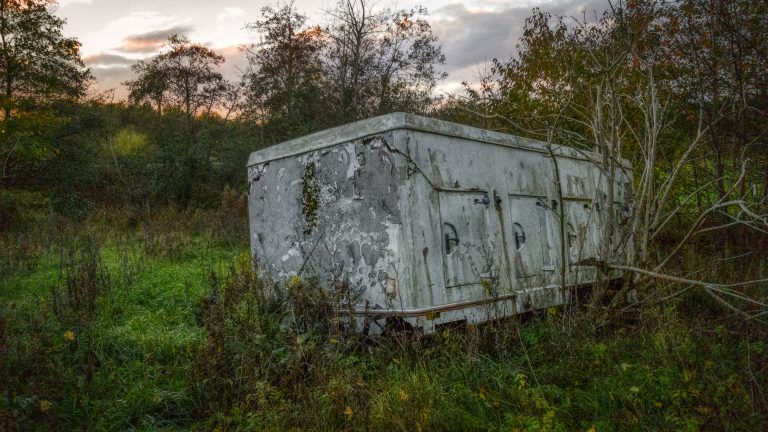
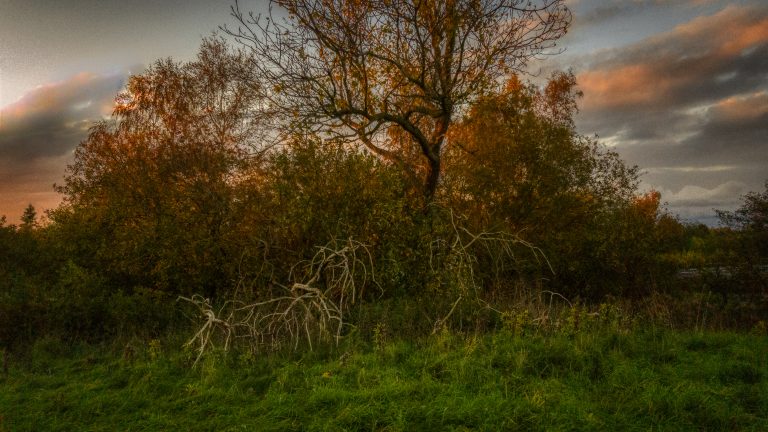
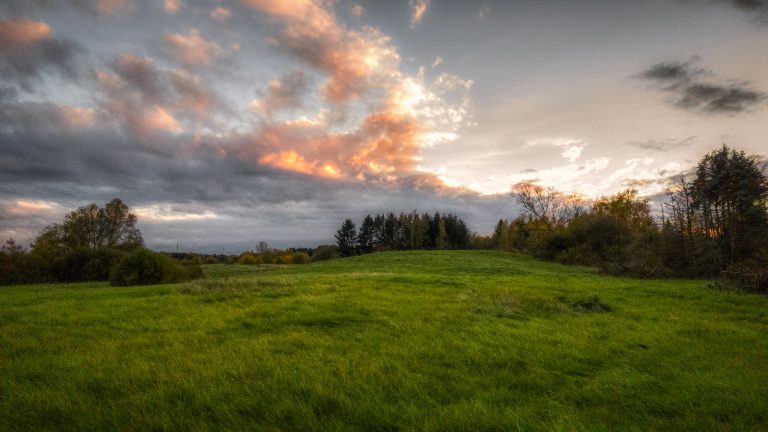

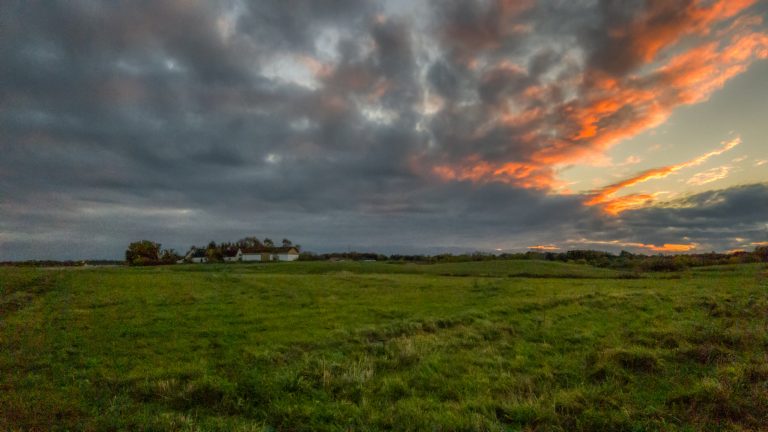
Every time I upgrade my camera equipment or achieve some new insight into photography, I joke to my wife that now I have to go back to every interesting place we've ever been and re-shoot all my photos.
Well, last month I got the chance to go back to a place we have been to several times before, but which I never quite conquered photography-wise: Oslo, Norway. Each time we had been there in the past, we'd taken the Copenhagen-Oslo ferry, which is a 16-hour voyage advertised as a mini-cruise. This time was no exception. I love this form of traveling. You can walk around the ship, eat great food, watch the ocean, chill in your cabin, and just relax, knowing that you are completely off the grid out there in the middle of the ocean. When you arrive in Oslo, you have 6-7 hours to explore the city before going back on the ship for the return voyage.
Now, the purpose of this trip was relaxing, first and foremost - not taking pictures. But of course, there's nothing wrong with bringing your camera just in case some good opportunities should arise. And they did... Of course they did. In fact, we hadn't even left the harbor in Copenhagen before I started snapping away from the stern of the ship and captured some of the surrounding architecture.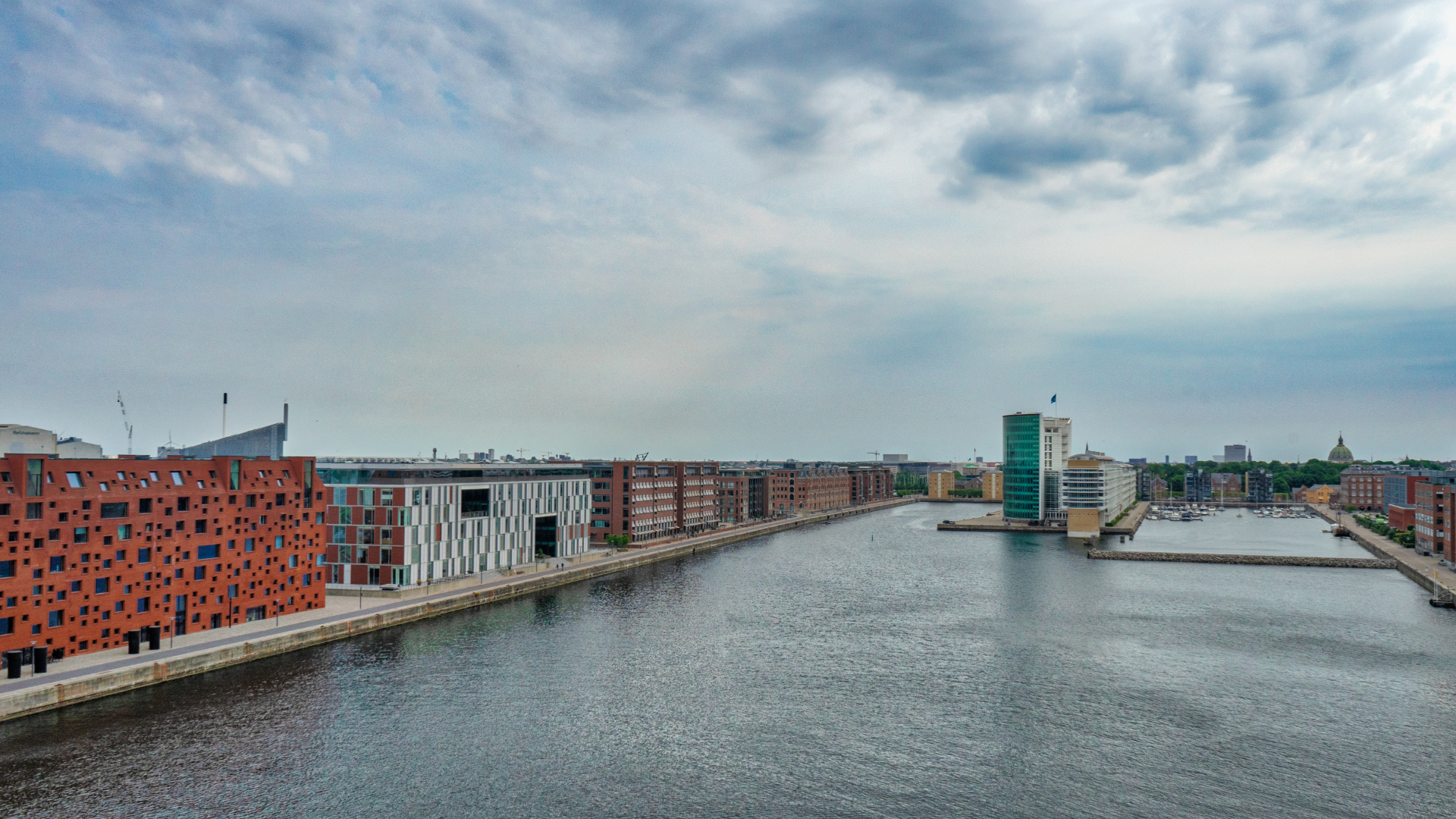 As the ship made its way out of Copenhagen, we passed a few points of interest. First, an old, wooden ship returns to a more modern world.
As the ship made its way out of Copenhagen, we passed a few points of interest. First, an old, wooden ship returns to a more modern world.
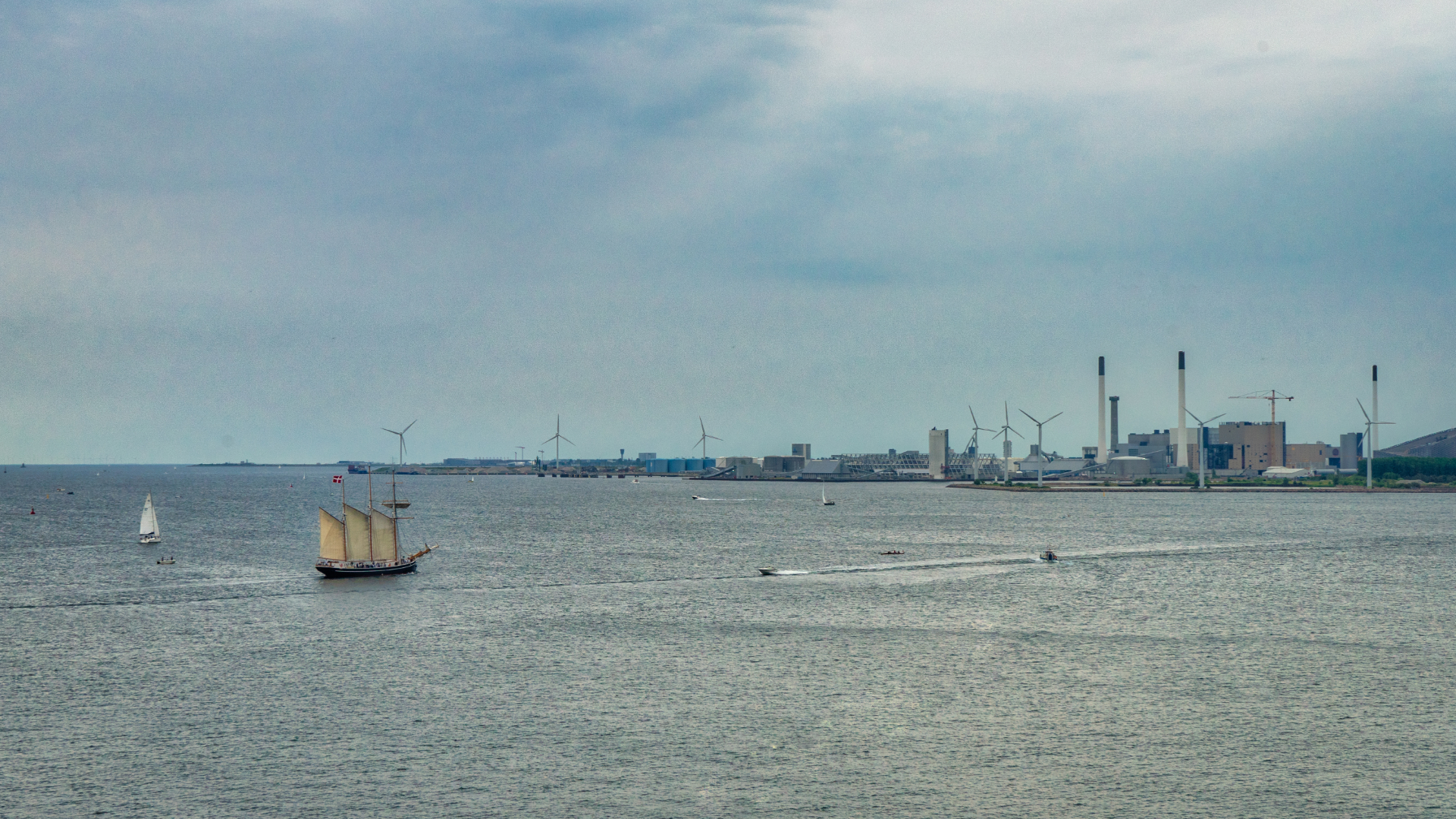 Then, with no time to change to a longer lens, the below image of a long string of wind turbines in the distance would have to do. But I kind of like the minimalism of it and the clouds. Sometimes you have to make the best of what you've got.
Then, with no time to change to a longer lens, the below image of a long string of wind turbines in the distance would have to do. But I kind of like the minimalism of it and the clouds. Sometimes you have to make the best of what you've got.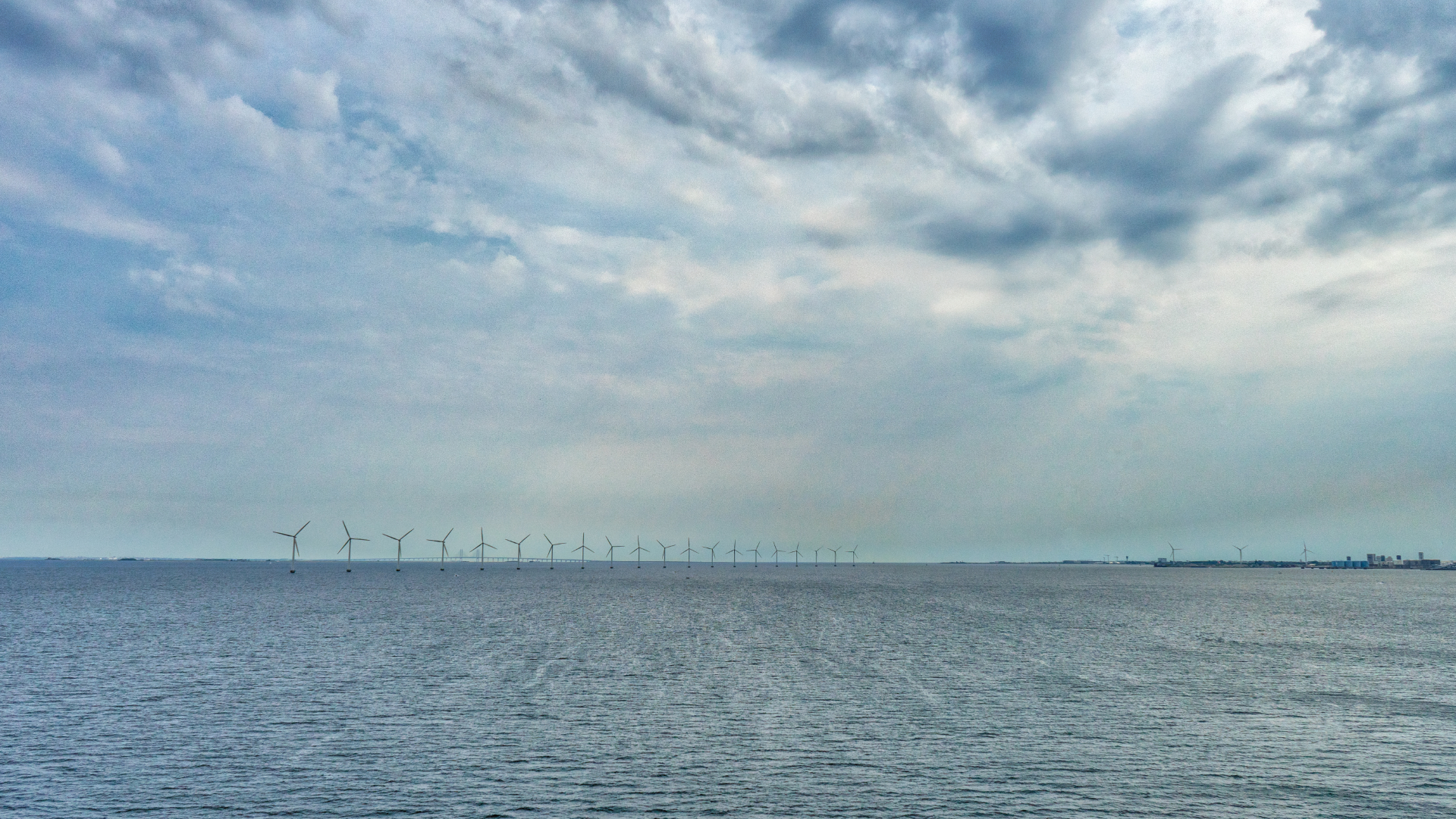 Several hours later, after emptying the famous restaurant Seven Seas all-you-can-eat buffet, we went back on deck to get some air and look around.
Several hours later, after emptying the famous restaurant Seven Seas all-you-can-eat buffet, we went back on deck to get some air and look around.
With gray clouds having covered the sky most of the day, I didn't have much hope for a sunset, but I got something that seemed at least as spectacular, and something you might only experience at sea: a narrow orange strip of sunlight lined the horizon and served as the backdrop for a couple of far-off freighter vessels. Above the orange light, dramatic storm clouds loomed low. It was an incredible sight. Again, I might have benefited from a longer lens than my 24-70 mm, but the sense of scale may have suffered as a result. Showing how small the ship is in the hands of nature is one of the picture's strengths, in my own opinion.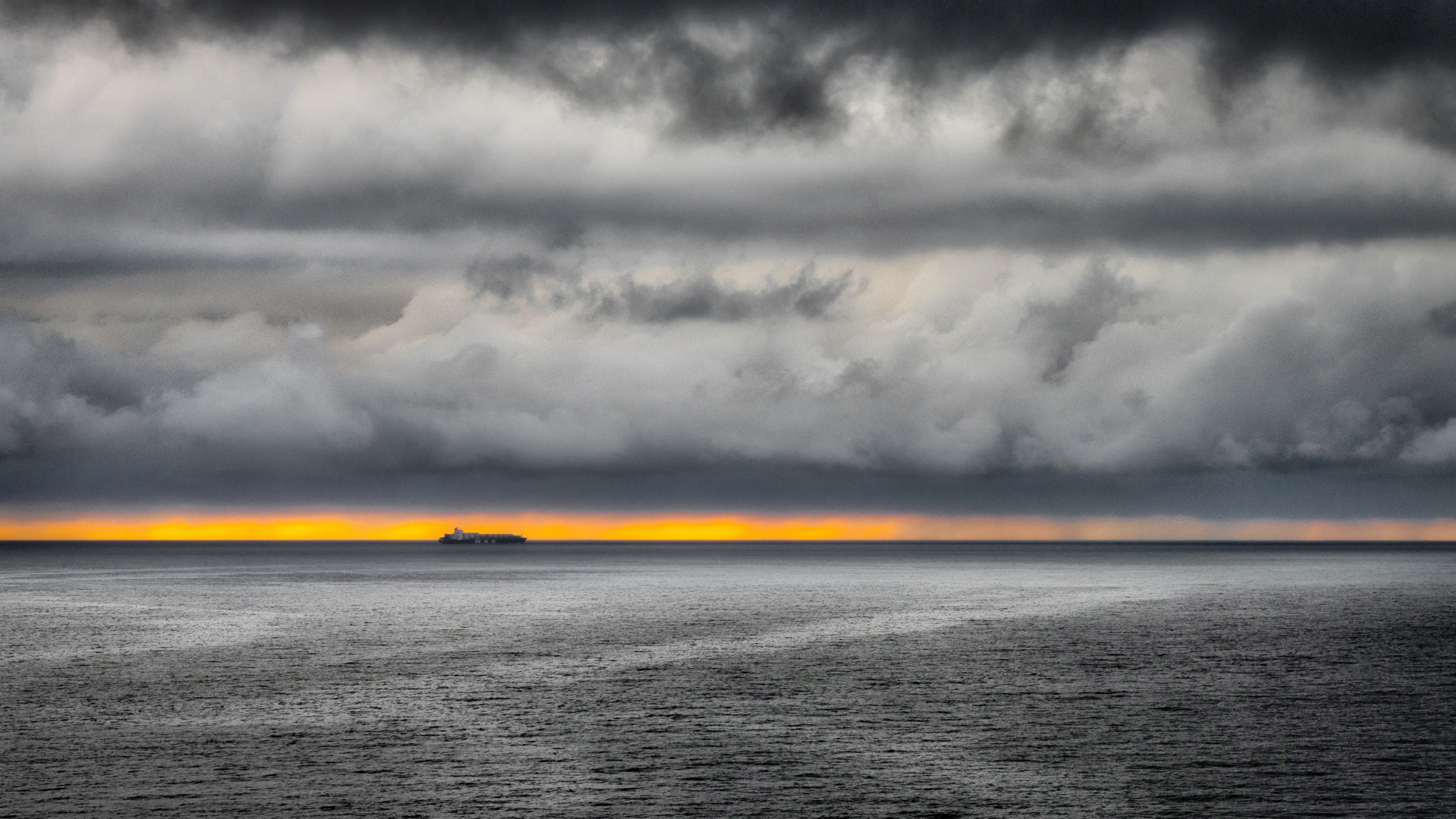 The next morning it was time for one of the scenes that I had been looking forward to revisiting: the approach to Oslo through the narrow parts of Oslo Fjord. Here you pass by small idyllic islands and hills dotted with colorful Norwegian villages.
The next morning it was time for one of the scenes that I had been looking forward to revisiting: the approach to Oslo through the narrow parts of Oslo Fjord. Here you pass by small idyllic islands and hills dotted with colorful Norwegian villages.
Unfortunately, while the clouds had scattered somewhat, the sun was already so high in the sky, the light had turned harsh and difficult. I was still using my 24-70 mm kit lens since my much sharper 16-24 mm requires more of a foreground than you will find shooting these landscapes from a ship. I took numerous pictures, of course, but very few of them turned out well. Here's an exception, although it's still not quite what I had hoped for.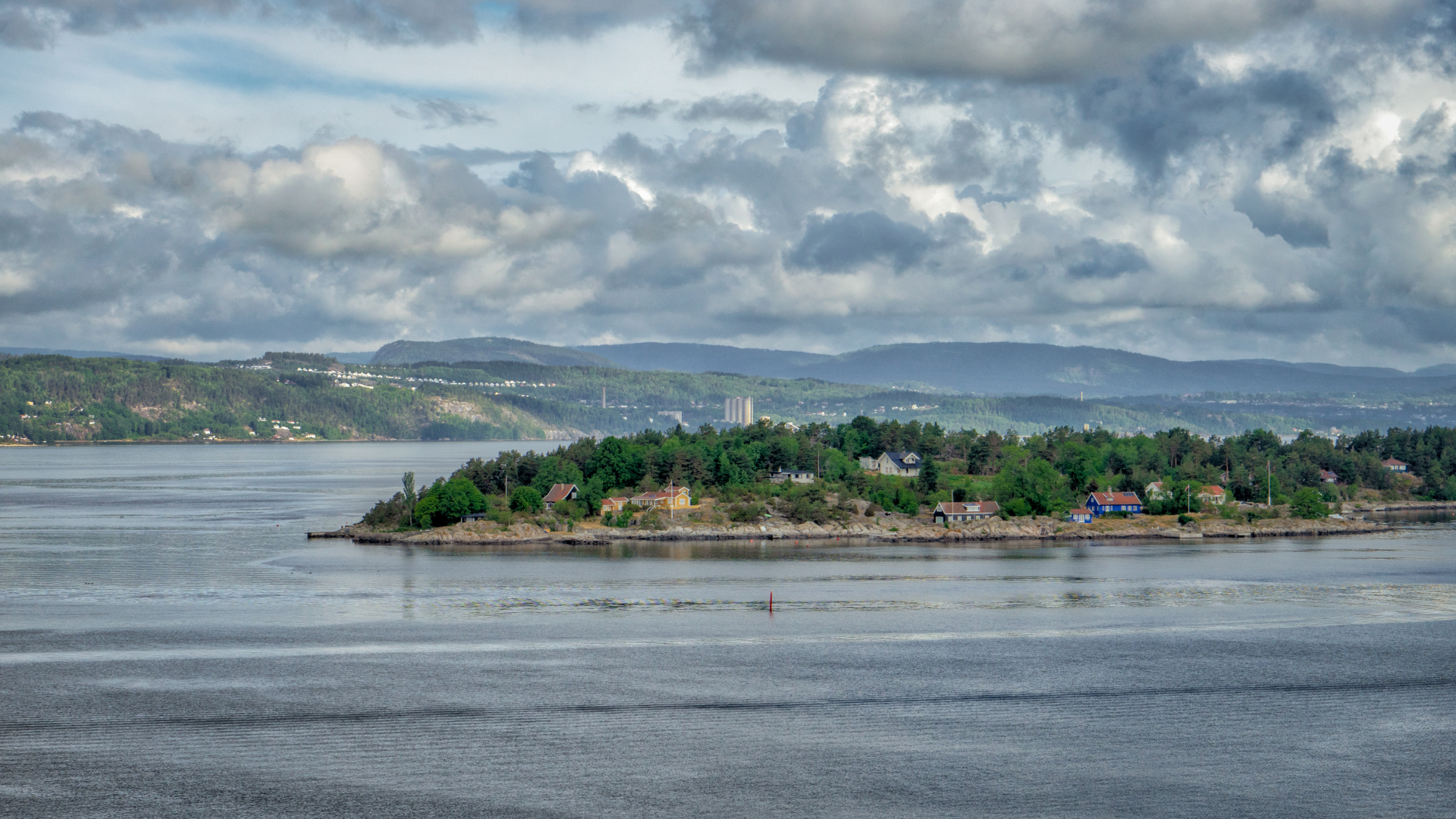 After arriving in Oslo we caught a hop-on-hop-off bus in order to get off at the Vigeland Sculpture Park a little ways out of downtown Oslo. Despite having been in the city several times, we'd always skipped it even though every guide book describes it as a must-see attraction in Oslo.
After arriving in Oslo we caught a hop-on-hop-off bus in order to get off at the Vigeland Sculpture Park a little ways out of downtown Oslo. Despite having been in the city several times, we'd always skipped it even though every guide book describes it as a must-see attraction in Oslo.
Well, it turned out the guide books were right. The Vigeland Sculpture Park is definitely worth seeing, even for someone like us who don't get terribly excited when we hear the word "sculpture". First of all, it's huge! You can easily spend half a day there. Secondly, the sculptures are... different. You won't see any statues of kings and generals on horses. Whoever this Vigeland was who created all the sculptures, he had a pretty unusual mind. Some would say pretty sick.
Anyway, from a photography standpoint there were lots of tempting motifs. Plenty of sculptures would have made for interesting subjects. However, to me, just taking a picture of someone else's piece of art is not very appealing. As a photographer you need to add to the experience and create something new by including the surroundings and the atmosphere at that particular moment. And that's exactly what I think I did with my personal favorite image from the park below. It's also one of my rare vertical images.
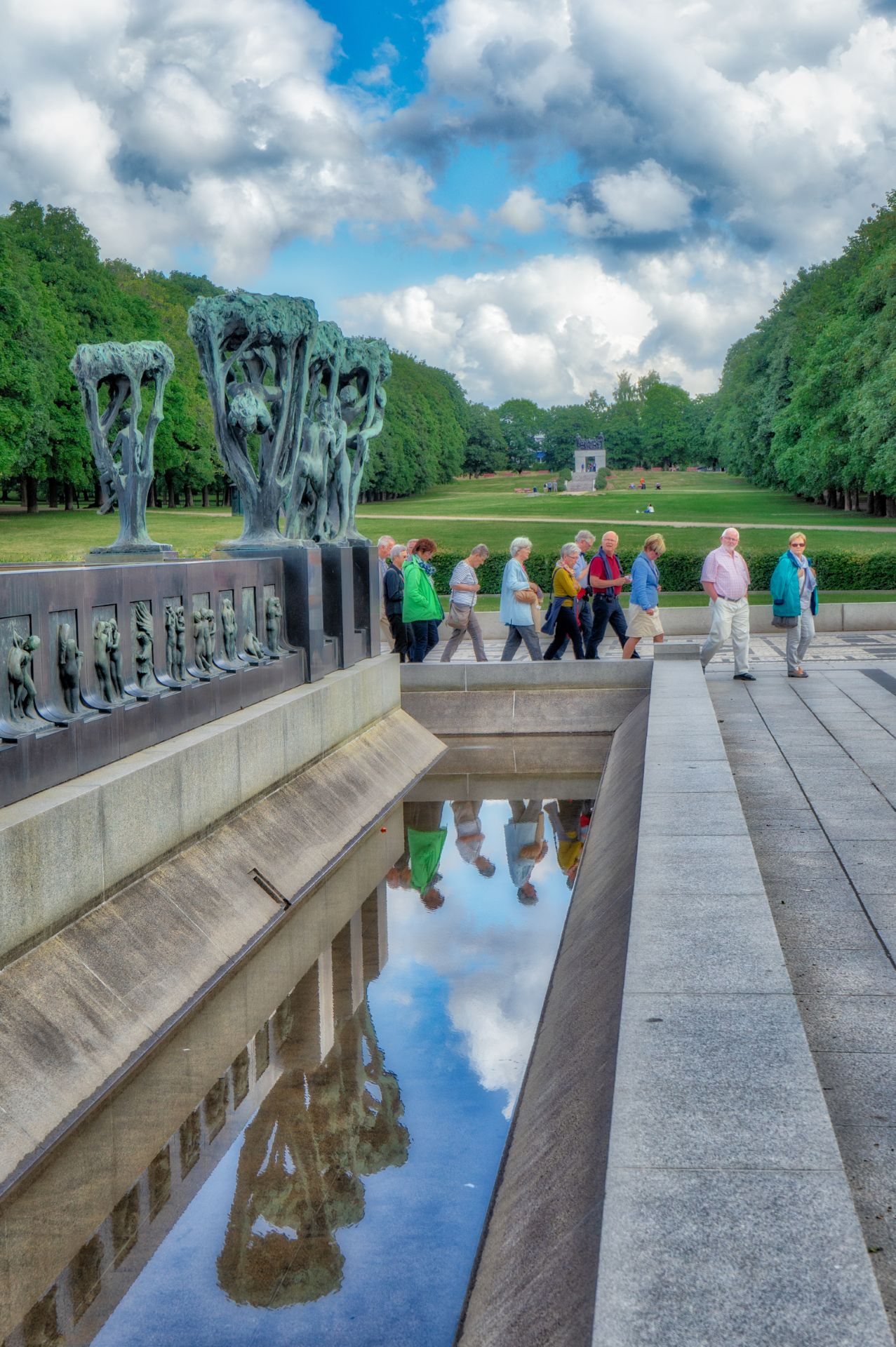 The next image is of a waterfall/fountain in the middle of the park. I didn't bring my tripod - only a monopod - so I couldn't make a true long exposure, which seems to be the agreed-on standard for waterfall photography. Personally, I think a faster shutter speed can be quite impressive too.
The next image is of a waterfall/fountain in the middle of the park. I didn't bring my tripod - only a monopod - so I couldn't make a true long exposure, which seems to be the agreed-on standard for waterfall photography. Personally, I think a faster shutter speed can be quite impressive too.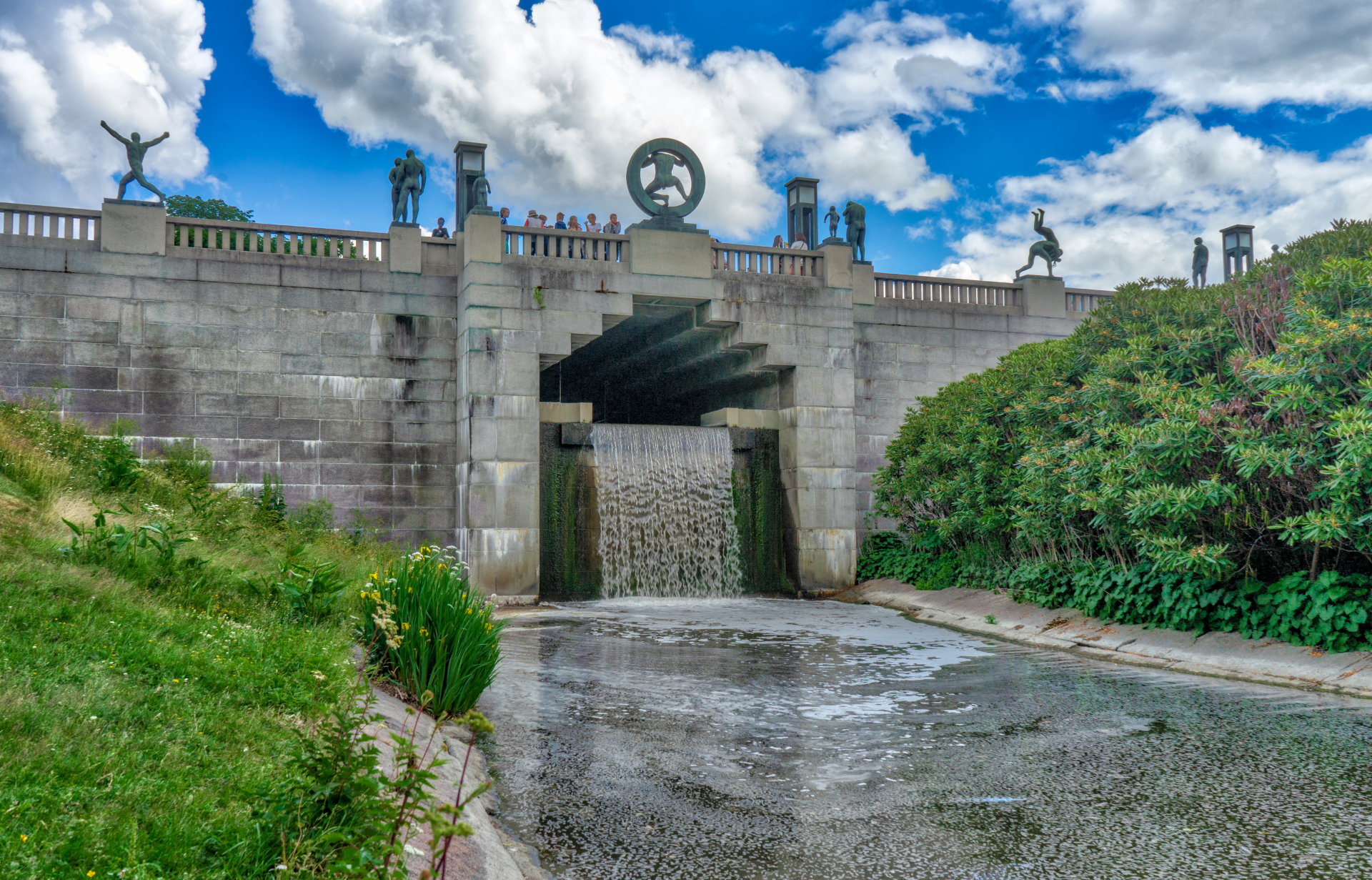 The last image from the park shows no sculptures (except for the tiny ones separating the benches), but there is plenty of beautiful landscaping going on too. This scene was just too beautiful and harmonic to ignore.
The last image from the park shows no sculptures (except for the tiny ones separating the benches), but there is plenty of beautiful landscaping going on too. This scene was just too beautiful and harmonic to ignore.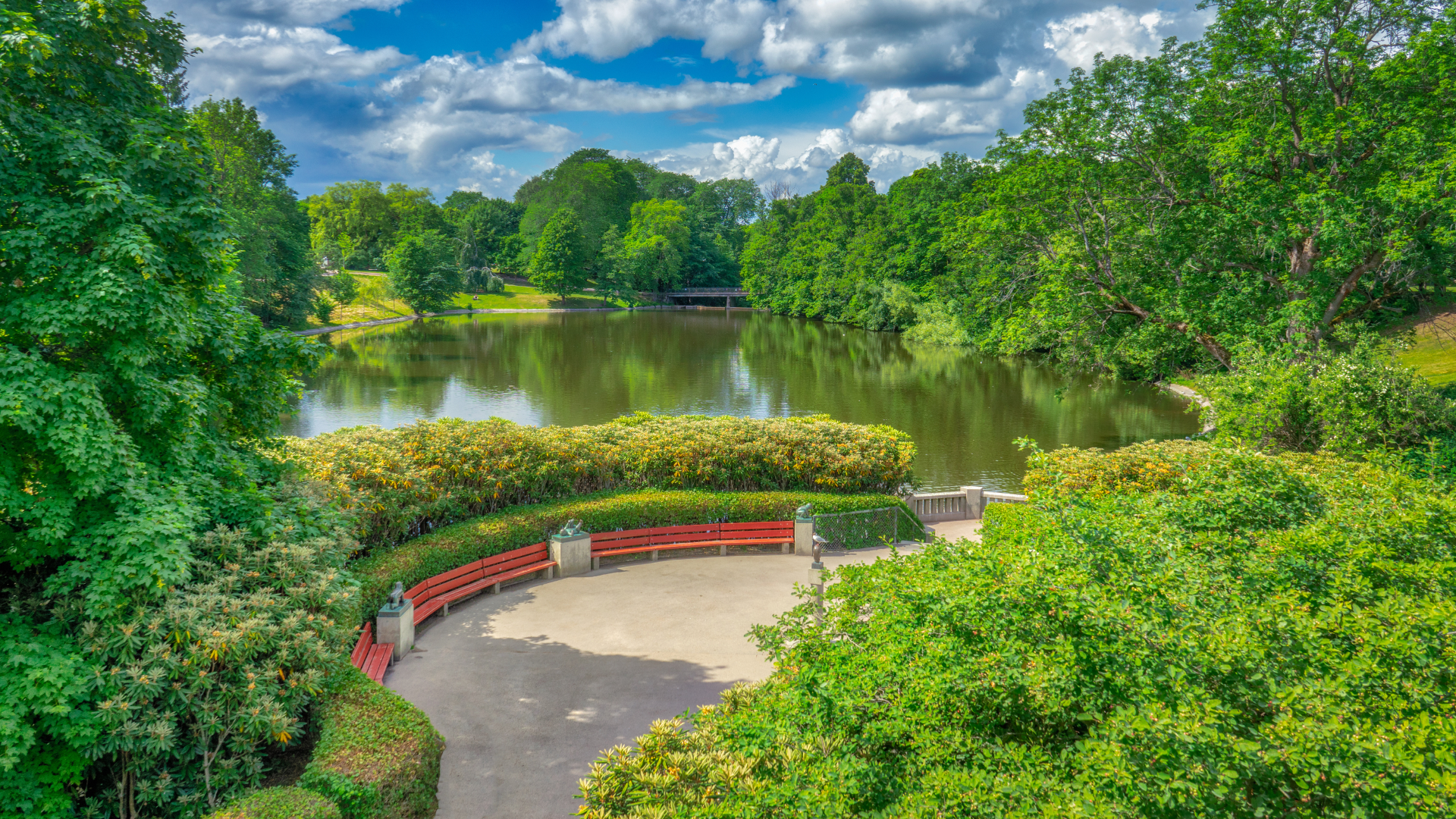 Next stop on our Oslo journey was the viking ship museum, which, like the Vigeland Park, was a first for us. Photography is always difficult inside a dim museum, but I got a few fairly good shots of the ships, including this one.
Next stop on our Oslo journey was the viking ship museum, which, like the Vigeland Park, was a first for us. Photography is always difficult inside a dim museum, but I got a few fairly good shots of the ships, including this one.
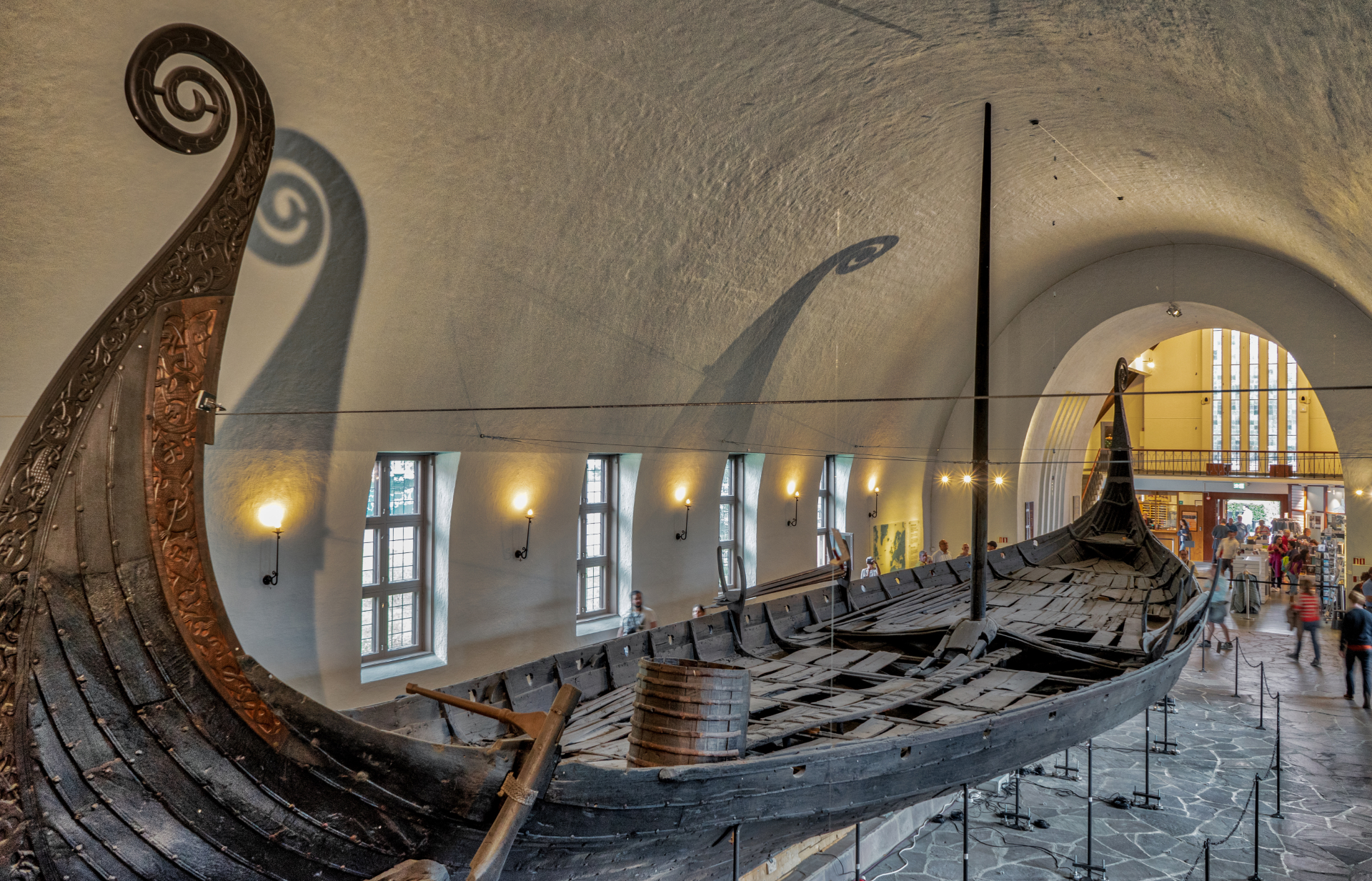 When we returned to downtown Oslo, it had started to rain so there wasn't going to be much photography happening. I did capture this image of the waterfront area as the rain moved on. By then it was time to go back to the ship, so except for a few more insignificant images from the walk back, that pretty much concluded the Oslo part of our journey.
When we returned to downtown Oslo, it had started to rain so there wasn't going to be much photography happening. I did capture this image of the waterfront area as the rain moved on. By then it was time to go back to the ship, so except for a few more insignificant images from the walk back, that pretty much concluded the Oslo part of our journey.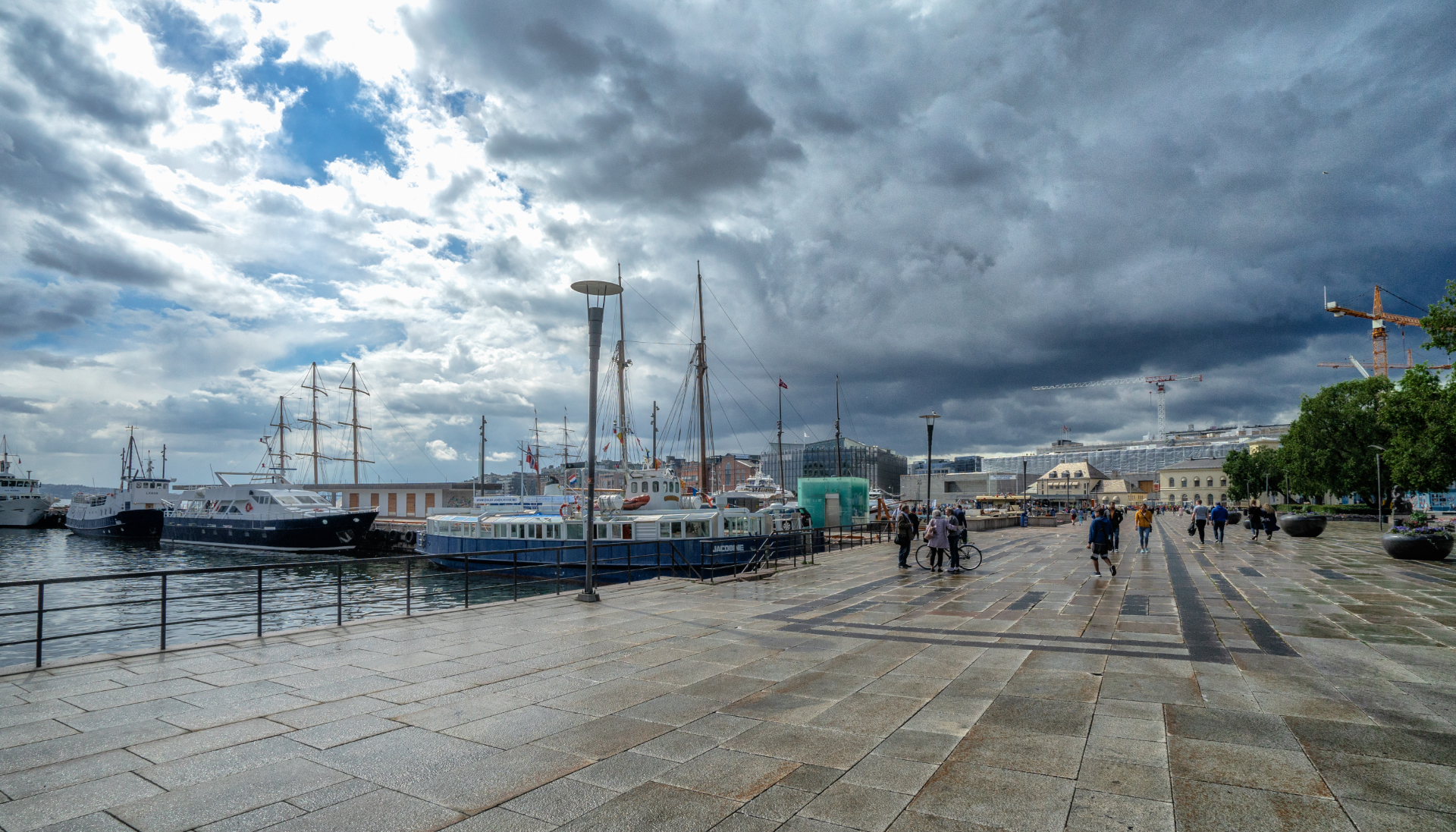 The ship, by the way, was this beauty. It looks impressive, but compared to real cruise ships, it's a dinghy. Still, it was plenty big for us and constituted a fine floating home for us during our voyage.
The ship, by the way, was this beauty. It looks impressive, but compared to real cruise ships, it's a dinghy. Still, it was plenty big for us and constituted a fine floating home for us during our voyage.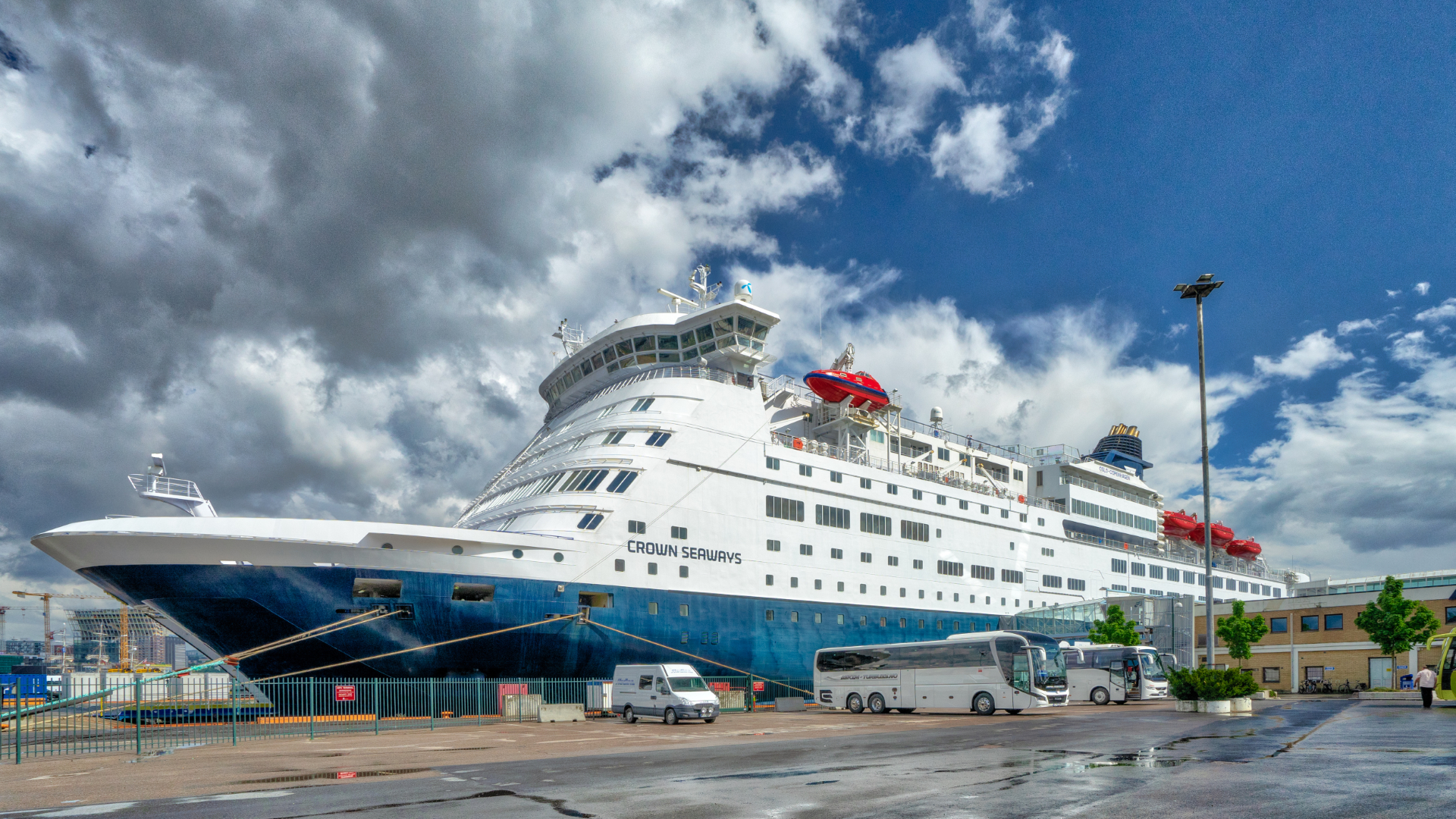 Exiting Oslo through the fjord presented a new opportunity for some great fjord photography, but again, it wasn't really happening. The light was dull, and I was again struggling with the dilemma of whether to use my sharp Sony 16-24 mm lens, resulting in distant subjects, or my 24-70 mm kit lens that may bring the subjects more forward, but is just visibly inferior in image quality.
Exiting Oslo through the fjord presented a new opportunity for some great fjord photography, but again, it wasn't really happening. The light was dull, and I was again struggling with the dilemma of whether to use my sharp Sony 16-24 mm lens, resulting in distant subjects, or my 24-70 mm kit lens that may bring the subjects more forward, but is just visibly inferior in image quality.
In the below image I obviously used the former, and it works okay with the clouds and the little ferry and all, but again... better light, like a sunset, would have done wonders. So, note to self: next time we go on this Oslo trip, make it coincide it with early sunsets and late sunrises. Not that photography should be the main purpose of these trips... Perish the thought!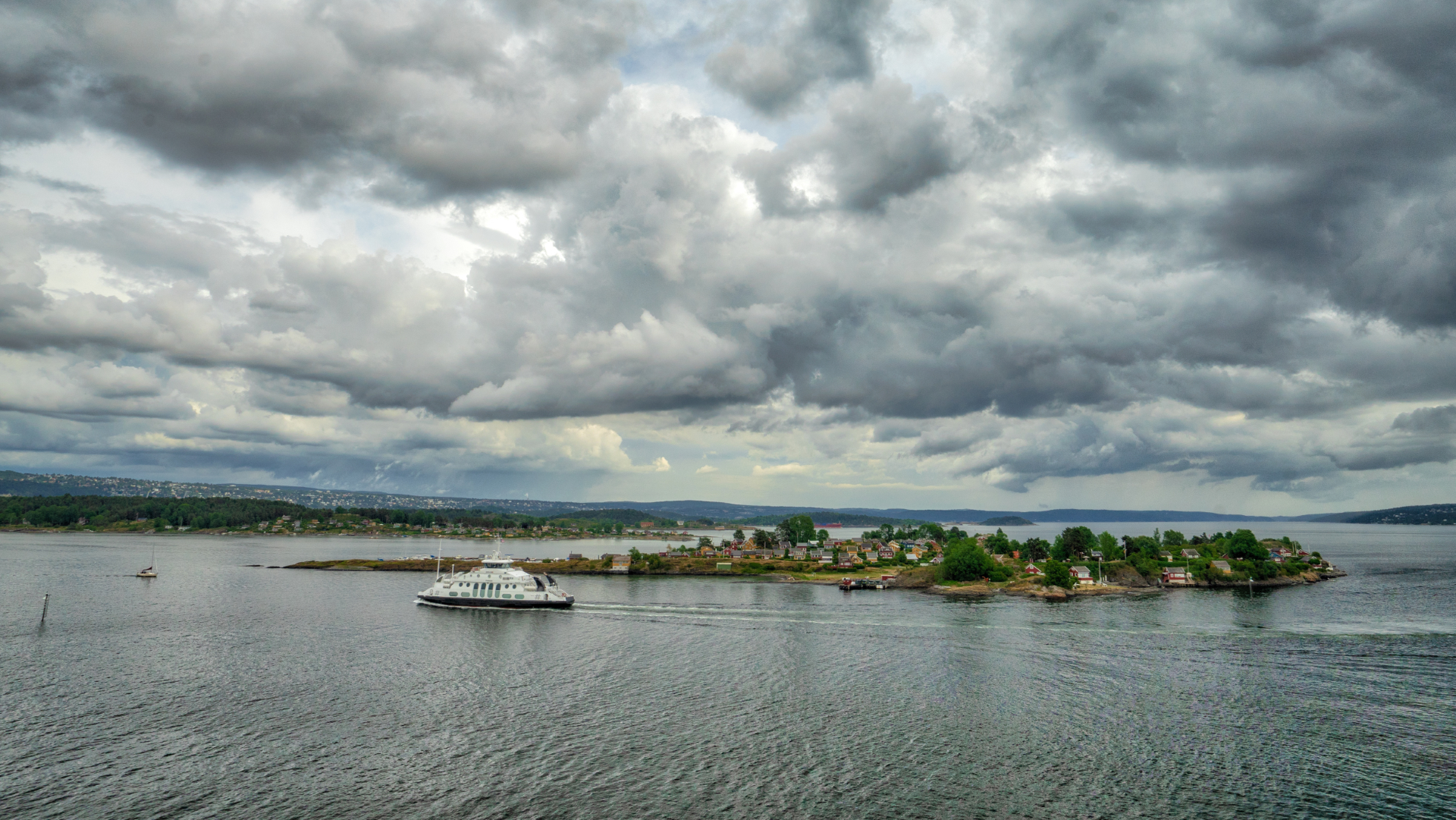 Later on, the restaurant where we were having dinner offered a great view of our trusty ship heading towards a storm. This is a picture taken with my cell phone as I didn't have my real camera on hand. Still, the result was one of my favorite shots of the day.
Later on, the restaurant where we were having dinner offered a great view of our trusty ship heading towards a storm. This is a picture taken with my cell phone as I didn't have my real camera on hand. Still, the result was one of my favorite shots of the day.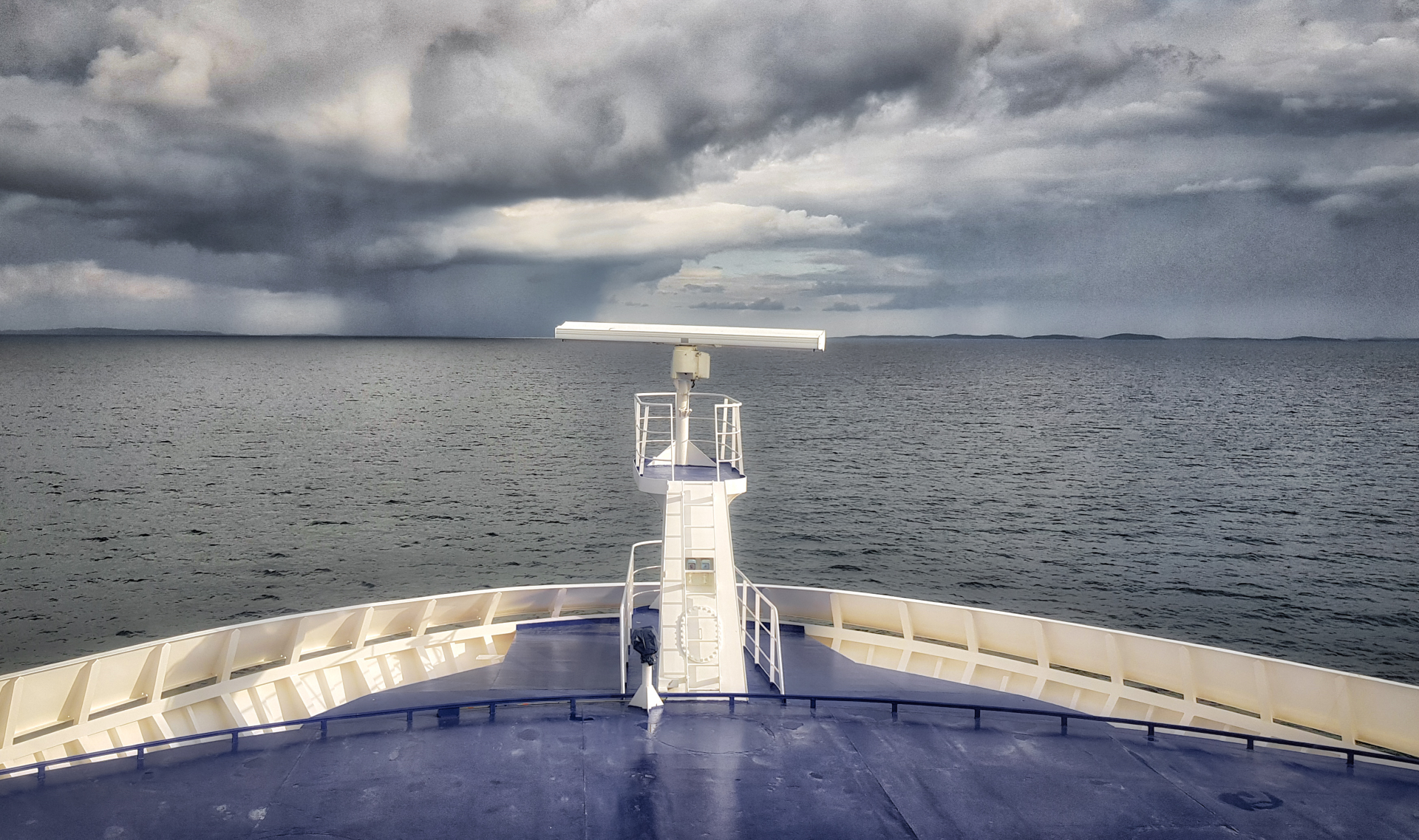 The above picture only marked the beginning of what was probably the photographic highlight of our two-day excursion. After dinner, like on the previous night, we went up on the deck to catch the sunset, and this time our faith was rewarded. I took numerous pictures as the sun disappeared below the horizon, but these two tell the story of a magical evening that put a perfect end to our trip.
The above picture only marked the beginning of what was probably the photographic highlight of our two-day excursion. After dinner, like on the previous night, we went up on the deck to catch the sunset, and this time our faith was rewarded. I took numerous pictures as the sun disappeared below the horizon, but these two tell the story of a magical evening that put a perfect end to our trip.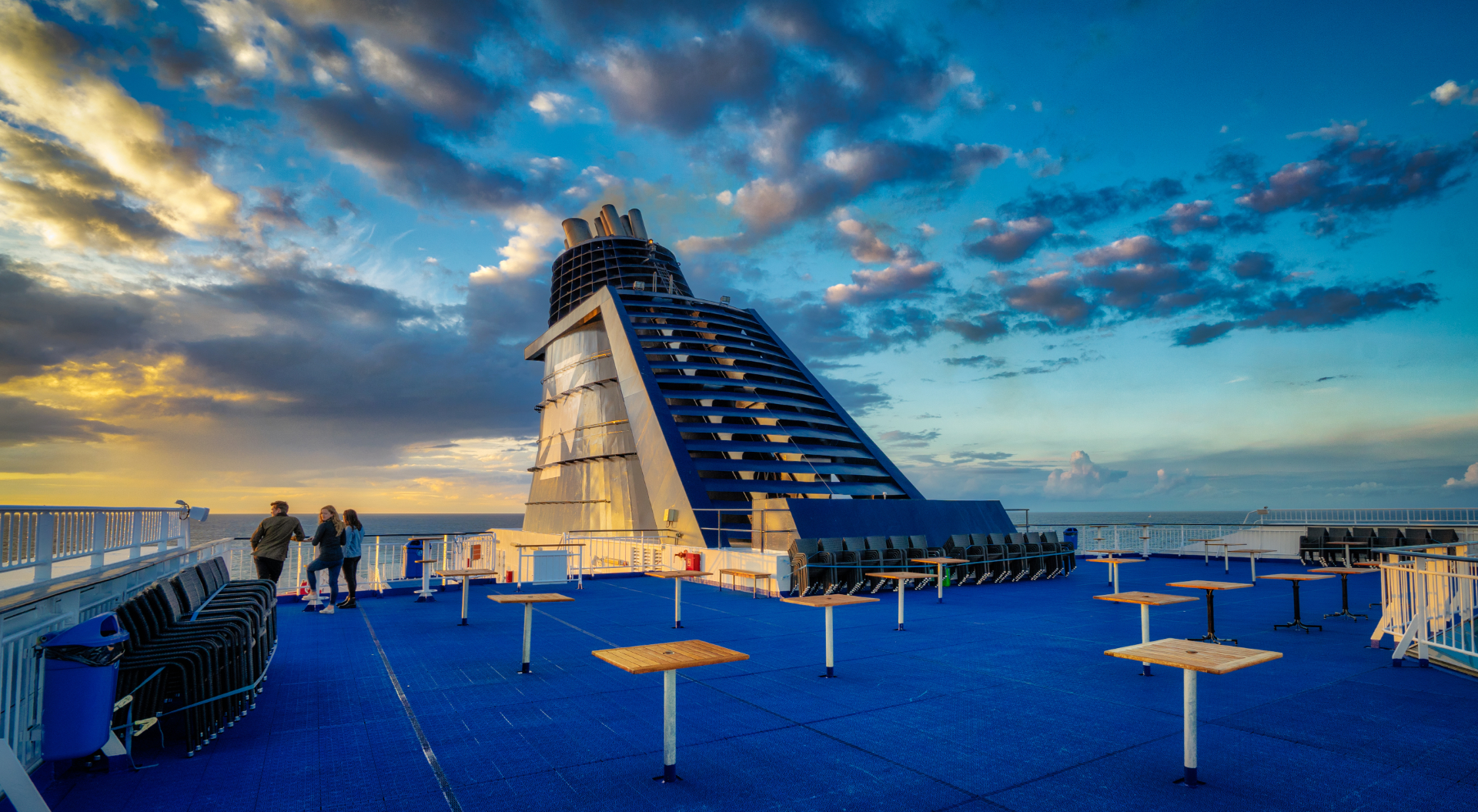
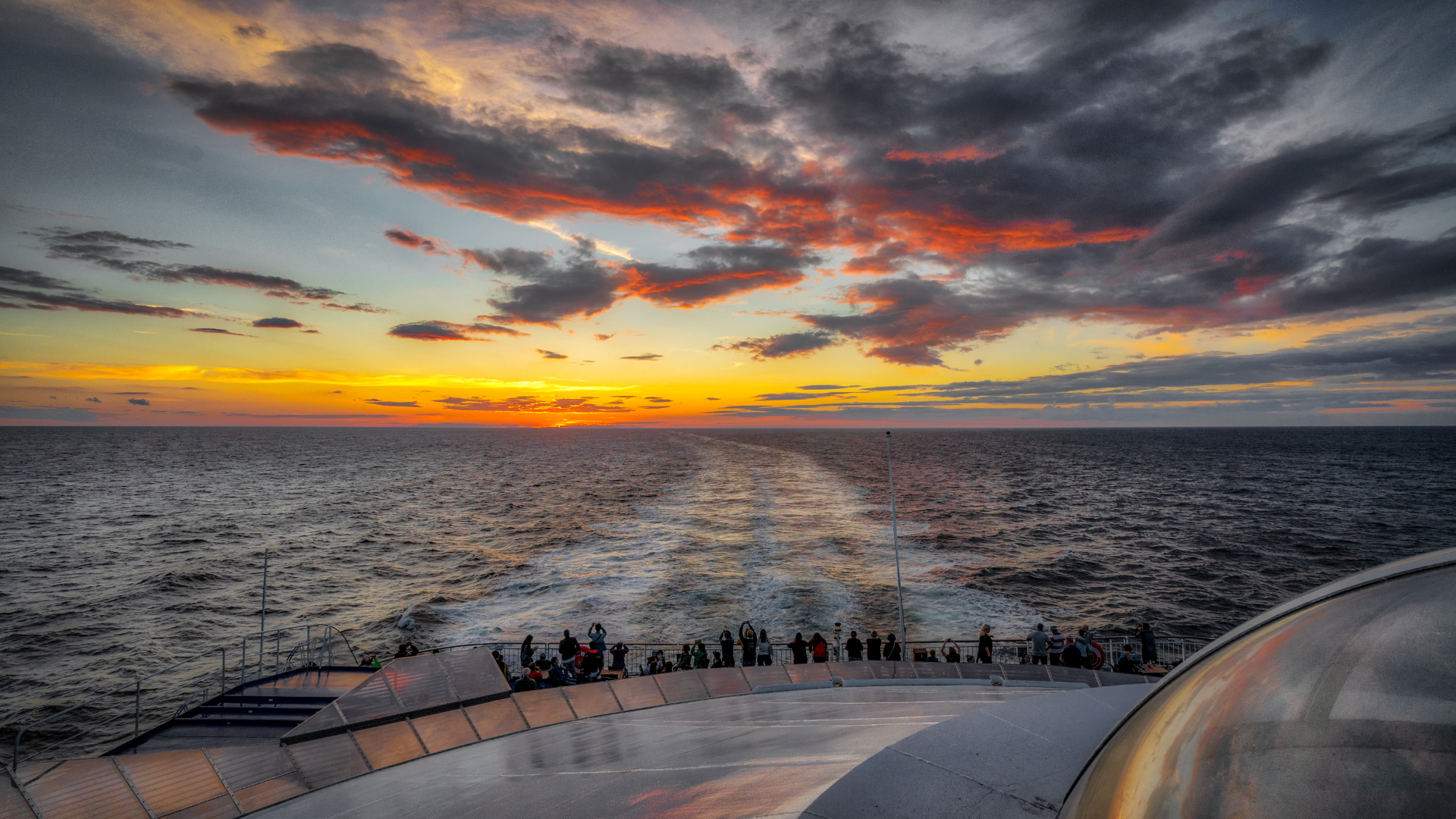 Actually, it wasn't quite the end. We still had one sleep left before arriving back in Copenhagen, and the next morning we, again, had a little time to go outside. Our intention was to have a look at Kronborg Castle as we sailed past, which we did, but it was too far away for me to get any interesting shots of it. Instead I caught the below image of the Helsingborg-Elsinore ferry tasting our wake.
Actually, it wasn't quite the end. We still had one sleep left before arriving back in Copenhagen, and the next morning we, again, had a little time to go outside. Our intention was to have a look at Kronborg Castle as we sailed past, which we did, but it was too far away for me to get any interesting shots of it. Instead I caught the below image of the Helsingborg-Elsinore ferry tasting our wake.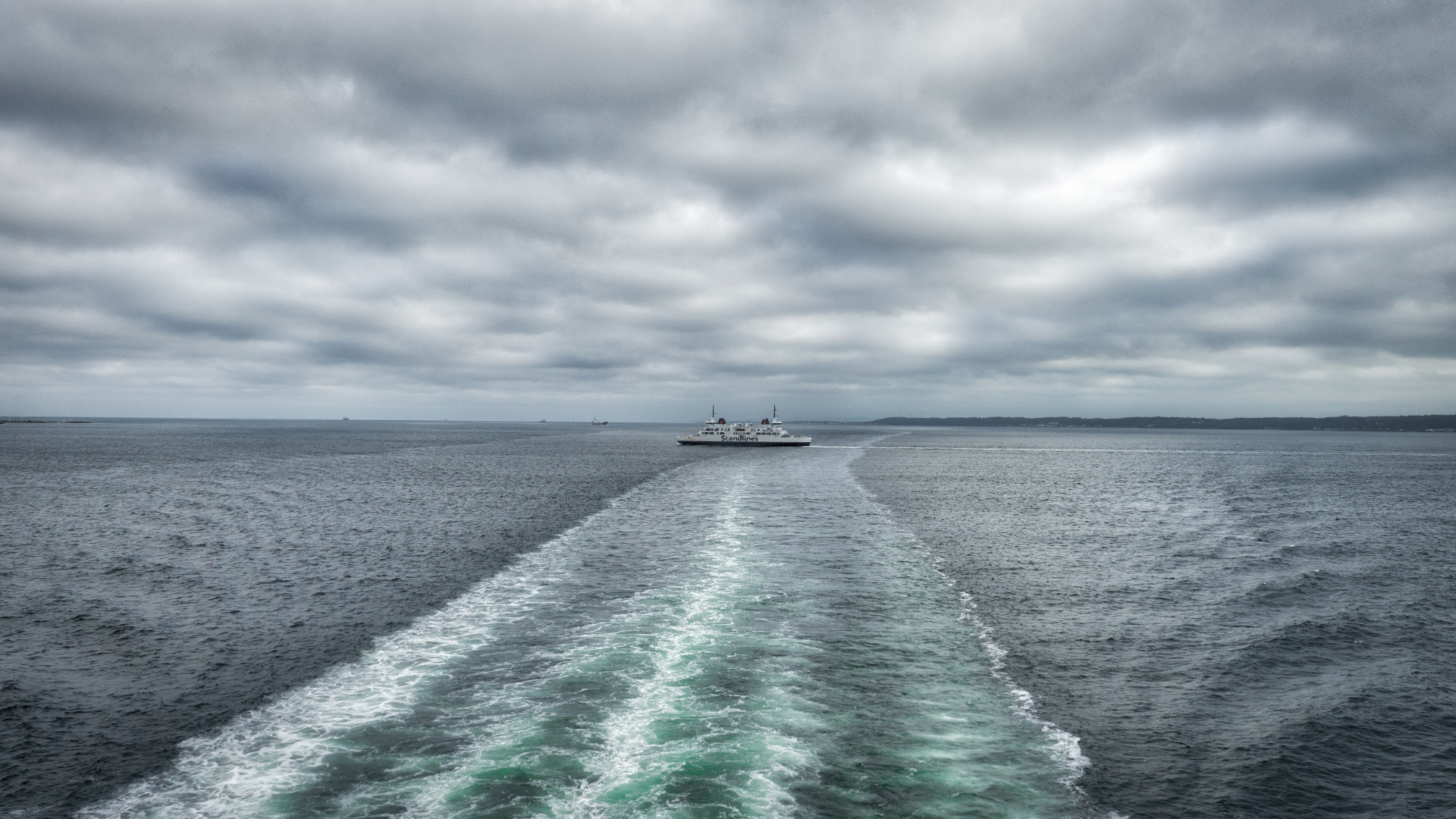 About an hour later we arrived in Copenhagen and departed the ship for the last time. We'd had a great time relaxing and being tourists. Photography-wise I still didn't quite get the ultimate pictures of the Oslo fjord, just as we didn't spend enough time in downtown Oslo to improve on my existing pictures of the city. Still, I was happy with seeing and photographing new locations in Oslo and getting some really nice ocean shots.
About an hour later we arrived in Copenhagen and departed the ship for the last time. We'd had a great time relaxing and being tourists. Photography-wise I still didn't quite get the ultimate pictures of the Oslo fjord, just as we didn't spend enough time in downtown Oslo to improve on my existing pictures of the city. Still, I was happy with seeing and photographing new locations in Oslo and getting some really nice ocean shots.
I'll be back!
Considering how few people actually see my photography - most of my images are only ever seen by me - I take it very seriously. I am finding my niche more and more in Danish landscape, and forest areas in particular. I love the forest. I grew up a few hundred meters from a forest and moved to my current home partly due to its vicinity to forest land.
But forest can be a challenging subject. Not for lack of compositions. But in order to take good forest pictures, you need to literally get off the beaten path and find the spots that no one ever sees. That is not always easy.
The other night I went back to the Strødam nature enclosure. I have written about it in the past, before I really knew what it was. I just knew there was a fence around it and signs telling you to stay out. Since then I have learned that it's an area owned by the government used for nature research. They are basically letting an area of forest, lakes, and meadows take care of itself without much human disturbance. There are tons of birds and deer, and a herd of more or less free-roaming cows. In other words, a paradise for nature and landscape photographers. Except, photographers are not allowed to go there.
Well, back in February part of the fence around the area was suddenly gone. I had a feeling they were just replacing it, because it was old and worn out, and it turned out I was right. But for a few weeks in February I could at least pretend I didn't know that I wasn't supposed to go in, so I did. I have in fact shown you a few pictures from those excursions without mentioning where they were taken or the circumstances. But anyway, as much as I love those gray, dreary images of the winter forest, I felt I had to return to see what it looked like in the spring.
So, I shouldered my camera bag, saddled my bicycle, and rode out to the area a couple of hours before sunset. I knew there was an entrance that did not have a gate. A discreet sign tells you to please stay out, but that's all, and on this evening I happened to look the other way as I passed it. Or at least, that was going to be my story if anyone asked.
A few bigger paths traverse the area, so I was able to ride my bicycle as I started my penetration into the forbidden land. I had not gone far before I heard a loud rustling sound from the brush. I couldn't see what caused the sound, but moments later two deer appeared in a meadow next to the path. One of them quickly dispersed into the woods, but the other one stood there and watched me long enough for me to raise my camera and grab a picture. Unfortunately, I had the 16-35 mm lens on, so I couldn't really zoom in on it much, but I still like the result.
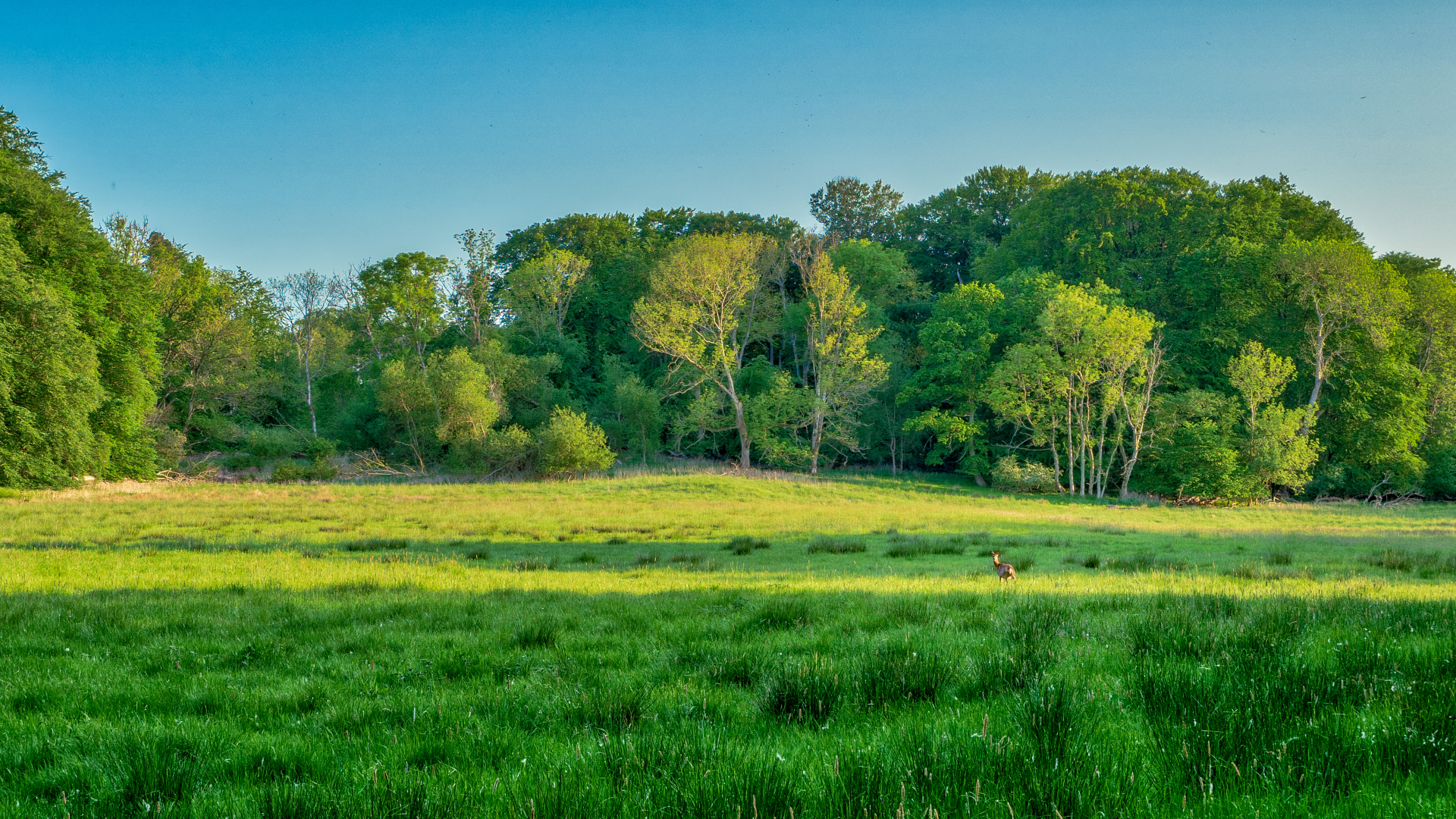 For the next hour or so I crisscrossed the area, setting up my tripod wherever a sunbeam flooded the forest floor, a branch reached out, a broken tree had been left to rot, or whatever else constituted a composition in my all too receptive brain. That is my strength and my weakness as a photographer. I see compositions everywhere, and that leads to too many pictures and sometimes rushed execution, because I have to go to the next spot and the next spot and the next. Still, I got away with this string of photos that have passed my own quality control.
For the next hour or so I crisscrossed the area, setting up my tripod wherever a sunbeam flooded the forest floor, a branch reached out, a broken tree had been left to rot, or whatever else constituted a composition in my all too receptive brain. That is my strength and my weakness as a photographer. I see compositions everywhere, and that leads to too many pictures and sometimes rushed execution, because I have to go to the next spot and the next spot and the next. Still, I got away with this string of photos that have passed my own quality control.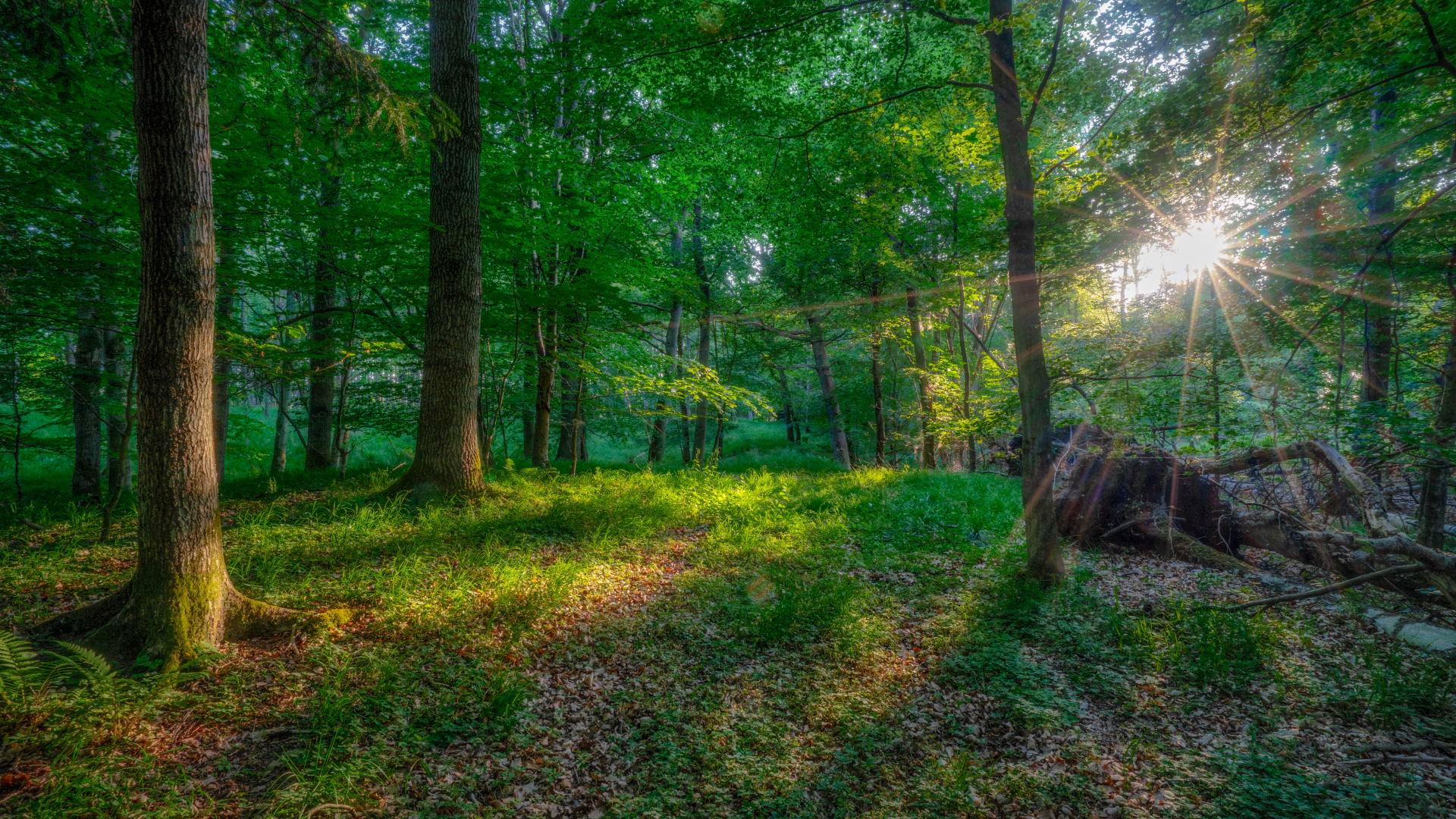
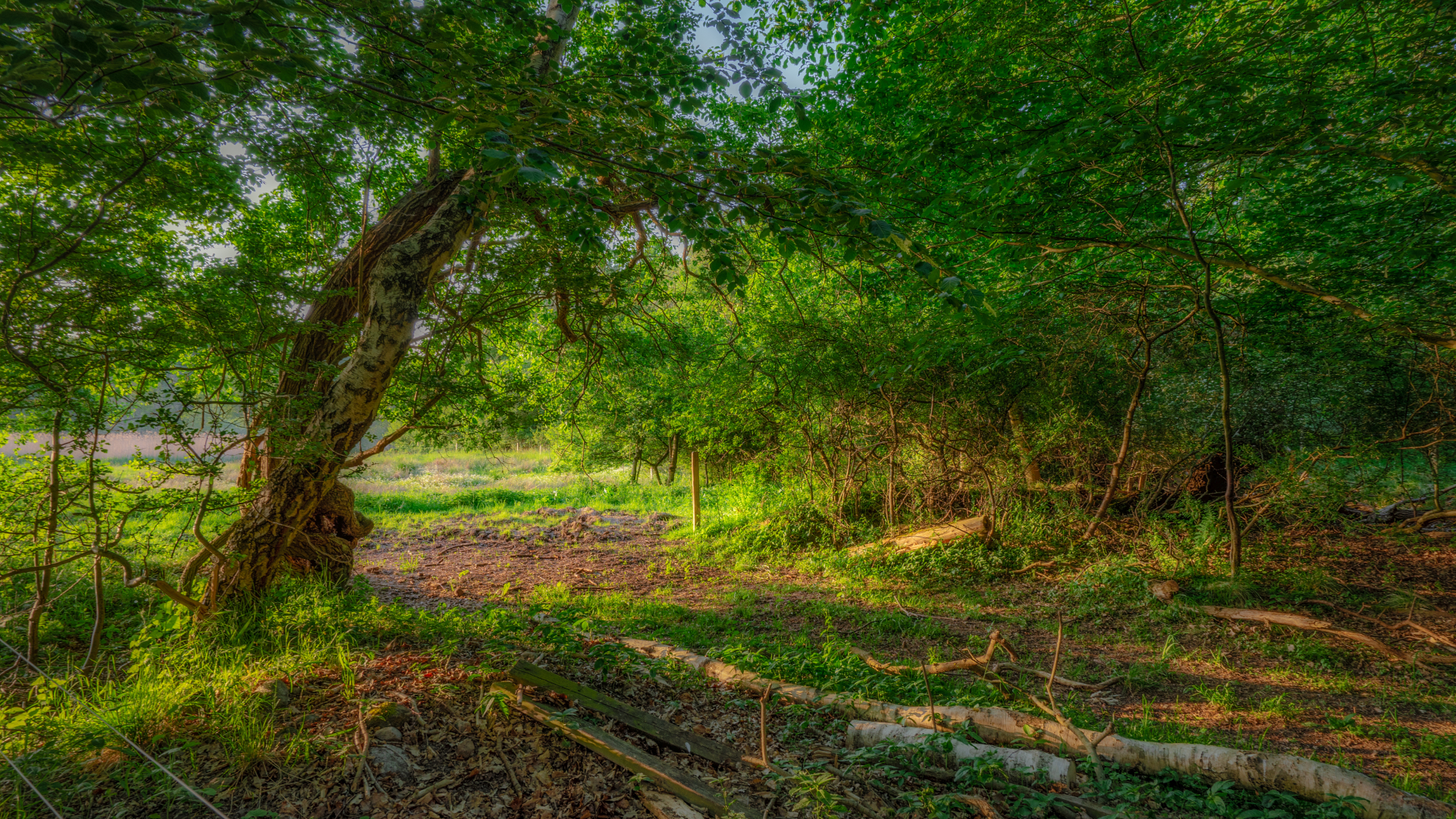
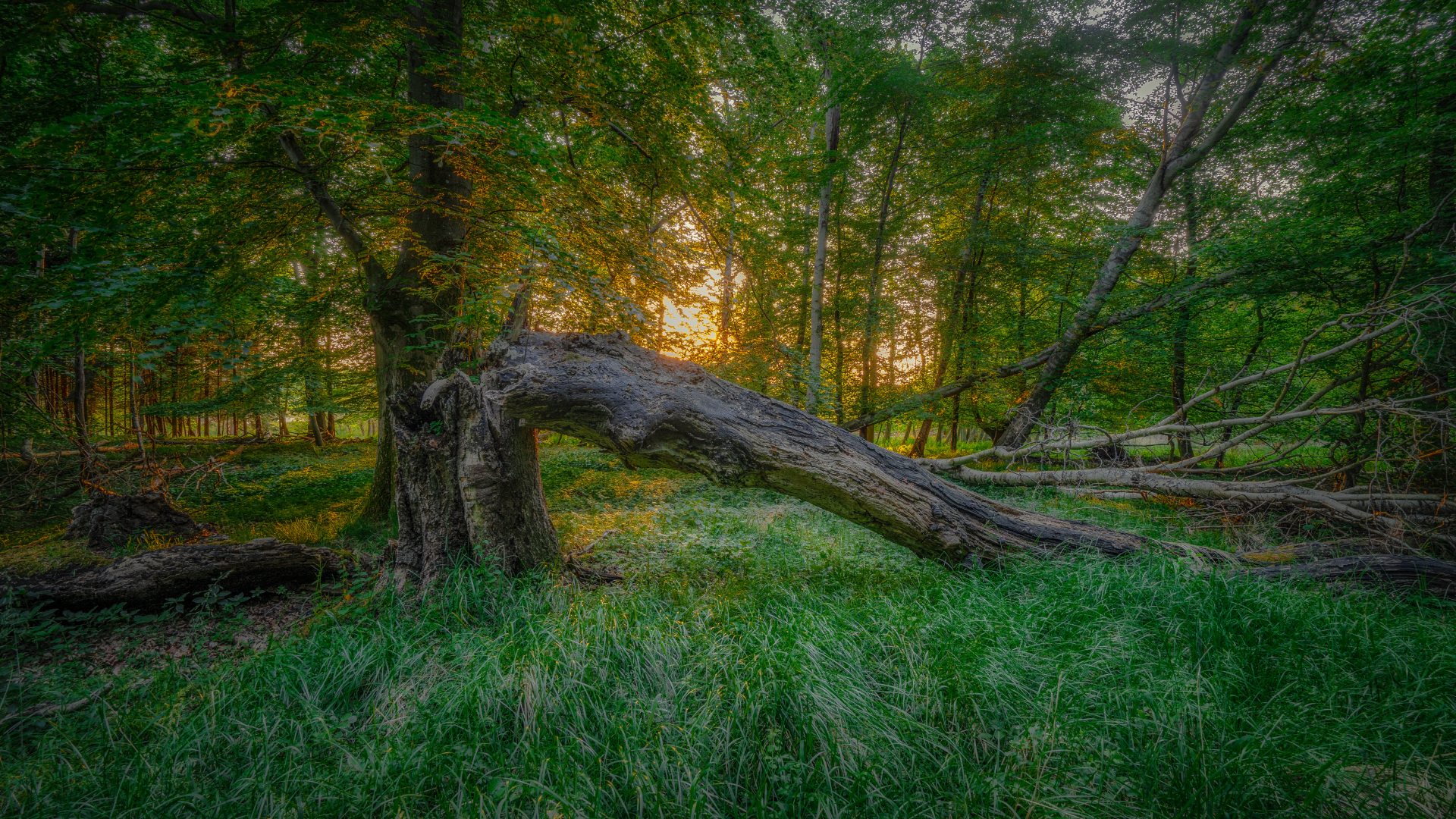
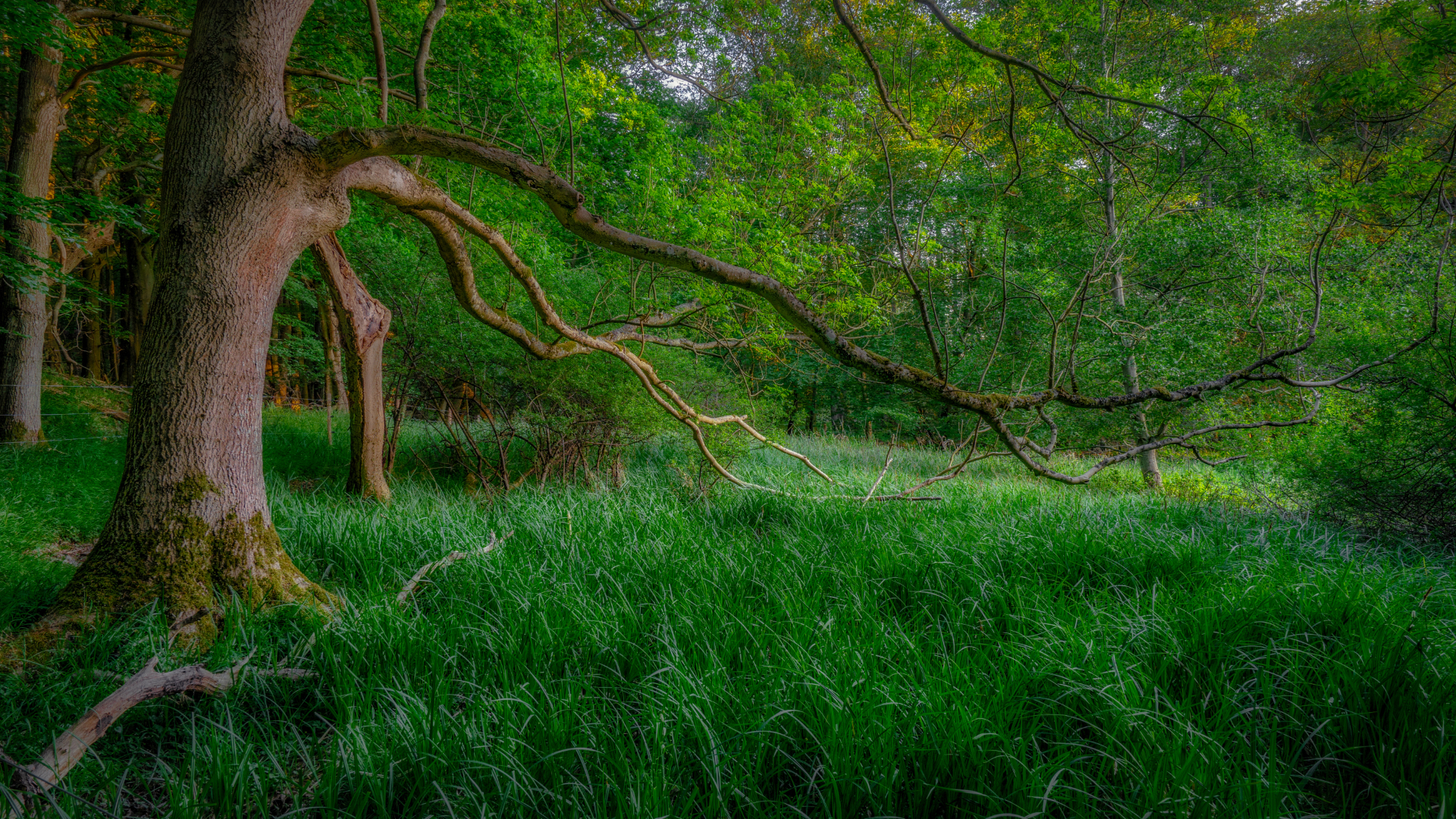
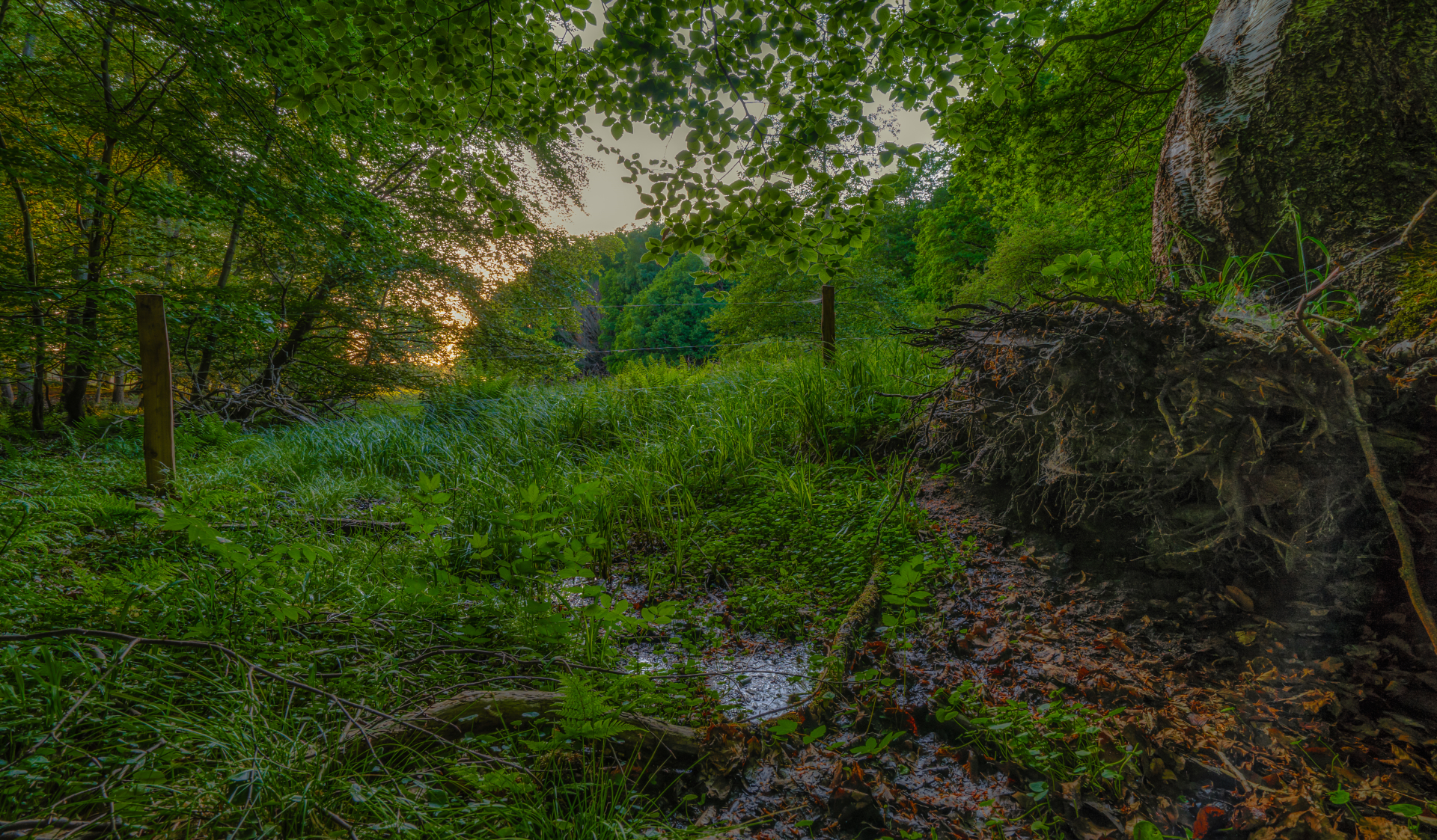 Along the way I had suddenly heard a dog bark not very far away. The barking came closer, and in an instant I went from being an amateur photographer enjoying nature to Harrison Ford in The Fugitive. I was sure some nature police squad had spotted me and was trying to hunt me down for trespassing. I hid behind a tree and cursed myself for having left my bicycle out in the open.
Along the way I had suddenly heard a dog bark not very far away. The barking came closer, and in an instant I went from being an amateur photographer enjoying nature to Harrison Ford in The Fugitive. I was sure some nature police squad had spotted me and was trying to hunt me down for trespassing. I hid behind a tree and cursed myself for having left my bicycle out in the open.
In the end, the dog moved further away, and it had probably just been out for an evening walk with its human. Still, I sighed a breath of relief and went on my way.
By now it was starting to grow dark, but just as I was considering packing up and heading back home, I saw movement through the trees ahead of me. I walked closer and approached the edge of the forest, and that's when I realized what was going on. It was the resident cow herd that was frolicking in the cool evening air. In other words, picture opportunity!
I snuck closer to the herd, which of course, they immediately spotted, un-stealthy as I am. So instead of posing for me, the cows took off, not walking lazily away, but at a gallop, and positioned themselves on a nearby ridge. They were staring at me, and I was staring back, and lo and behold, the leader cow started to move back down the hill towards me. At this point it should be mentioned that there was a fence between me and the herd. Still, I started to get a little apprehensive, because it didn't look like a very solid fence. Soon the entire herd was moving back towards me, and the leader cow did not look particularly friendly. Now, I have not heard of killer cows in Denmark, but the whole situation was starting to seem a little dicey.
Still, I kept snapping away and kept my head cool enough to increase the ISO and keep the the exposure at a decent 1/50 seconds, and here's the result of my efforts: possibly the best cow picture in my collection.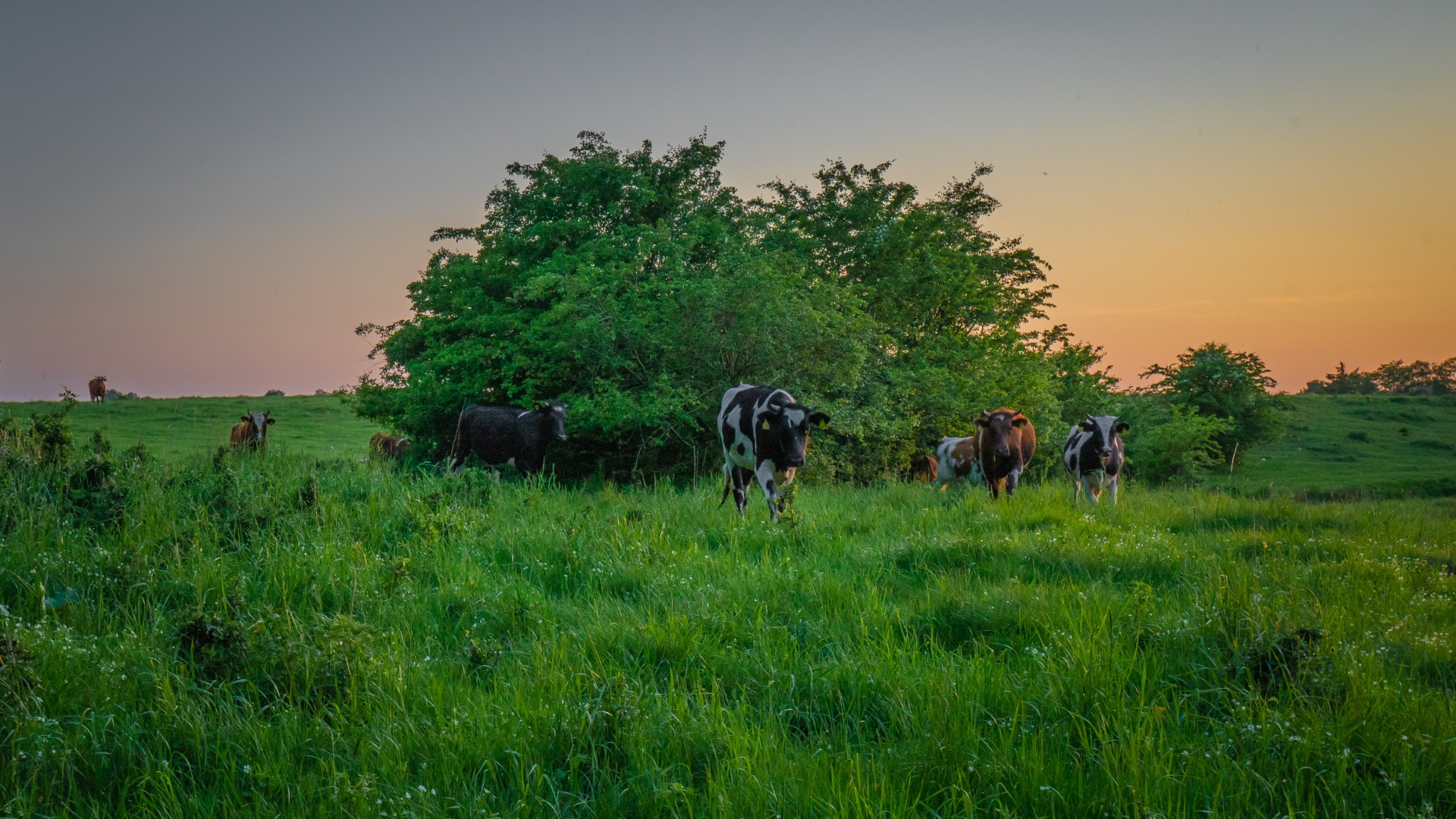 Now, my wife always tells me to be careful whenever I head out on a photo mission, and I always say I will be, so I figured now was the time to live up to my word and begin my retreat in good order. So I shouldered my tripod and left the cows behind. Being cows, they probably never intended to attack me, but were merely curious and hoping for a bite to eat other than their usual grass. That wasn't going to happen as it was now time to pack up my gear and head home...
Now, my wife always tells me to be careful whenever I head out on a photo mission, and I always say I will be, so I figured now was the time to live up to my word and begin my retreat in good order. So I shouldered my tripod and left the cows behind. Being cows, they probably never intended to attack me, but were merely curious and hoping for a bite to eat other than their usual grass. That wasn't going to happen as it was now time to pack up my gear and head home...
Pack up my gear.... Where was my camera bag? Where was my camera bag?
WHERE WAS MY CAMERA BAG?????
As soon as the realization hit me that I did not have my camera bag with me, a panic started to spread through my body. Where did I last see it? I had no idea. Hopefully, I had just left it with my bicycle back on the path. I stumbled back through the underbrush, getting several nettle stings along the way. And no, there was no sign of my bag anywhere near my bicycle.
There was no way around it. I had to backtrack to all the locations I had been at, which by this time amounted to half a dozen, several of which I wasn't even sure if I could find again, having walked through semi-dense forest to get to them.
As I pedaled back to the previous spot, and the one before that, thoughts of losing a bag containing maybe $2000 worth of camera equipment was very present in my mind... or having to come back early the next morning to continue the search... or worse, having to contact the nature enclosure administration and confess my sin of having entered the area without permission, but "pretty please, would you return my camera bag if you find it, thank you..."
That's when I suddenly remembered when I had last seen it. At one of my last stops, I had changed lenses. That's where I must have left the bag on the ground. And sure enough, I managed to make it back to the spot and found the bag exactly where I left it.
My legs burning from nettle stings and bloody scratches up and down my calves from scrambling through the brush, but relieved as hell, I was finally ready to head for the exit.
But my trouble had only just started. I wanted to leave the area through the southern edge. I had done that without problem during an earlier visit, because I had found a spot where two fences didn't quite overlap and thereby left a hole big enough for a person to walk through. After finding the spot, which in itself was a challenge since no paths led to it, I realized that the missing overlap was no more.
I had to climb over the fence - with my bicycle.
The bicycle was the easy part. The fence was no taller than I was able to lift the it across. Getting my own 94 kilos to the other side was harder. There was nothing to really step on to get a good take-off, plus the fence was actually a little bit electric. I had visions of myself missing my leap and getting stuck straddling the fence and having my finer parts fried.
But it had to be done. I put my foot on the bottom string of the fence and leaped. The string broke and for a fraction of a second my worst fear was coming true. But through sheer adrenalin and will power I exerted my last strength and landed safely on the other side.
Almost overcome with exhaustion, I pulled my bicycle through the last shrubbery, tearing my shirt and adding a few more scratches to my legs. But I was out... I was finally out. I had been hunted by dogs, attacked by killer cows, had my legs shredded by thorns and nettles, almost lost most of my camera equipment, and been forced to cross an electric fence, but I was alive. And I had a memory card full of what I hoped was a bunch of outstanding images.
Back on the bicycle path, I found that the chain had fallen off my bike. I didn't care. I put it back on and headed home.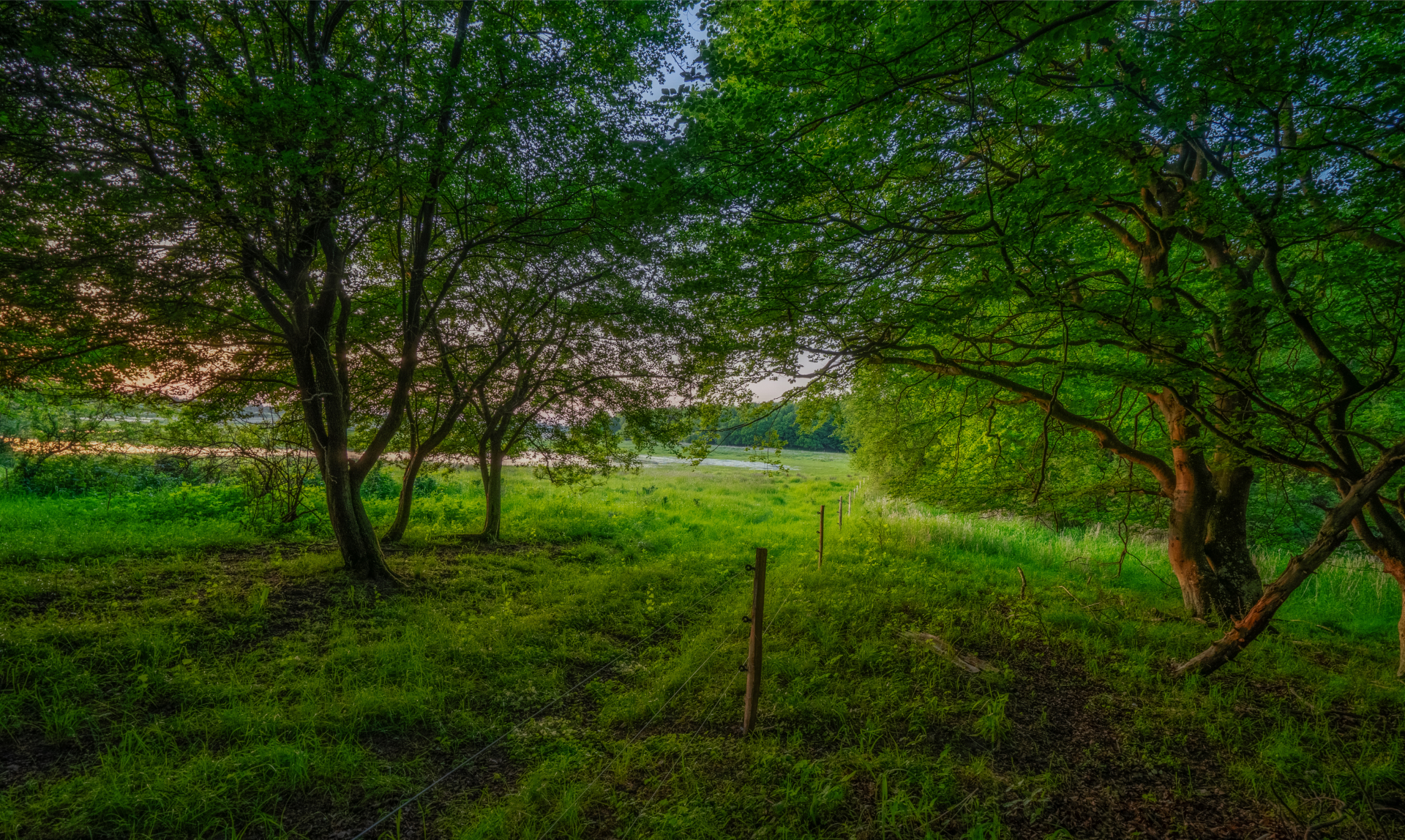
So, a couple of days ago I went out on a run in the local forest. And now you're no doubt getting all kinds of images in your head of one of those uber-cool middle-aged men in Lycra clothes training for the next marathon or triathlons in some far-away metropolis. And sure, on my good days that's kind of how I view myself, too, despite needing 17-18 minutes to cover my measly 3 kilometer route.
On this day I wasn't feeling particularly gazelle-like, but I wasn't feeling horrible either. After approaching the 1 kilometer mark, I still felt like this could indeed be the day when, for the first time this season, I completed my 3 kilometers without having to walk for a bit in the middle.
However, I was never to find out. Suddenly my foot hit an obstacle, and for a terrifying second I found myself desperately trying to regain my balance but failing miserably and stumbling forwards, cell phone flying out of my hand, left knee hitting something hard on its way down, and my almost 49-year-old, overweight body hitting the forest path with all of its 94 kilos, probably registering as a pretty major event on local ant community seismographs, if such a thing exists.
With the adrenalin racing through my blood, I didn't spend much time spread out on the ground, intending instead to continue running as if nothing had happened. But getting up and looking down on myself I had to face the fact that my cool Lycra running pants had been torn open around my left knee and blood was visible. So I figured I'd better take it easy for a little while as I assessed my injuries.
I picked up my trusty Samsung, stopped my Endomondo session, which had happily continued counting the seconds of my ill-fated exercise, and started walking. And that's when it happened. I looked up and found myself in the middle of one of nature's miracles. All around me lush, light-green leaves were seemingly free-floating in the air, frail and tender, and so fresh they looked like they might not have been there five minutes ago.
I suddenly realized that if some invisible bump in the path hadn't forcefully stopped me, I might have missed the full extent of this wonder. I raised my, fortunately unscathed cell phone, and started shooting, forgetting all about my aching knee and hurt pride. The sun was shining from a clear blue sky, emphasizing the incredible greenness of these leaves. I have never covered spring at a more perfect moment. In a week or two the forest will be completely green and absolutely mindblowingly beautiful, and I will no doubt be out there shooting it with my Sony, but to catch it at this exact time and in this light felt like a stroke of luck that more than compensated for my misery.
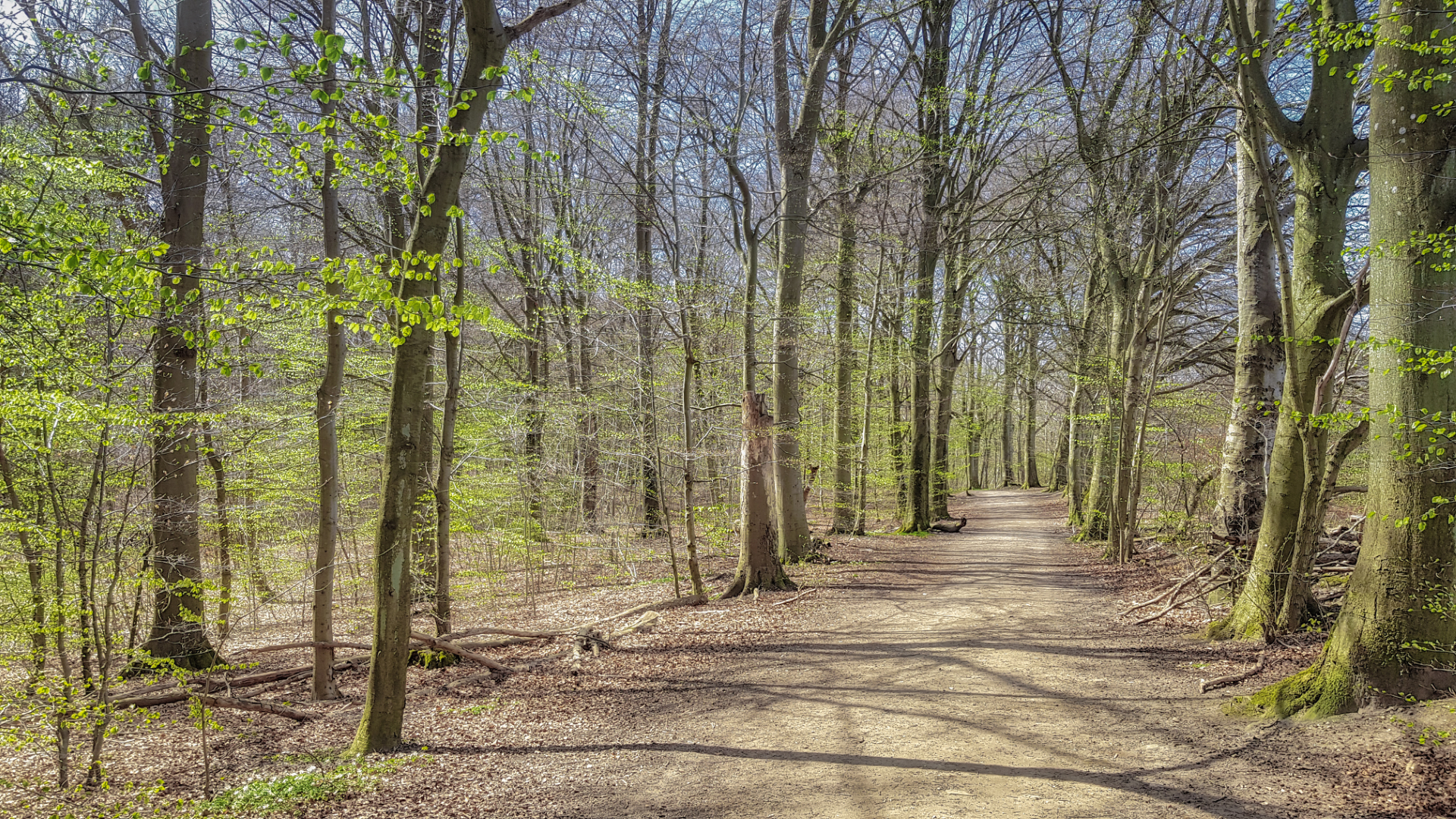
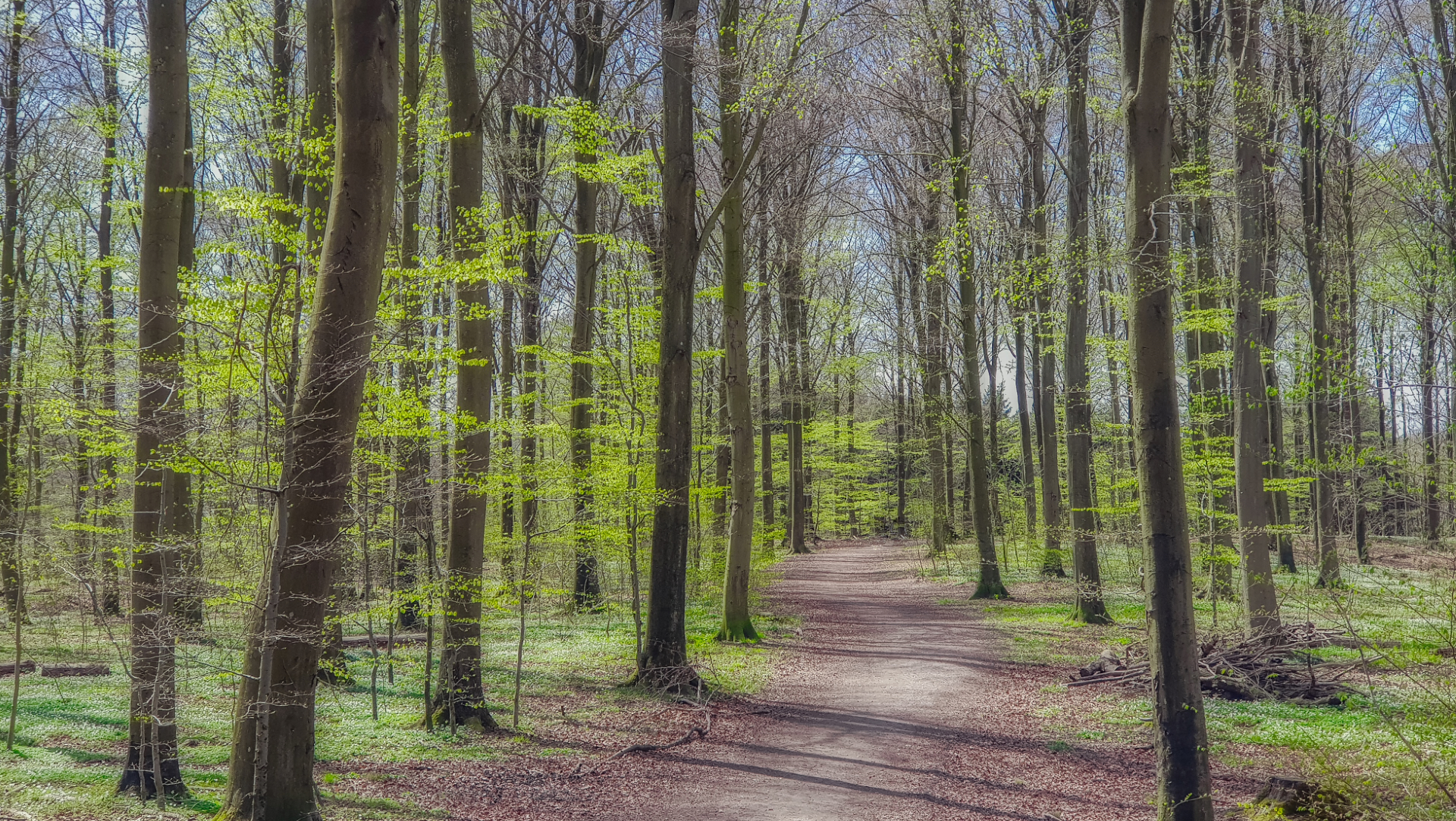
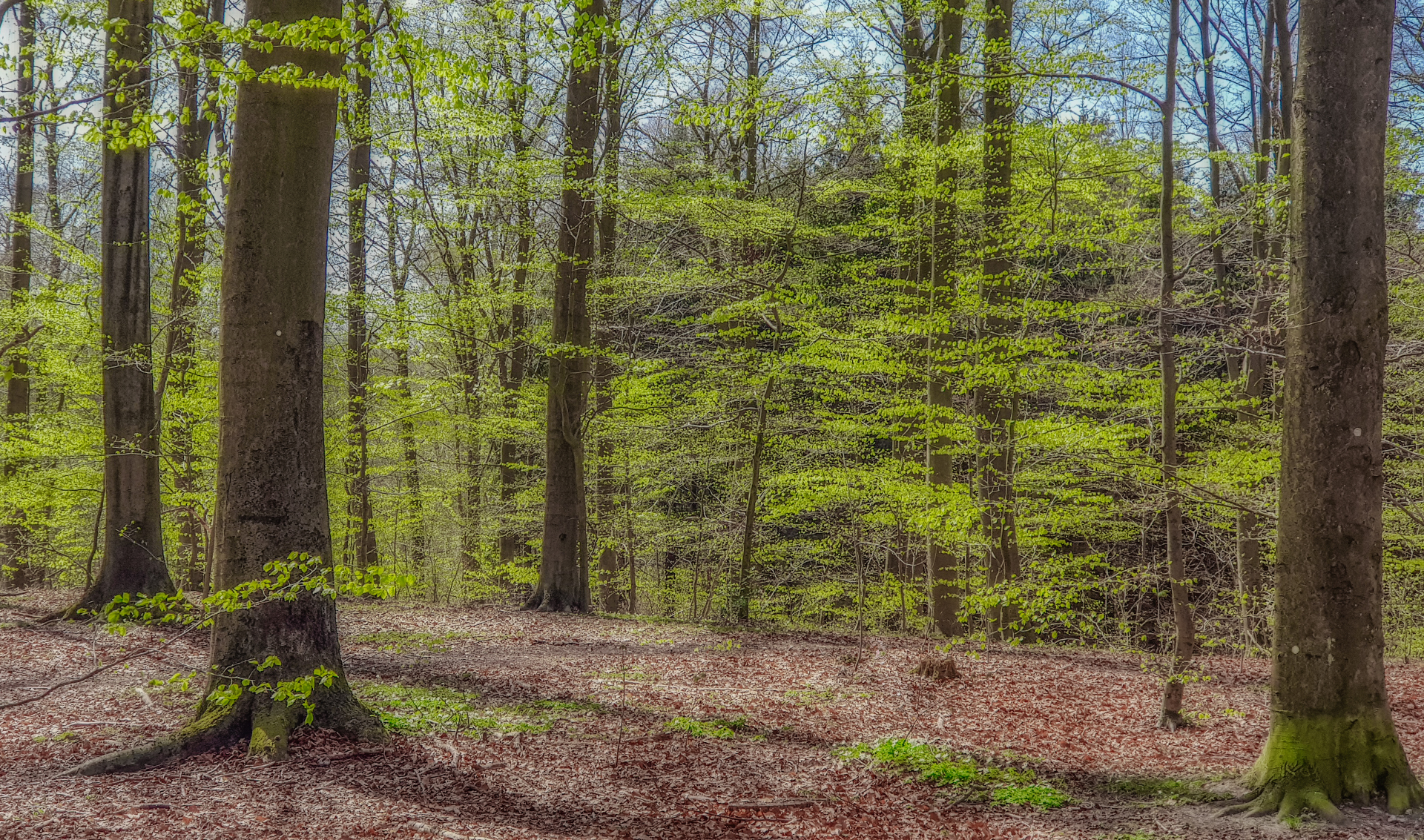 I half ran, half walked the rest of the way home. There I soon realized that my fall had been worse than first estimated. The wound in my knee was big and painful, and my body was aching in several places - and still does as I'm writing this. But looking at these images and reliving the awe I was feeling in the moment, I can only smile.
I half ran, half walked the rest of the way home. There I soon realized that my fall had been worse than first estimated. The wound in my knee was big and painful, and my body was aching in several places - and still does as I'm writing this. But looking at these images and reliving the awe I was feeling in the moment, I can only smile.
I may not be the greatest photographer in the world, but I'm a hell of a lot better at taking pictures than I am at running, and that's all right with me.
They say that once every few thousand years, the magnetic poles flip, reversing north and south. What the scientists missed was that the flip took place last weekend, and for a brief period during the shift, positioned the North Pole in Odsherred, Denmark.
As it happened, Odsherred was the part of Denmark where, that very weekend, my wife and I had decided to spend a couple of days away from the humdrum of our every day life and see something new. We ordered the trip a while back thinking the middle of March would be, if not full-blown spring, then at least noticeable more pleasant than the cold winter.
How wrong we were. Even on our way over there during a stop at a small marina, we got a preview of what was to come. The marina was protected from the wind by a tall ridge, but plenty of cold air coming straight out of Siberia reached us to make us shiver and start worrying a bit about what we'd gotten ourselves into.
Still, I managed to get off a few shots of the beach area, in pretty difficult middle-of-the-day-light, including this nice one showing cloud reflections in the reasonably calm water.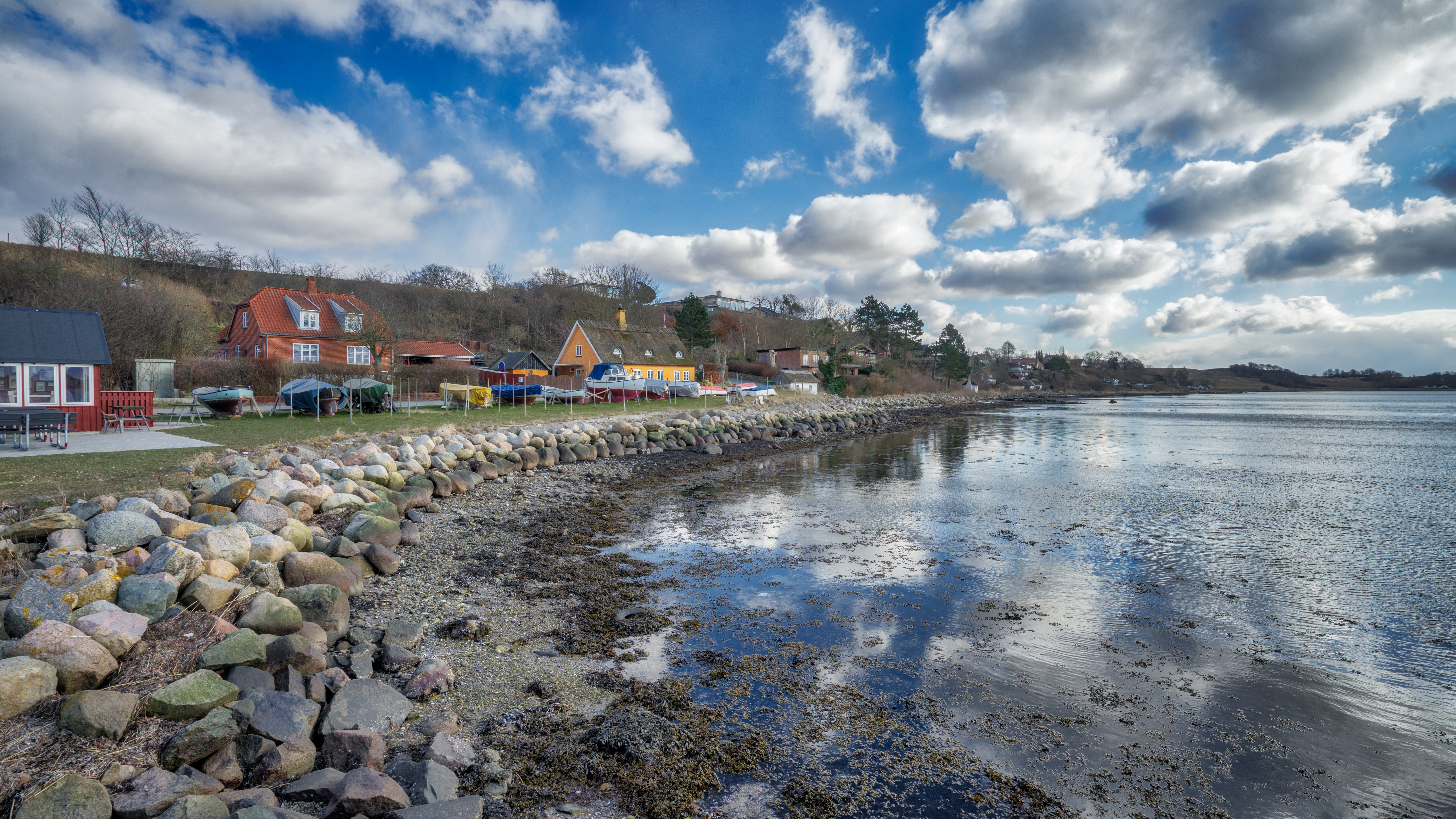 That same evening after checking in to our hotel, we went for a walk in the area near the hotel. The sun was low in the sky and revealed some beautiful scenery with a peaceful lake surrounded by animal pastures. There were no animals, however, as they - or their owners - had realized what perhaps we should have realized ourselves: it was too damn cold to be outside. The photography suffered as a result. There wasn't time for much location scouting, so I wasn't quite happy with the images of what, at first glance, had looked like a slam dunk. This one is pretty nice though, but nothing spectacular.
That same evening after checking in to our hotel, we went for a walk in the area near the hotel. The sun was low in the sky and revealed some beautiful scenery with a peaceful lake surrounded by animal pastures. There were no animals, however, as they - or their owners - had realized what perhaps we should have realized ourselves: it was too damn cold to be outside. The photography suffered as a result. There wasn't time for much location scouting, so I wasn't quite happy with the images of what, at first glance, had looked like a slam dunk. This one is pretty nice though, but nothing spectacular.
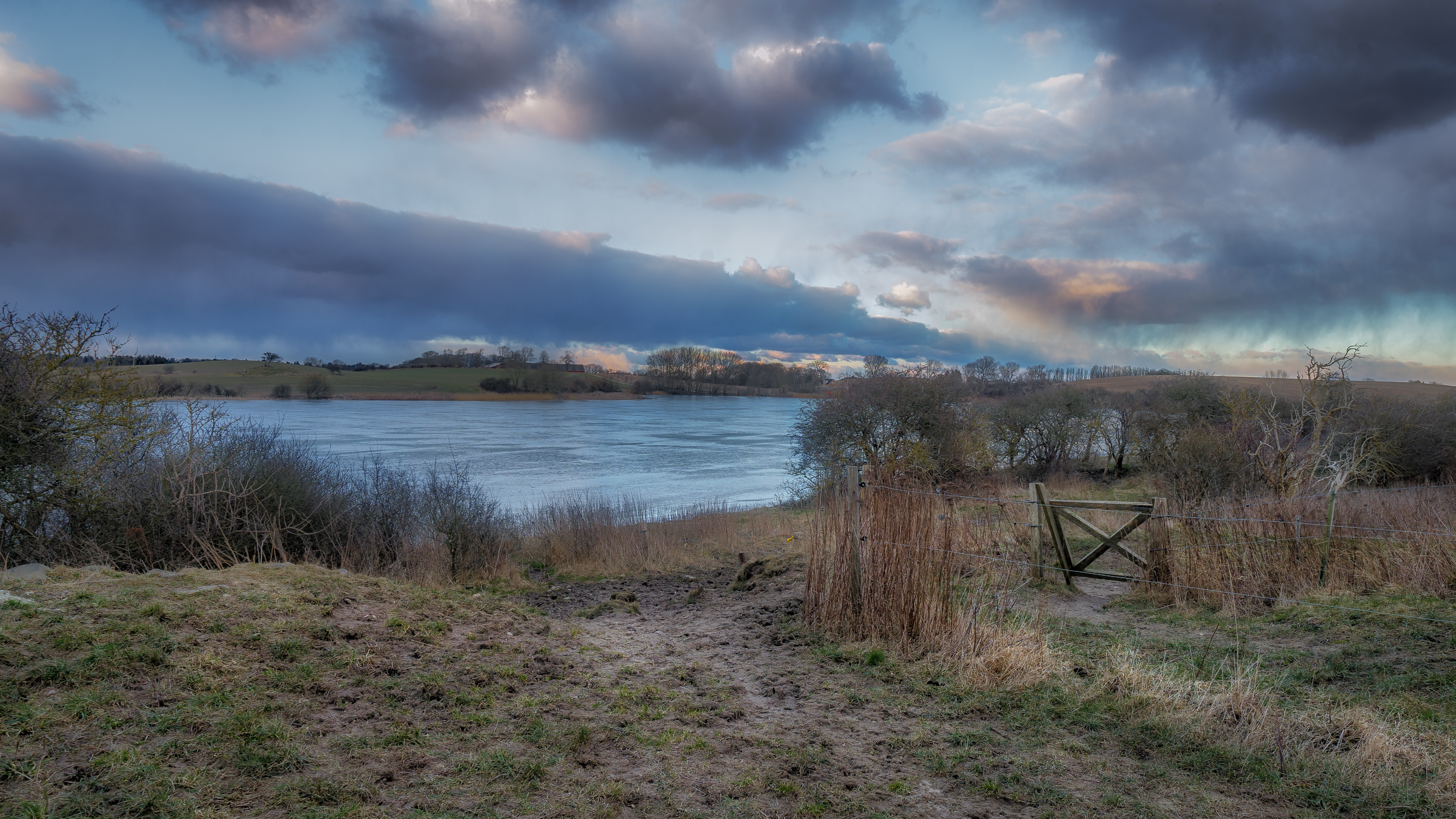 The next day was our only full day in Odsherred. There were several locations I wanted to seek out, most importantly the long strip of land that protrudes from the north-west corner of Zealand and ends in the middle of the ocean. About halfway to the tip, we spotted a parking lot at a beach and decided to get out and take a look.
The next day was our only full day in Odsherred. There were several locations I wanted to seek out, most importantly the long strip of land that protrudes from the north-west corner of Zealand and ends in the middle of the ocean. About halfway to the tip, we spotted a parking lot at a beach and decided to get out and take a look.
That's when it happened. Stepping out of the car and down to the beach, the realization that today wasn't just cold cold - today was excruciatingly cold, as in dangerously cold, as in physically painful cold - hit.
It was the wind. It came in from the north-east. 20-30 kilometers an hour, multiplying the -5 degrees Celsius by 4-5 times. It cut through my knitted hat like a knife and into my skull, instantly setting off a brutal headache. But still I persisted. The scenery was too spectacular to miss. Wave after wave came rolling in, crashing against rocks loosely spread along the beach, white clouds drifting across the blue sky. I ran back and forth, shooting one image after another, the freezing wind mutilating my face and hands like an ice-shooting blowtorch.
It paid off. The best image of the entire weekend was shot here on this North Pole beach. Several others were almost as good.
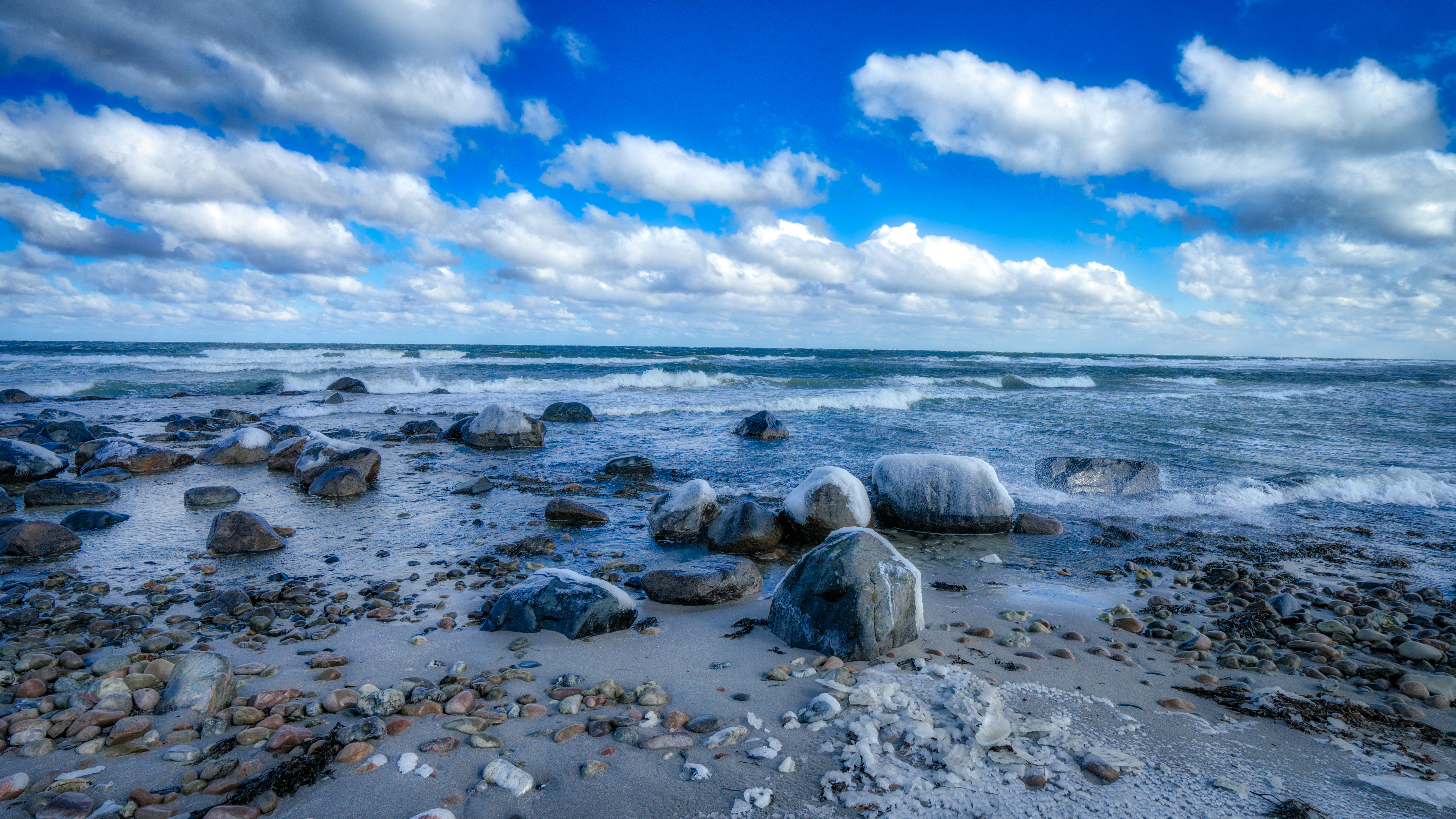 Moving on to the actual tip of the land tongue, we found ourselves on another beach every bit as brutal as the one we had just left. By this time I had somehow managed to zone in to my usual viking mode where cold doesn't affect me much. I could still feel the pain of icy wind on my exposed skin, but this time it didn't take away my focus or my ability to operate the camera. The result was another batch of images that I'm rather proud of, including these two... and the selfie that you see at the top of this post.
Moving on to the actual tip of the land tongue, we found ourselves on another beach every bit as brutal as the one we had just left. By this time I had somehow managed to zone in to my usual viking mode where cold doesn't affect me much. I could still feel the pain of icy wind on my exposed skin, but this time it didn't take away my focus or my ability to operate the camera. The result was another batch of images that I'm rather proud of, including these two... and the selfie that you see at the top of this post.
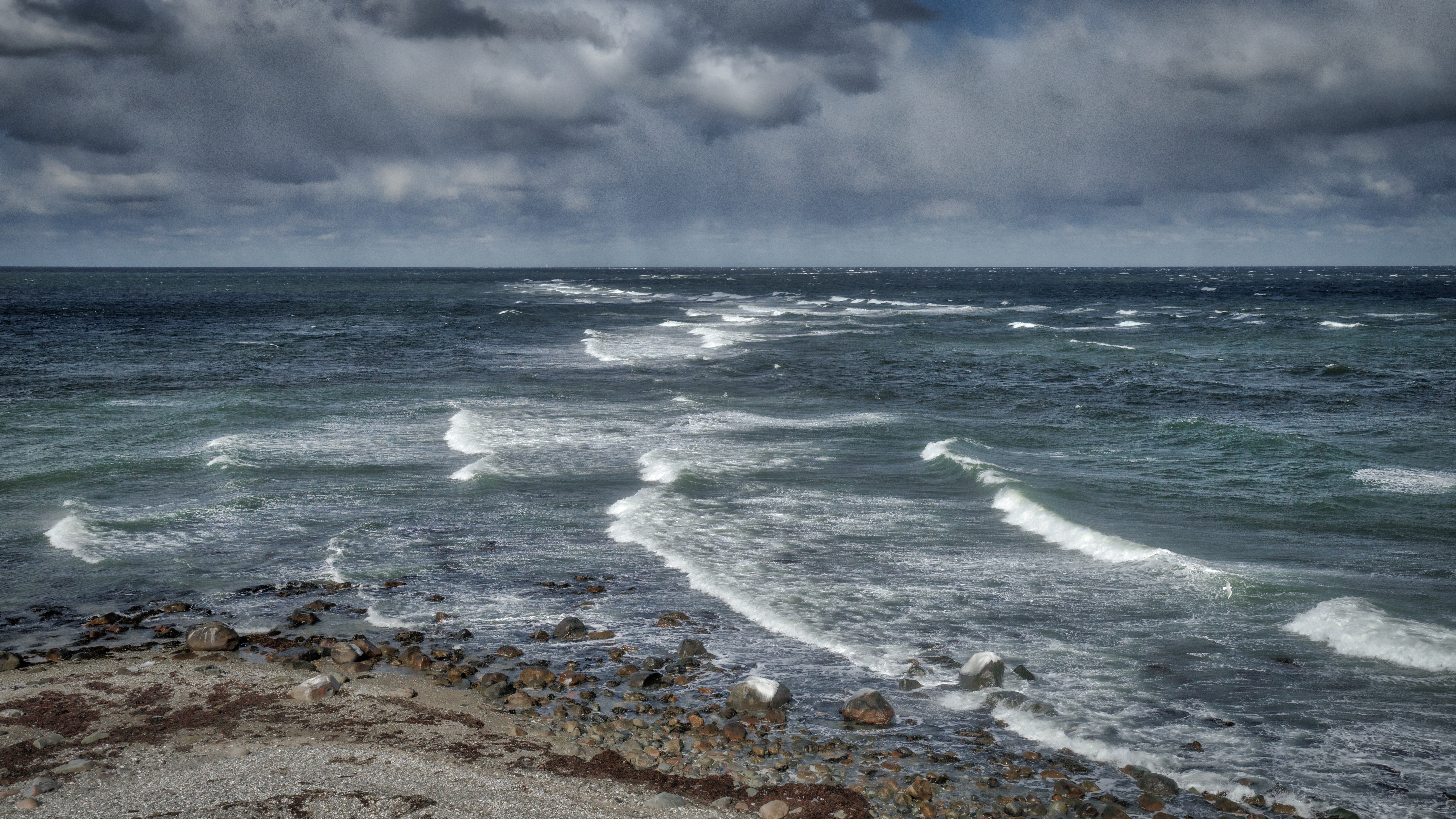
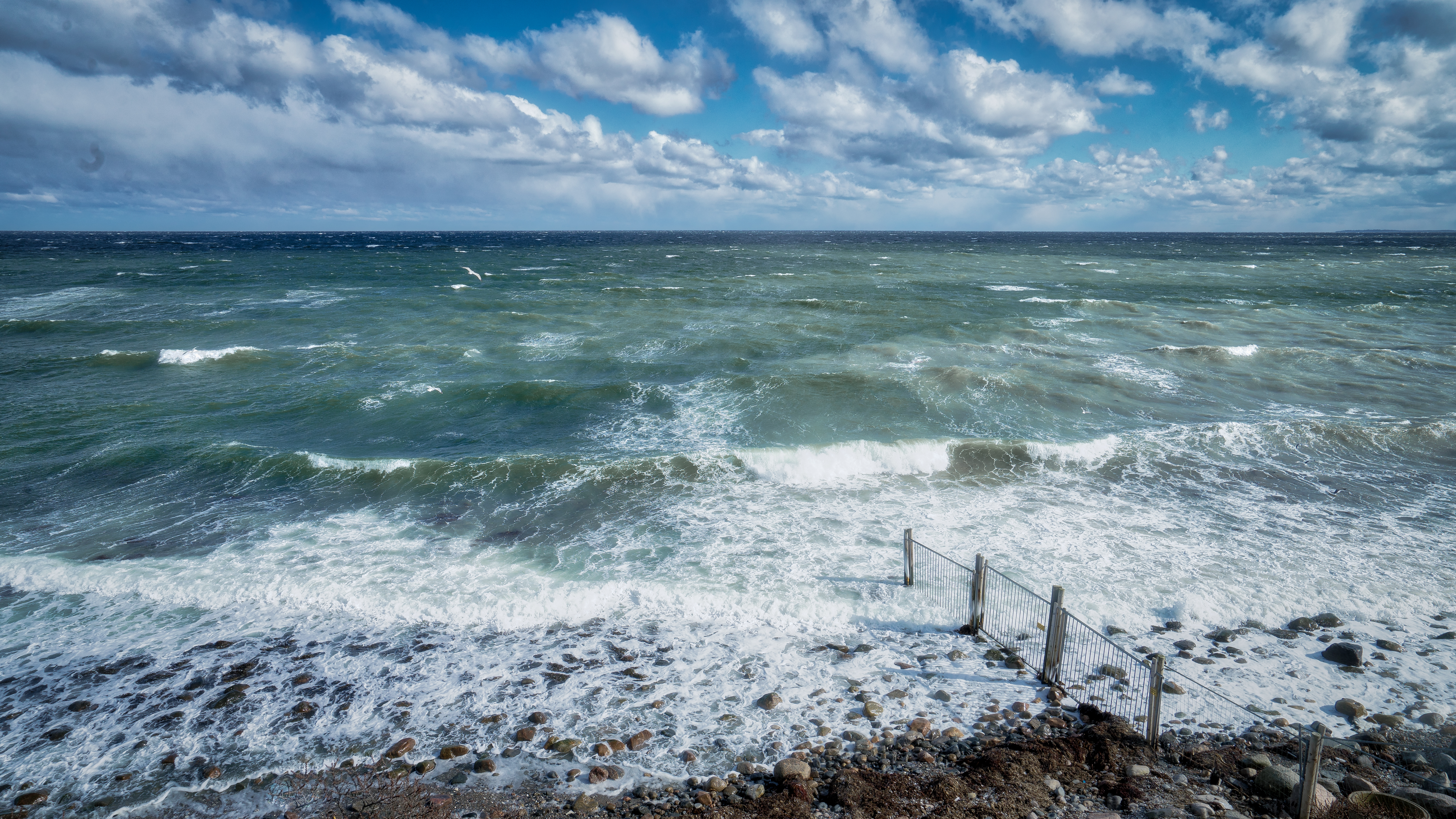 Our next stop was the small ferry town of Rørvig (don't even try to pronounce it if you are not Danish). We were met by another freezing sledgehammer, but the light was spectacular. Out over the sea, snow showers lingered while the sun set fire to the water. I snapped away and caught these decent images along with several others I was happy with.
Our next stop was the small ferry town of Rørvig (don't even try to pronounce it if you are not Danish). We were met by another freezing sledgehammer, but the light was spectacular. Out over the sea, snow showers lingered while the sun set fire to the water. I snapped away and caught these decent images along with several others I was happy with.
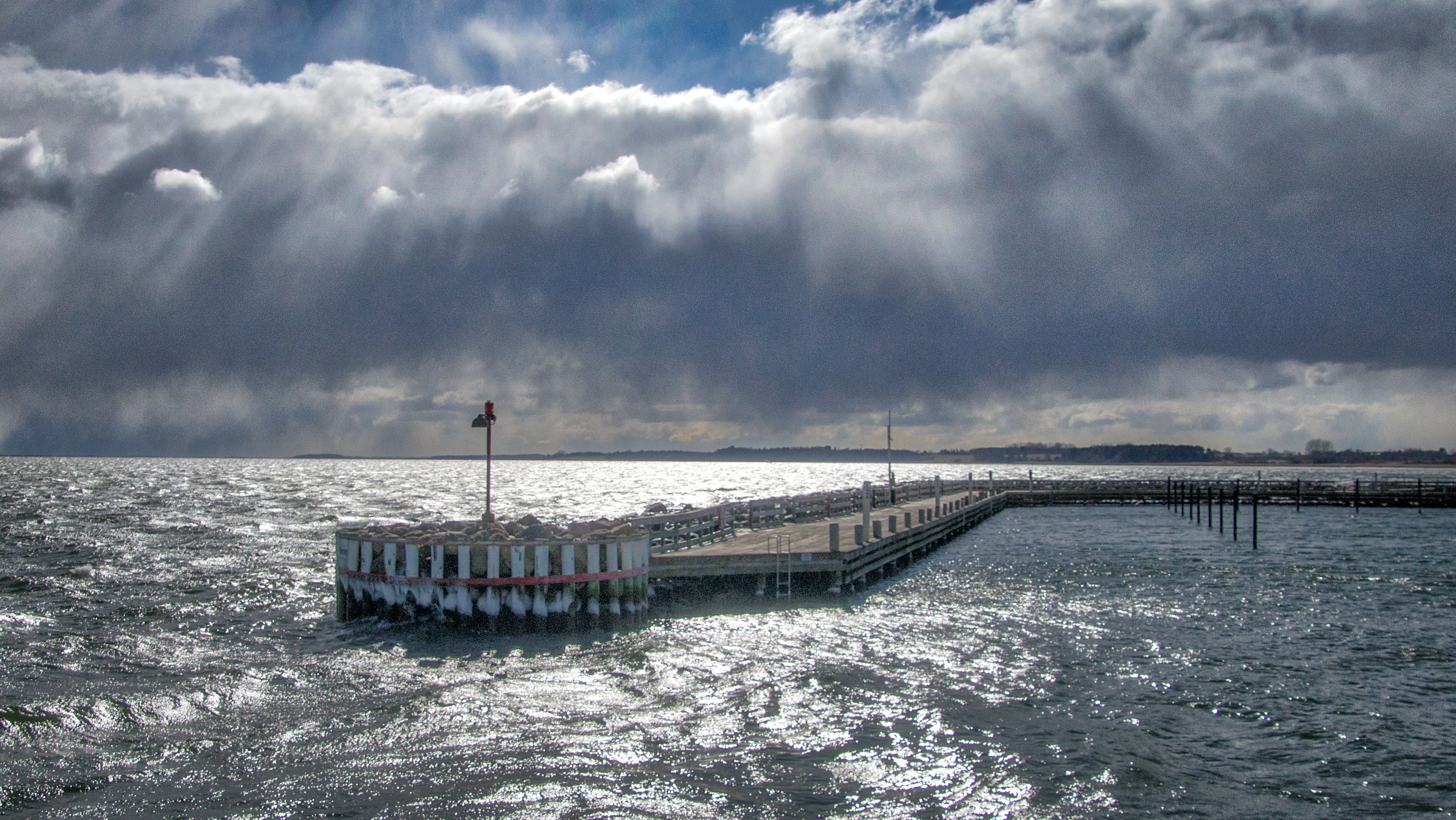
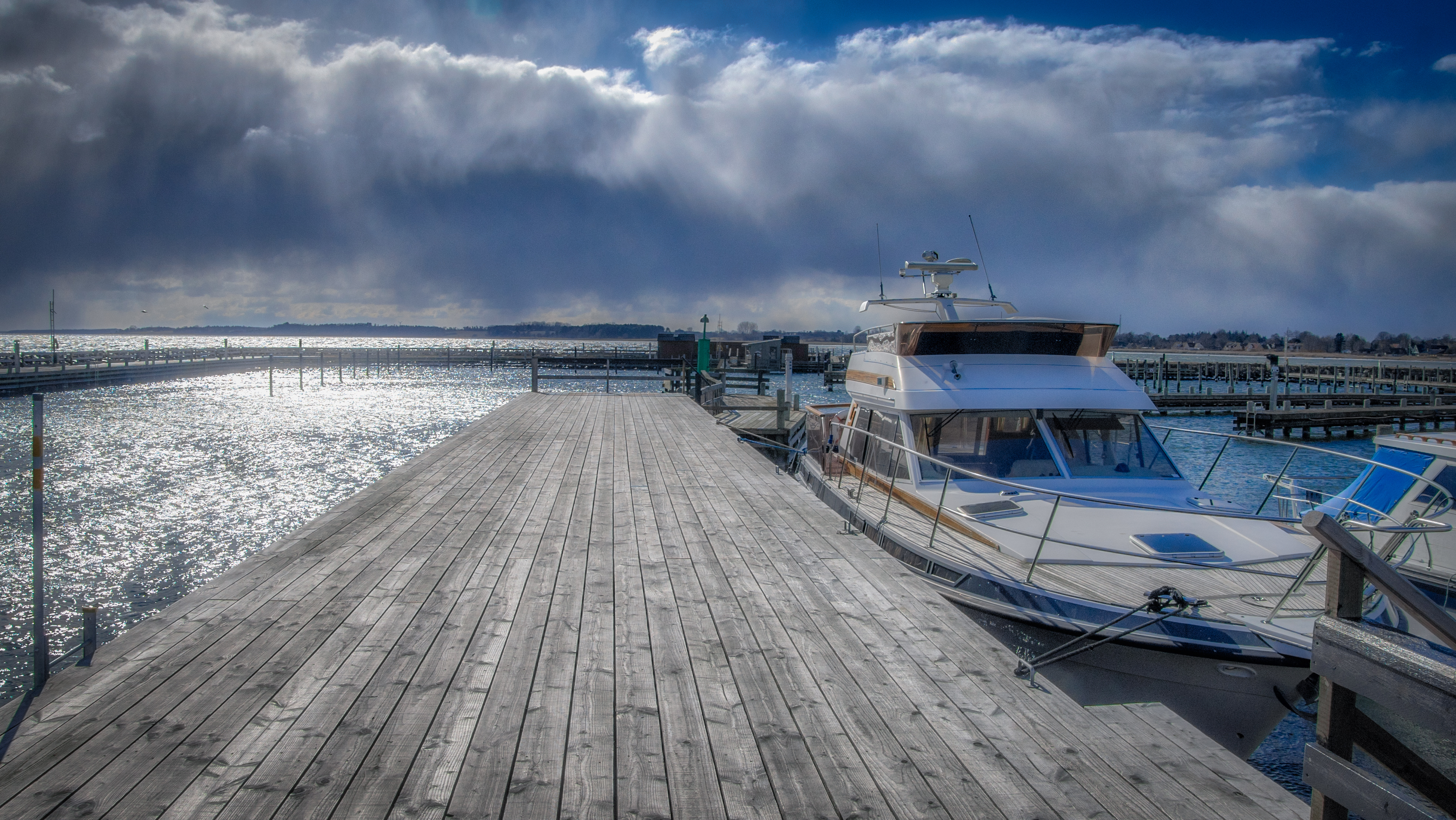 Our last stop of the day was at the old castle ruin of Næsholm, "ruin" being the keyword. There is practically nothing left of whatever it once was, but it was still more than worth a visit. It's located on a small island in the middle of a lake. A boardwalk bridge leads out to it, and once you are there, you are in your own tiny, little world, at peace with yourself and nature. At least, that's how I felt. Birds were everywhere, the wind was rustling in the tall grass, and there was no discernible human activity within hearing distance.
Our last stop of the day was at the old castle ruin of Næsholm, "ruin" being the keyword. There is practically nothing left of whatever it once was, but it was still more than worth a visit. It's located on a small island in the middle of a lake. A boardwalk bridge leads out to it, and once you are there, you are in your own tiny, little world, at peace with yourself and nature. At least, that's how I felt. Birds were everywhere, the wind was rustling in the tall grass, and there was no discernible human activity within hearing distance.
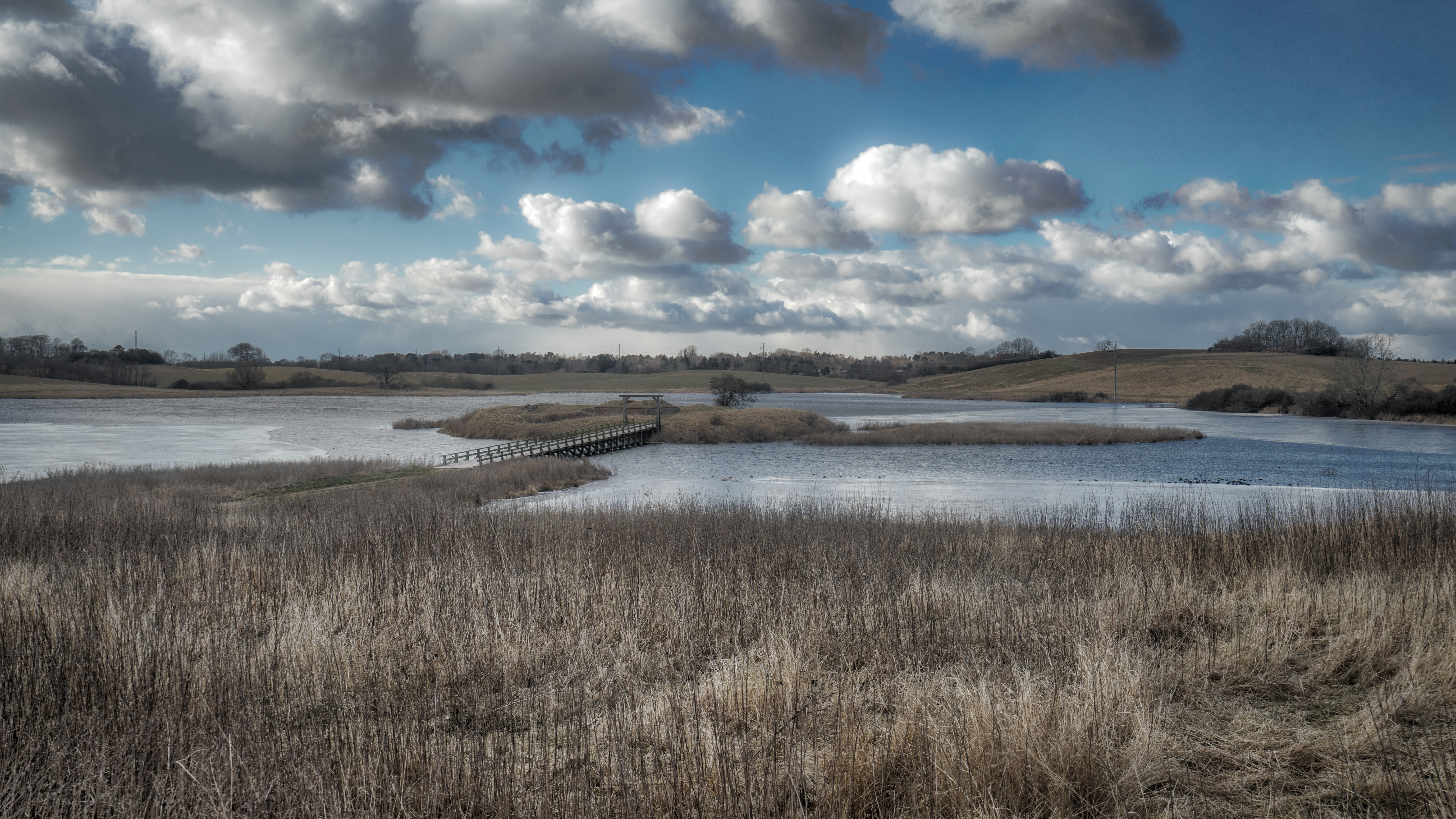 As far as the ruin is concerned, the image below pretty much shows it all.
As far as the ruin is concerned, the image below pretty much shows it all.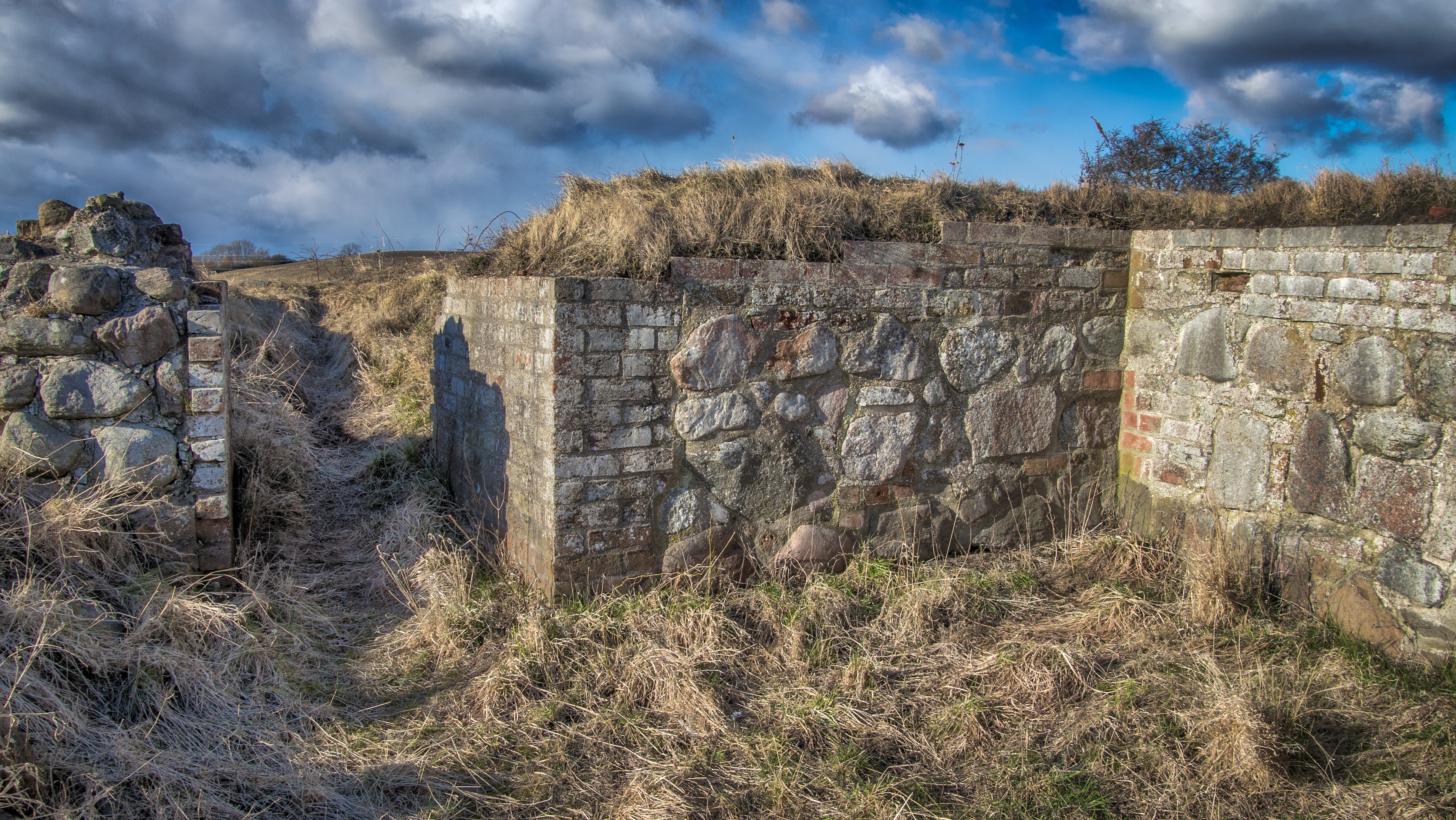 The water surrounding the lake was halfway covered with ice, making for another interesting photographic subject.
The water surrounding the lake was halfway covered with ice, making for another interesting photographic subject. After spending way too much time at Næsholm, we headed back to the hotel for some much needed warmth. It had been a busy day with lots of stops, but there were still a few places left to see. So the next - and last - day we headed out to climb some of the famous peaks of the Danish landscape. Our first stop - Esterhøj - is a whopping 89 meters above sea level (almost 300 feet!), but that didn't stop us. We donned our ropes and helmets and walked up the stairs to the top.
After spending way too much time at Næsholm, we headed back to the hotel for some much needed warmth. It had been a busy day with lots of stops, but there were still a few places left to see. So the next - and last - day we headed out to climb some of the famous peaks of the Danish landscape. Our first stop - Esterhøj - is a whopping 89 meters above sea level (almost 300 feet!), but that didn't stop us. We donned our ropes and helmets and walked up the stairs to the top.
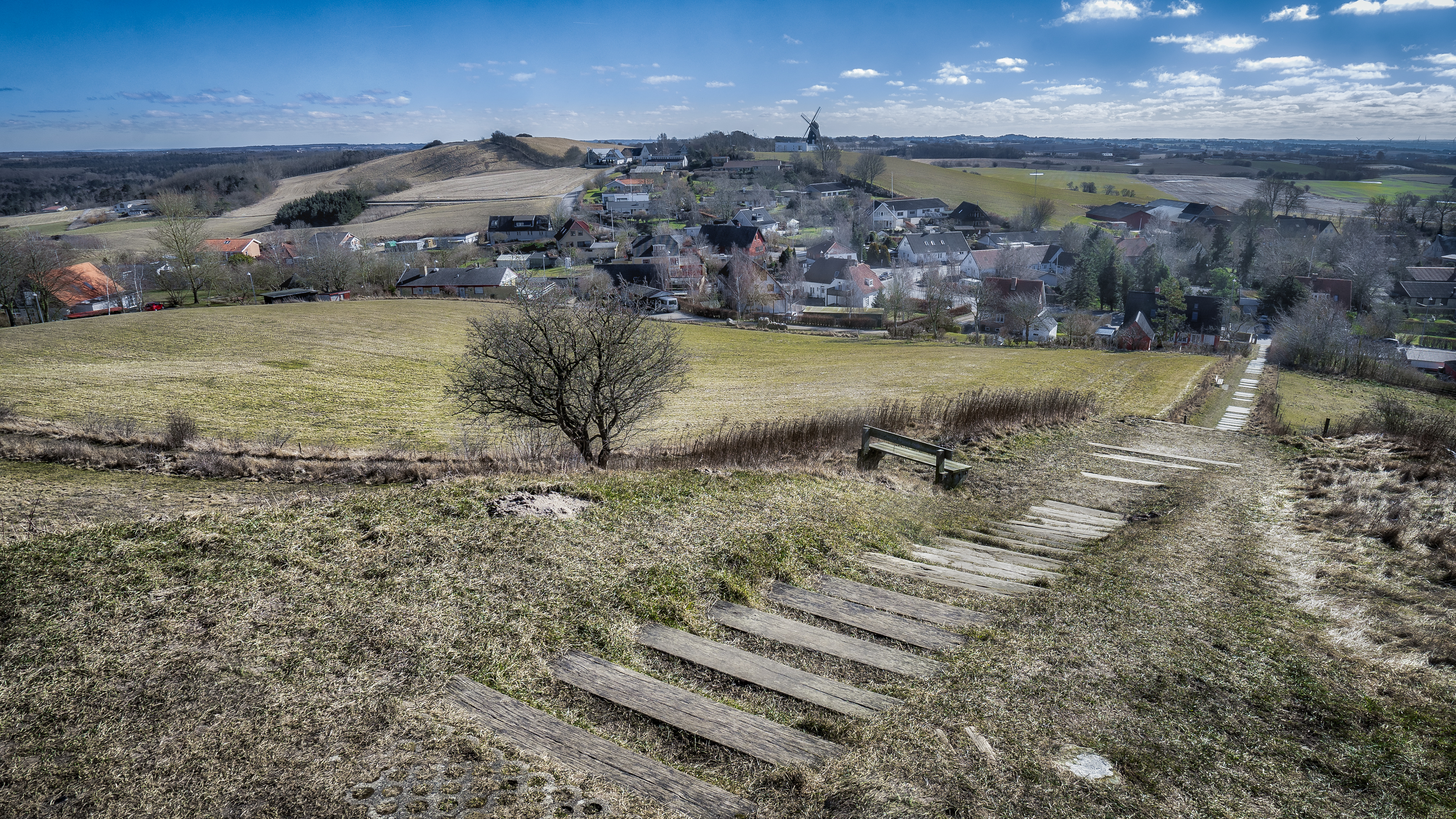 The view was actually quite awesome. It was a clear day, and you could see for miles in all directions. The problem, photography-wise, was the harsh middle-of-the-day light and the fact that big, rather featureless landscapes don't make for great images. There are no majestic mountains to serve as a backdrop. On this day there weren't even some dramatic clouds to spice things up.
The view was actually quite awesome. It was a clear day, and you could see for miles in all directions. The problem, photography-wise, was the harsh middle-of-the-day light and the fact that big, rather featureless landscapes don't make for great images. There are no majestic mountains to serve as a backdrop. On this day there weren't even some dramatic clouds to spice things up.
So what I did was to listen to the miniature Thomas Heaton I've got sitting on my shoulder and look for the small, interesting details in the landscape. I put on my 18-270 mm Tamron lens, zoomed it all the way in and scanned the landscape for compositions. And came up with this:
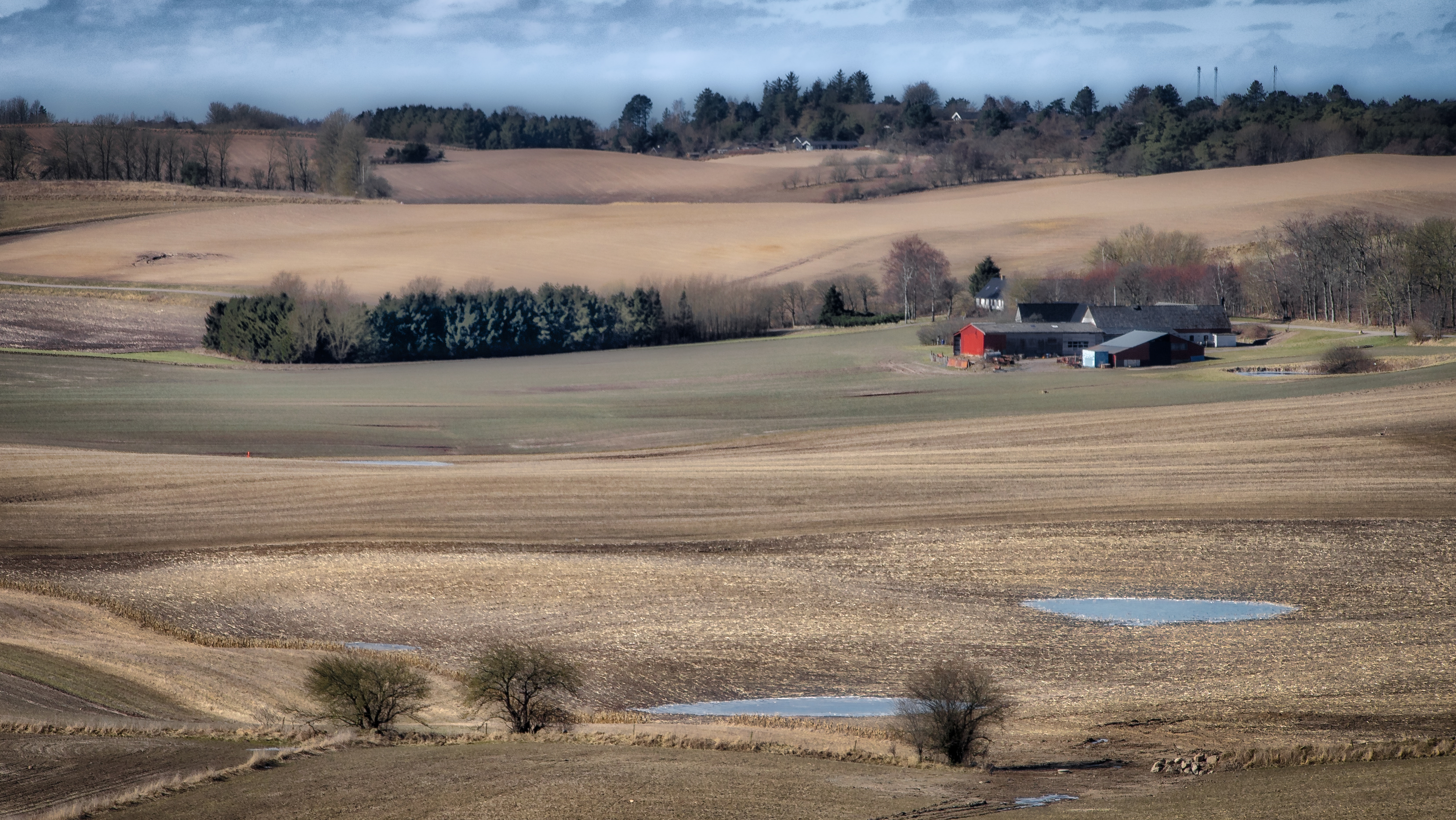 I'm actually quite pleased with it. The lens is not the sharpest in my collection, but what the image doesn't have in sharpness, it makes up for in zen-ness.... or something.
I'm actually quite pleased with it. The lens is not the sharpest in my collection, but what the image doesn't have in sharpness, it makes up for in zen-ness.... or something.
I used the same procedure for the next image, which was taken from the top of another famous hilltop, Vejrhøj. Again, the sharpness leaves a lot to be desired, but there was something about the shape of the coastline that intrigued me. And look at those white waves. They were actually moving offshore in the strong eastern wind.
 The last image was taken walking off down from Vejrhøj through a patch of woods. As described in my last post, taking good pictures of a dreary, gray, snow-less winter landscape is a challenge, but it's actually even harder to take pictures of a sunny, snow-less winter landscape. It's sort of neither here nor there... It's not dreary and it's not uplifting, so it easily becomes just blah... But the below image was one of the few I took in that forest that I felt pretty good about.
The last image was taken walking off down from Vejrhøj through a patch of woods. As described in my last post, taking good pictures of a dreary, gray, snow-less winter landscape is a challenge, but it's actually even harder to take pictures of a sunny, snow-less winter landscape. It's sort of neither here nor there... It's not dreary and it's not uplifting, so it easily becomes just blah... But the below image was one of the few I took in that forest that I felt pretty good about.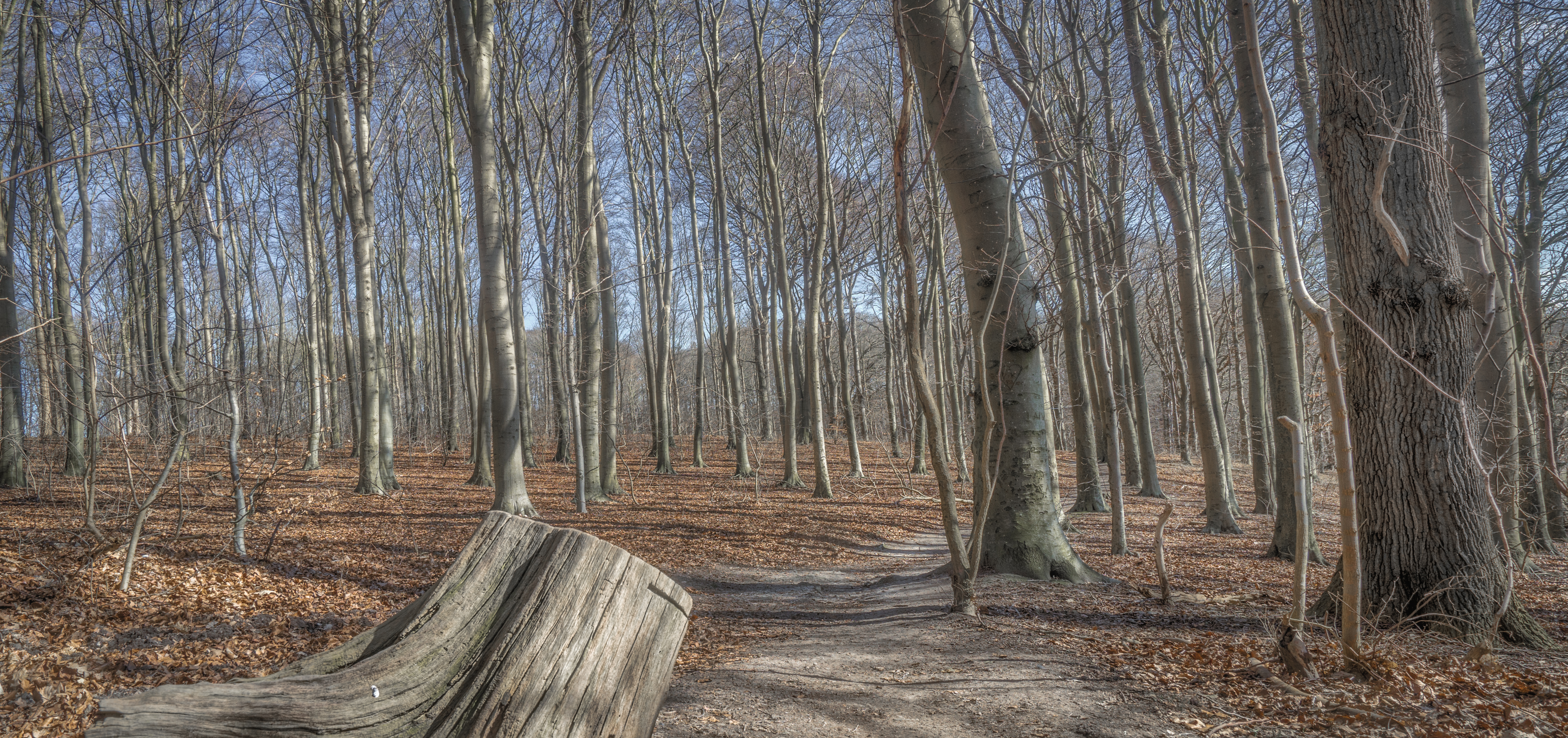 Apart from a solid lunch at a steakhouse in the town of Holbæk, thus ended our weekend adventures and, soon after, the magnetic North Pole's passage of Odsherred. As much as I enjoy just walking around my own neighborhood taking pictures of well-known locations, there is nothing like new ground far away from home to boost your motivation and skills. You don't have "tomorrow" or "tonight at sunset" to go out and improve the result. You need to get the best out of it here and now, bad light, freezing cold, and lack of time be damned.
Apart from a solid lunch at a steakhouse in the town of Holbæk, thus ended our weekend adventures and, soon after, the magnetic North Pole's passage of Odsherred. As much as I enjoy just walking around my own neighborhood taking pictures of well-known locations, there is nothing like new ground far away from home to boost your motivation and skills. You don't have "tomorrow" or "tonight at sunset" to go out and improve the result. You need to get the best out of it here and now, bad light, freezing cold, and lack of time be damned.
For all those obstacles, I think I could have done worse.
If you think I've been laying low photography-wise during the winter, you couldn't be more wrong. The months of December-February and into March have been very productive. In fact, I have taken some of the best images of my life during my numerous camera outings in recent weeks and months.
Of course, I always say that I just took the best images of my life, and I always mean it. Will the general public agree? Probably not. To the untrained and uncaring eye, my images will be the same old, same old landscapes, now with the added deterrent of desaturated colors, boring, gray skies, and downright dreariness.
But that's the point. In a country where colorful sunsets are almost as rare as mountain ranges, if a landscape photographer can't deal with the grayness of fall and snow-less winter (which lasts from June through April), he might as well sell his equipment. You'd better learn to turn gray and bare into art or you will find yourself stuck at home.
So that's exactly what I have been working on. I have seen the overcast skies and naked trees as a challenge. If I can make those look good, I can do anything. And by "good" I don't necessarily mean beautiful or appealing. The goal is to prompt an emotion other than just "blah... this is boring". Sometimes the best way to achieve that is by presenting the pure, unadulterated grayness, other times by drawing out whatever little bit of color is sometimes there if you look hard enough: those little patches of orange leaves hanging onto their branch for dear life, the green moss on a tree trunk, or an aqua colored tint in a layer of ice.
Most of the pictures in this series were taken in well-known local territory, within walking distance from my home. You would think I'd get tired of that, but it continues to amaze me how different the landscape can look in different seasons - heck, even from one day to the next. With spring and summer showing the forest in its finest green robes and extravagant prom gowns, the winter time is a piercing x-ray of what's underneath the lavishness - and sometimes that ain't pretty, but it's always fascinating.